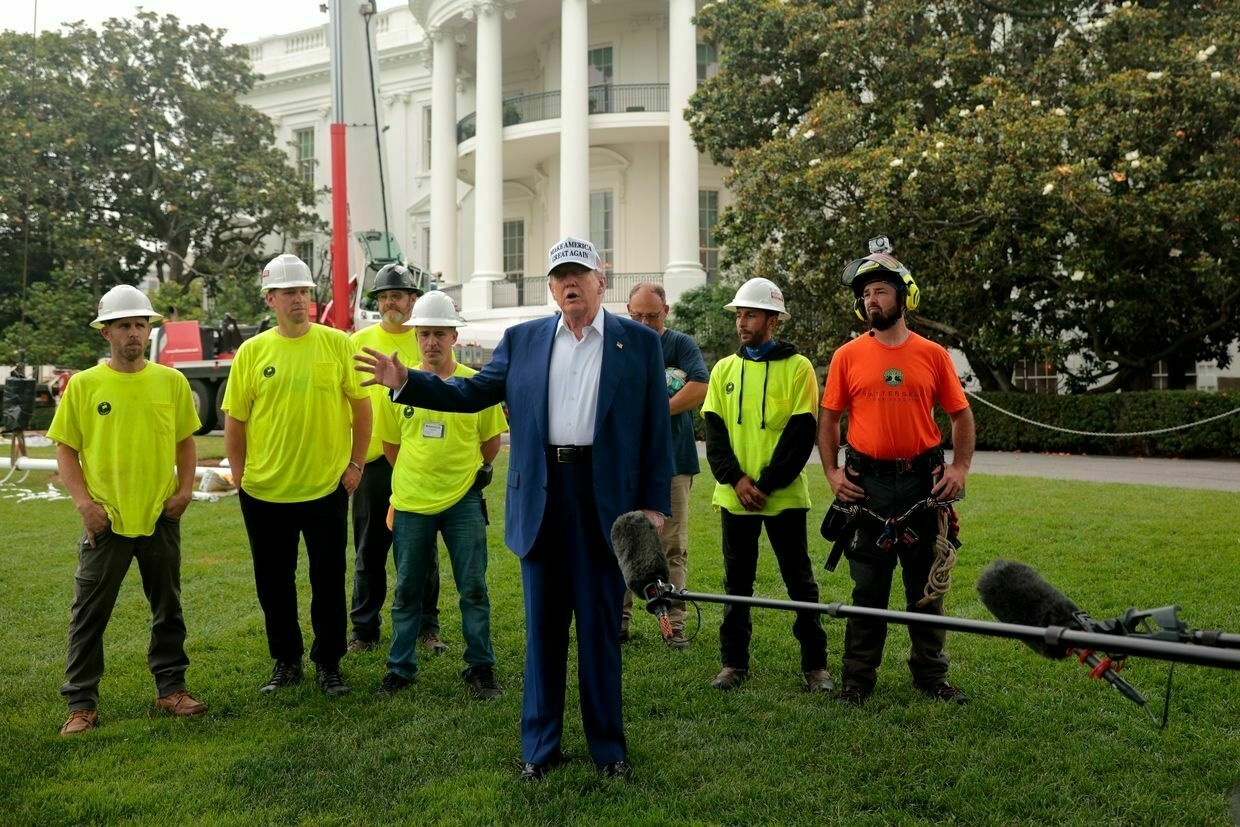-
“PEACE” from Kremlin: shelling of UKRAINE and the threat of an OFFENSIVE on EUROPE | NEWS PULSE
-
Ukraine Reforms Tracker Weekly — Issue 30
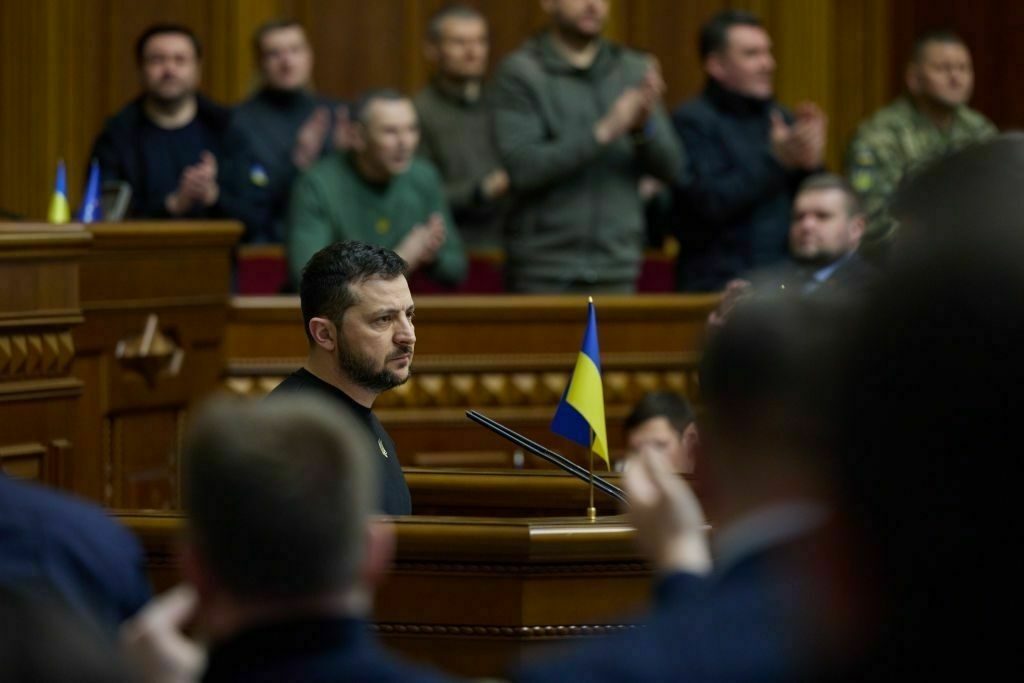
Editor’s note: This is issue 30 of Ukrainian lawmaker Yaroslav Zhelezniak’s weekly “Ukraine Reforms Tracker” covering events from June 9–June 15, 2025. The digest highlights steps taken in the Ukrainian parliament related to business, economics, and international financial programs.
The Kyiv Independent is republishing with permission.
Benchmarks and soft commitments with the IMF
Candidate implicated in corruption case shortlisted to lead Ukraine’s gas grid operatorOksana Kryvenko, director of regulation at GTSOU and a former head of Ukraine’s energy regulator, became one of seven finalists in the selection process for CEO of the Gas Transmission System Operator of Ukraine (GTSOU).
In 2024 she was appointed as advisor to the current Energy Minister Herman Halushchenko.
She is also a defendant in the Rotterdam+ case, a high-profile investigation by NABU currently under trial.
Obligations to the EUUkraine falls short on reform targets, risks 1.5 billion euros short in EU support
Ukraine has completed only three of 11 reform benchmarks due by the end of Q2, according to monitoring report of RRR4U, a consortium of Ukrainian top think tanks. Three missed structural milestones from Q1 — reform of ARMA, expanding the High Anti-Corruption Court’s staff, and restructuring territorial executive governance — could cost the country up to 1.5 billion euros in EU funding under the Ukraine Facility program.
Ukraine Parliament to consider EU-linked bіills, including ARMA reform
Ukraine’s parliament Verkhovna Rada is set to review a series of legislative initiatives this week tied to the country’s commitments under the Ukraine Facility program.
On June 18, lawmakers are expected to vote in final reading draft law #12374-d, which aims to restart Ukraine’s Asset Recovery and Management Agency (ARMA). The president’s alternative proposal, draft law #13268, is also on the agenda.
There are also several other bills on the agenda, including:
- draft law #12377 on the fundamentals of housing policy;
- presidential draft law #13302 on establishing a Specialized Administrative Court and an Appellate Administrative Court;
- draft law #9363 on the digitalization of enforcement proceedings;
- draft law #13202-1 aligning Ukraine’s agricultural support mechanisms with EU standards.
Ukraine’s parliament passes state asset agency reform crucial for EU fundingThe legislation passed with the support of 253 lawmakers “after months of obstructions… unblocking 600 million euros ($690 million) in EU funds,” lawmaker Yaroslav Zhelezniak said.The Kyiv IndependentMartin Fornusek
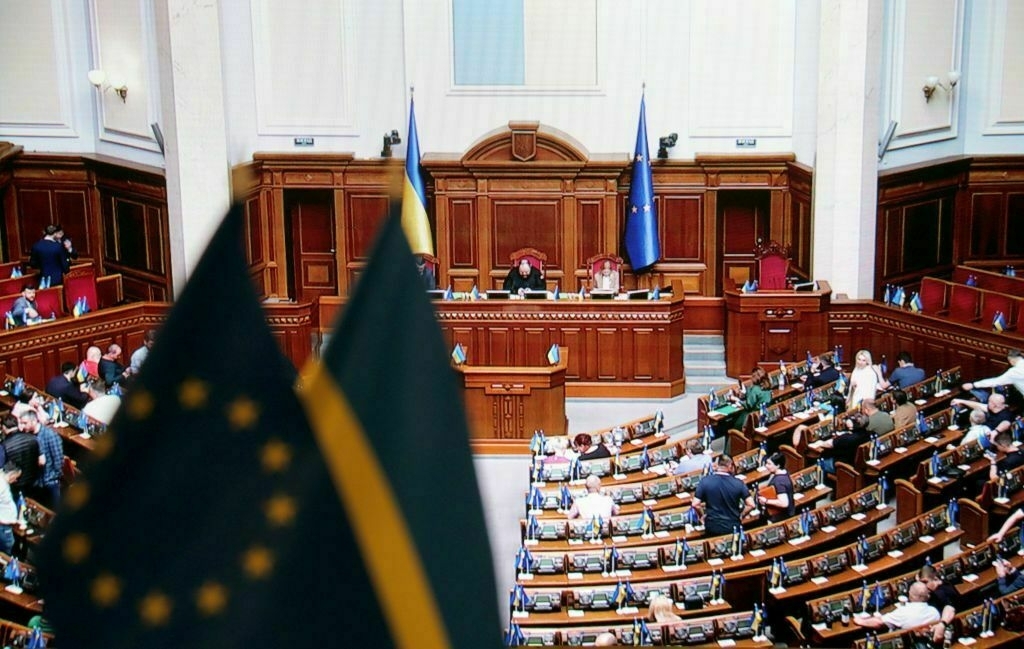
Ukraine appoints youngest Prosecutor General in country’s history
Ukraine’s Parliament on June 17 appointed Ruslan Kravchenko as prosecutor general, ending a seven-month vacancy. Kravchenko, 35, most recently headed the State Tax Service and previously served as governor of Kyiv Oblast. His appointment makes him the youngest prosecutor general in Ukraine’s history, having just reached the minimum age threshold for the role in March.
Ukraine expects Cabinet shake-up, with Svyrydenko tipped as new prime minister
The Presidential Office plans to replace Prime Minister Denys Shmyhal, with a decision reportedly finalized over the weekend, according to several sources of Yaroslav Zhelezniak. First Deputy Prime Minister Yuliia Svyrydenko is expected to be nominated as his successor. Svyrydenko seems to be the only candidate under consideration.
Before proceeding, parliament is likely to amend Article 10 of the Law on Martial Law, which currently prohibits dismissing the Cabinet during wartime. Once passed, Shmyhal is expected to resign voluntarily, clearing the way for the formation of a new government.
Ukraine’s parliament passes bill allowing multiple citizenshipUkraine’s parliament on June 18 supported a bill allowing Ukrainian citizens to hold passports of foreign countries, lawmaker Yaroslav Zhelezniak said.The Kyiv IndependentMartin Fornusek
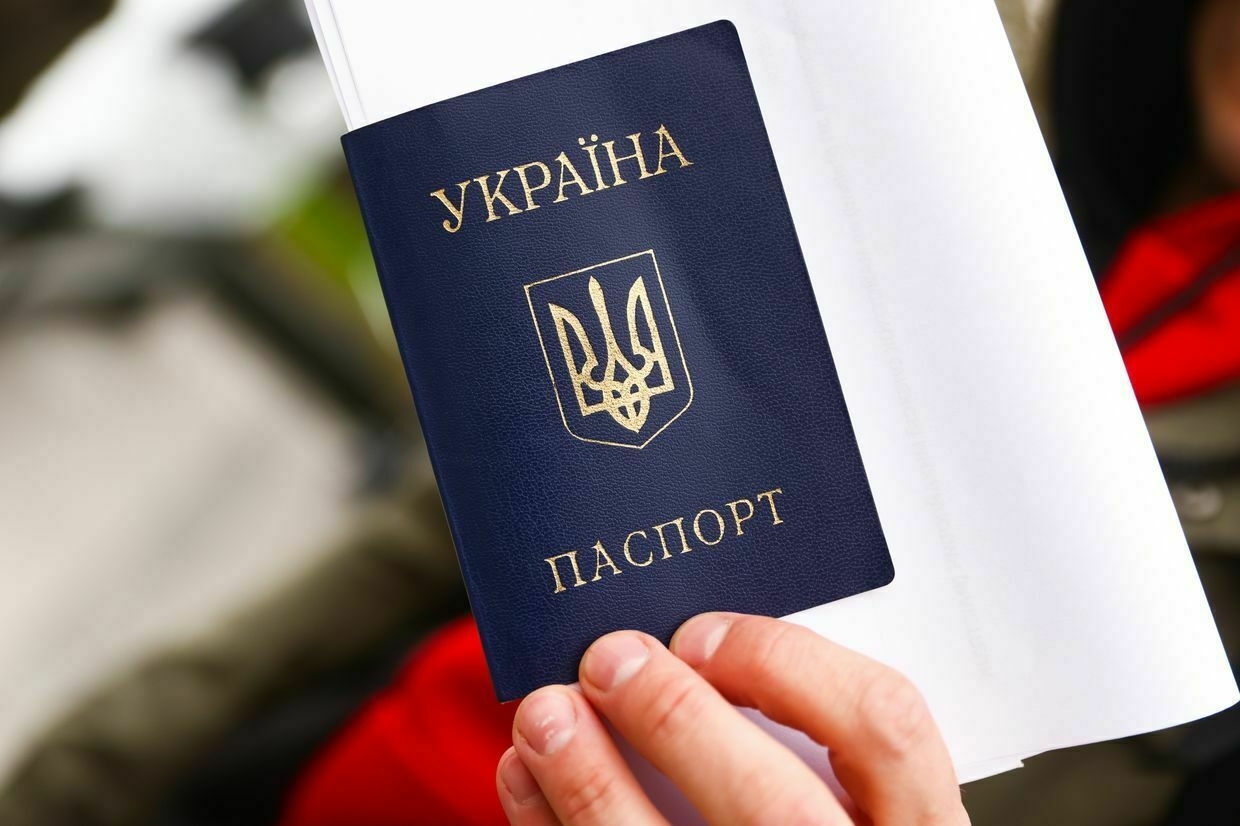
-
Spain rejects NATO 5% defense spending push, calls proposal 'unreasonable'
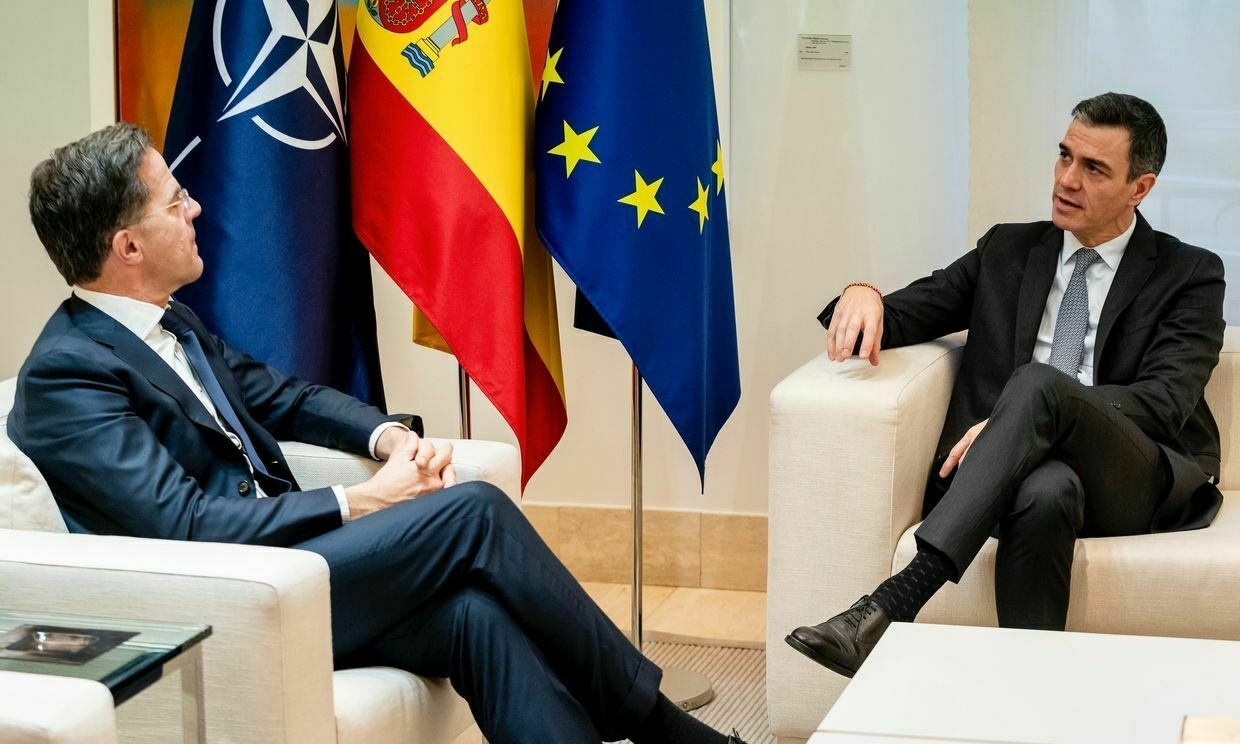
Spain has rejected a U.S.-backed proposal for NATO members to raise defense spending to 5% of GDP, becoming the first alliance country to oppose the plan, Reuters reported on June 19.
The rejection adds pressure to the transatlantic debate ahead of the NATO summit in The Hague on June 24–25, which has beenreduced to a single session focused on defense spending and alliance capabilities.
In a letter to NATO Secretary General Mark Rutte, Spanish Prime Minister Pedro Sanchez called the proposed target “unreasonable” and warned it would undermine broader European efforts to build an integrated defense ecosystem.
“Committing to a 5% target would not only be unreasonable, but also counterproductive,” Sanchez wrote, arguing it would “move Spain further away from optimal spending."
Spain estimates that its armed forces require spending equal to 2.1% of GDP to meet national military objectives, below the U.S.-endorsed threshold but above NATO’s 2% benchmark.
U.S. President Donald Trump has repeatedly accused NATO members of underfunding their militaries, pushing for raising defense spending benchmark to 5% of GDP.
While no other NATO members have formally rejected the proposal, most have remained noncommittal. Poland, the Netherlands, and Sweden have expressed willingness to consider the 5% target.
In 2024, only 23 alliance members met the 2% target, according to NATO estimates. Poland was ahead of all members with 4.12% of GDP allocated to defense, followed by Estonia (3.43%) and the U.S. (3.38%).
Rutte said on June 17 that all NATO countries are on track to meet the 2% threshold in 2025.
Spain, governed by a Socialist-led coalition, maintains a sharply different defense posture than the U.S. administration.
While Madrid supports Ukraine, it has taken a more cautious stance on the Middle East, including distancing itself from U.S. policy on Israel.
Diplomacy in crisis: G7 letdowns reveal limits to Western solidarity on UkraineKANANASKIS, Canada — The Group of Seven (G7) Leaders’ Summit ended on June 17 with no joint statement in support of Ukraine, no commitments to provide desperately needed U.S. weapons, and no meeting between President Volodymyr Zelensky and U.S. President Donald Trump. The Ukrainian delegation headed into the summit,The Kyiv IndependentDmytro Basmat
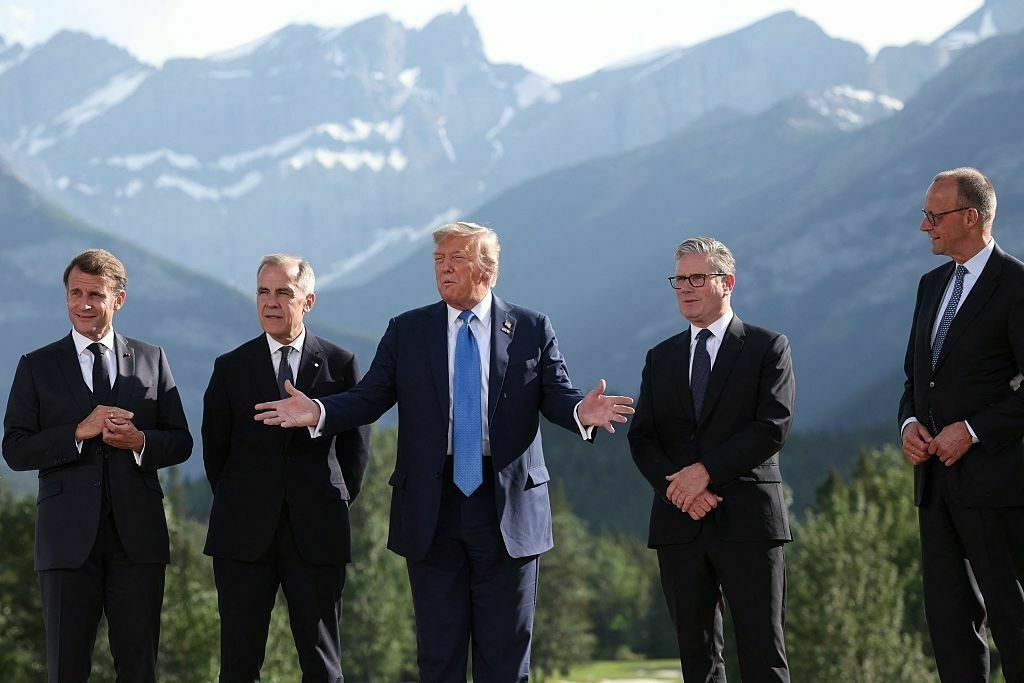
-
Trump's peace push falters in both Ukraine and the Middle East — for similar reasons
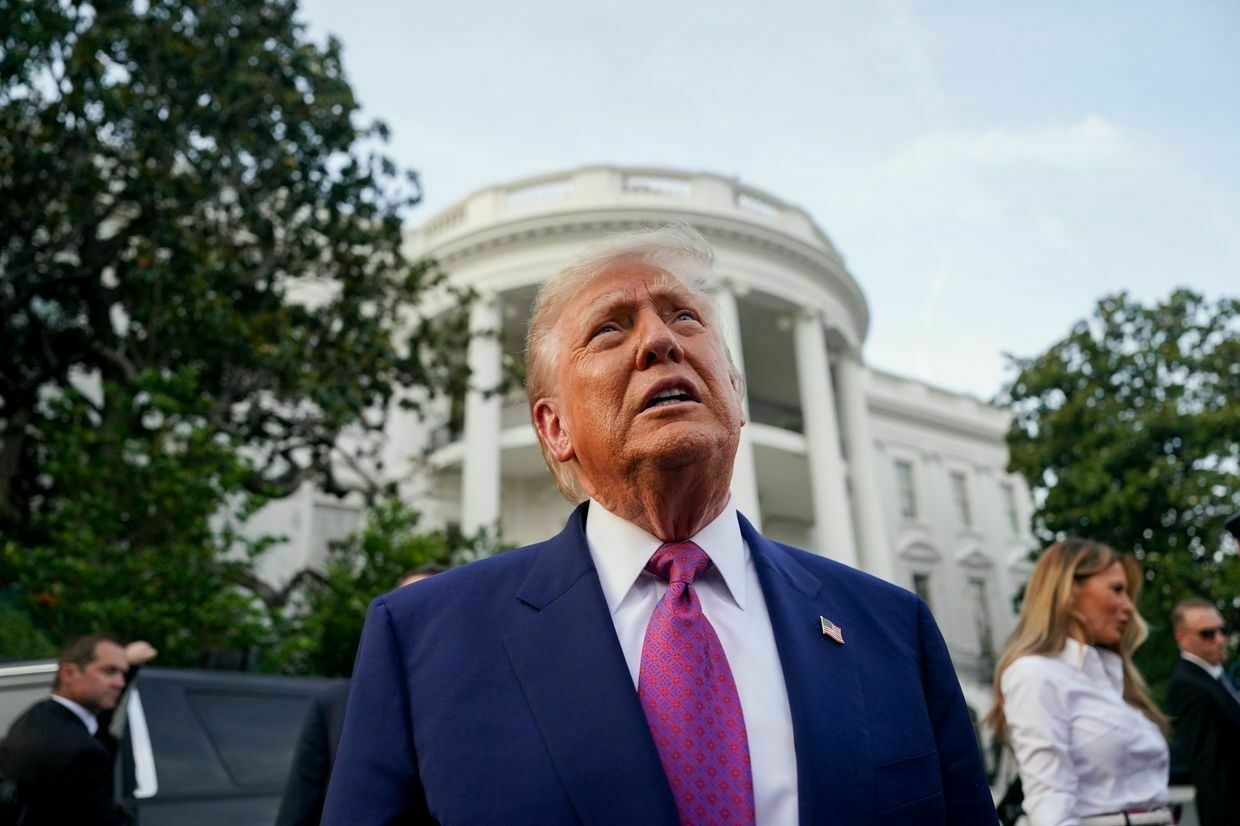
U.S. President Donald Trump addressed a wide range of subjects during his inauguration speech.
When speaking about international relations, he was adamant — “Our power will stop all wars and bring a new spirit of unity,” he said, talking about Russia’s war against Ukraine and the fighting in the Middle East.
Five months into Trump’s presidency, the wars intensify rather than end.
Israel launched a war against Iran on June 13. The war between Israel and Hamas, a terrorist organization running the Gaza Strip, continues, and Russia is stepping up its war against Ukraine.
Trump’s failure to bring peace is a result of his chaotic, incoherent and incompetent approach, analysts say.
Instead of being a genuine intermediary, Trump has pressured Ukraine rather than Russia and actively supported Israel in the multiple wars in the Middle East. And while Trump seems to have chosen a side in each conflict, he has shown a lack of strategy and long-term planning to end each of the wars he follows.
Jenny Mathers, a lecturer in international politics at the U.K.’s Aberystwyth University, told the Kyiv Independent that Trump’s “team lacks expertise and doesn’t listen to those with knowledge of the regions."
“Ultimately, his concern is not a stable or lasting peace but shoring up his own image and reputation and then monetizing these regions to enrich himself and others like him,” she added.
“Trump’s efforts are mostly performative — they might look good at the surface level, but there is very little process behind the effort.”
"This administration's approach to both (Ukraine and the Middle East) also suffers from Trump's personal impatience and his desire for quick results — he wants wins that he can take credit for, with the aim of getting past these messy conflicts and on to the money making."
Israel-Iran war could provide economic boost Russia needs to continue fight against UkraineIsrael’s “preemptive” strikes against Iran targeting the country’s nuclear program and killing top military officials could have far-reaching implications for Ukraine and could boost Russia’s ability to continue its full-scale invasion, experts have told the Kyiv Independent. Iran has been one of Russia’s staunchest allies throughout the war, providing thousandsThe Kyiv IndependentChris York
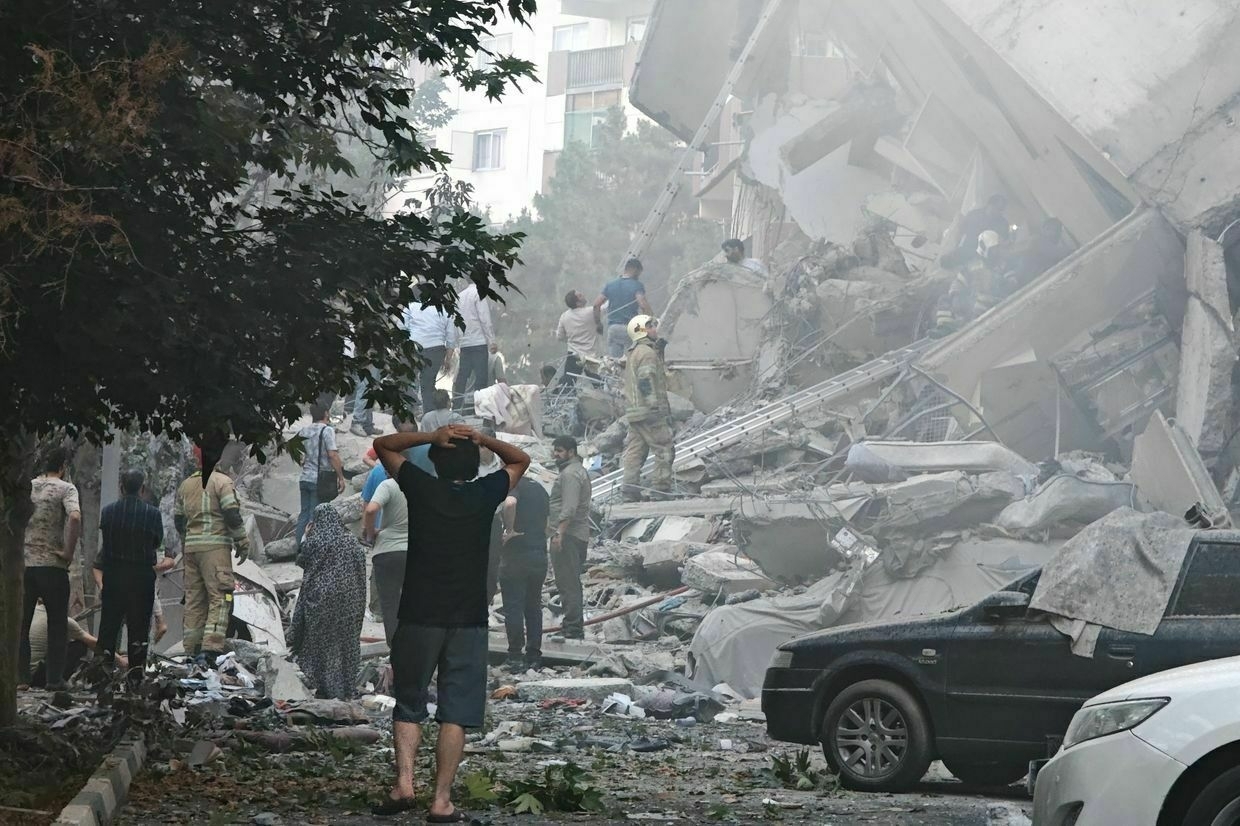
An incoherent approach in UkraineOne of the problems is that Trump lacks a coherent plan, and his statements and actions are often chaotic and contradictory.
"His approach to peace talks is highly personalized and driven by his own proclivities, rather than an evidence-based policy process," Neil Quilliam, a Middle East expert at Chatham House, told the Kyiv Independent.
"Trump's efforts are mostly performative — they might look good at the surface level, but there is very little process behind the efforts. The traditional offices of state, which would lend substance and credibility to any peace process, have been excluded, and therefore, Trump's statements are empty statements."
Mathers said that Trump "underestimates the complexity of these conflicts and the political, ideological and economic factors underpinning them."
Daniel Hamilton, a foreign policy expert at the Brookings Institution, also argued that "despite his assertion that he is a 'peacemaker,' Donald Trump is ill-at-ease with diplomacy and the kind of sustained attention and engagement that such efforts require."
Steve Witkoff, Trump's Middle East envoy who has also negotiated with Moscow on Ukraine, could not even name the Ukrainian regions illegally annexed by Russia.
"He is so focused on making lucrative deals with Russia and in the Middle East that he cannot comprehend the passions that drive either conflict and so exacerbates existing tensions rather than ameliorating them," he added.
Regarding Russia's war against Ukraine, Trump's aides, including his Ukraine envoy Keith Kellogg, had prepared a strategy before his return to power in January.
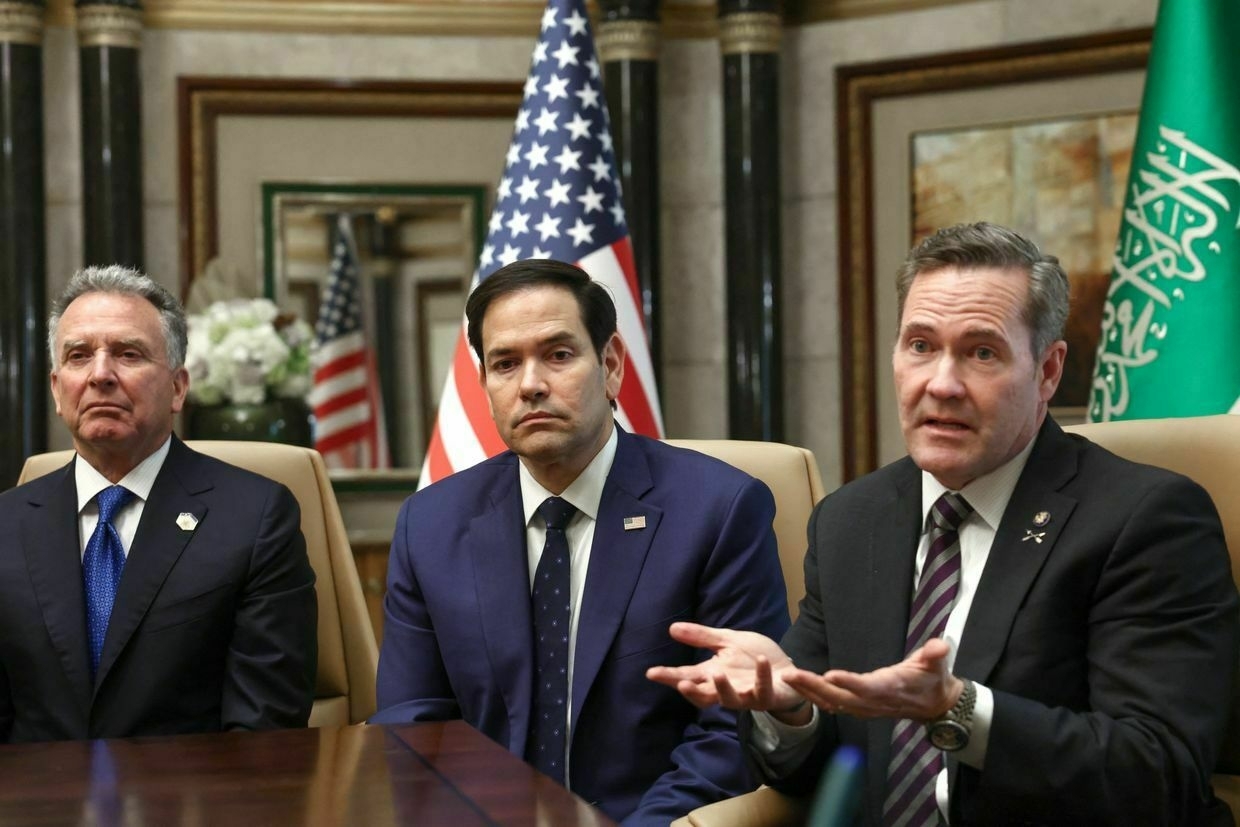
U.S. Secretary of State Marco Rubio (C), National Security Advisor Mike Waltz (R), and Middle East Envoy Steve Witkoff (L) in Riyadh, Saudi Arabia, on Feb. 18, 2025. (Evelyn Hockstein / AFP via Getty Images) Under the plan, the U.S. would cease military aid to Ukraine unless it agreed to hold peace negotiations with Russia. On the other hand, the U.S. would increase its military support for Ukraine if Russia refused to accept a peace deal.
Instead of sticking to the plan, Trump has refused to increase military aid to Ukraine or sanction Russia despite Moscow's refusal to accept a ceasefire. He has also vacillated between criticizing the Kremlin and praising Russian President Vladimir Putin.
"Part of the problem is that (Trump) sends mixed messages," Roland Paris, a professor of international affairs at the University of Ottawa, told the Kyiv Independent. "U.S. support for Ukraine has been on-again, off-again. He says he wants a peace agreement but also muses about letting Ukraine and Russia 'fight it out.'"
Incompetence has also been a factor.
In a March interview, Steve Witkoff, Trump's Middle East envoy who has also negotiated with Moscow on Ukraine, could not even name the Ukrainian regions illegally annexed by Russia.
He also falsely claimed that residents of the regions had voted for joining Russia in 2022.
Witkoff ignored massive evidence that the so-called "referendums" were held at gunpoint with widespread voter intimidation, that there was no way of monitoring the voting and its results, and that the votes contradicted international, Ukrainian and even Russian law.
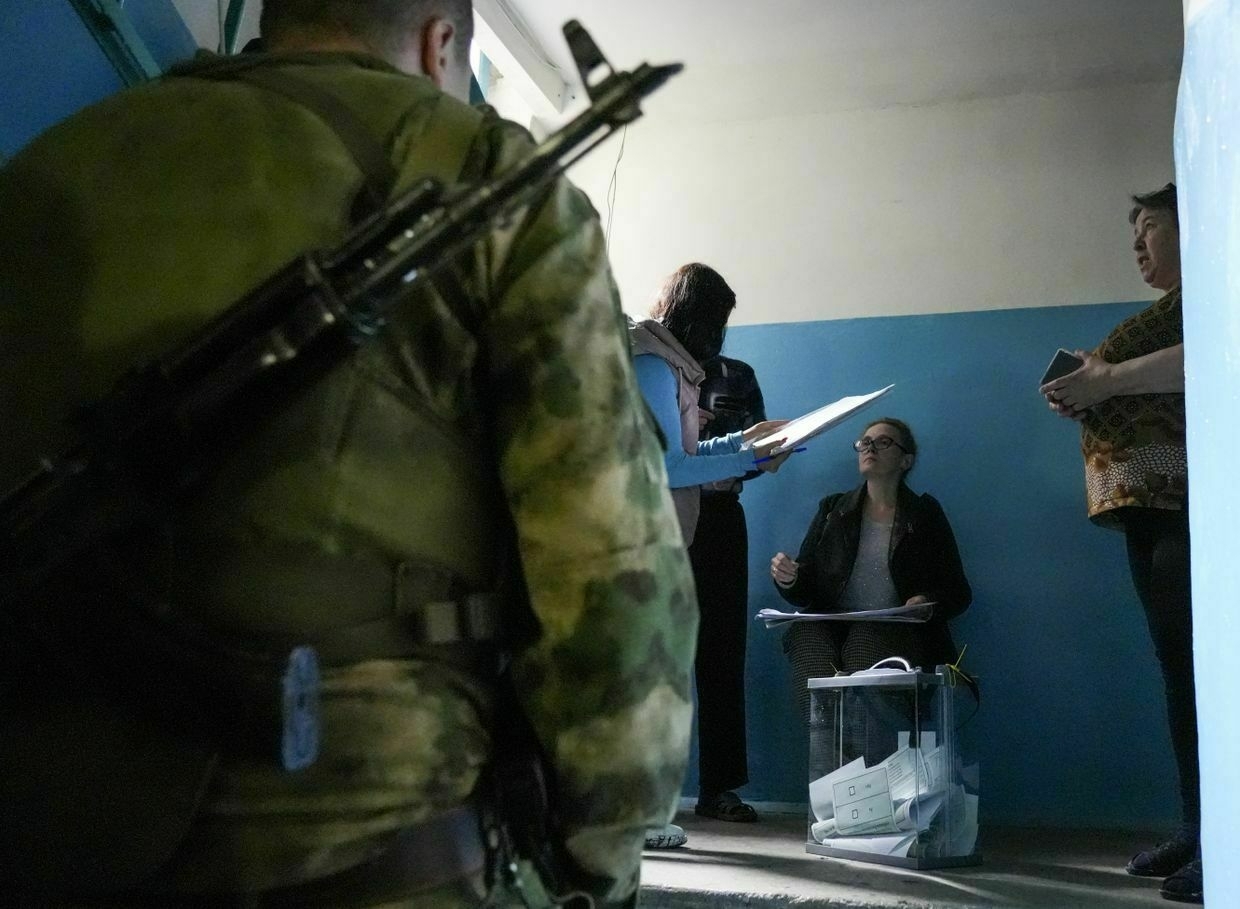
Residents cast their votes in a sham 'referendum' in Donetsk Oblast, Ukraine, on Sept. 23, 2022. (Stringer / Anadolu Agency via Getty Images) A lack of Middle East strategyIn the Middle East, Trump's team has also lacked any meaningful strategy.
On Gaza, Trump has vacillated between backing an outlandish plan to put the Gaza Strip under U.S. control and expel its residents, supporting Israel's military operation in the area, and brokering a peace deal between Israel and Hamas. The three strategies appeared to contradict each other.
His Iran policy has also been inconsistent.
In 2018, the Trump administration withdrew from a deal on ending Iran's nuclear weapons program reached by his predecessor Barack Obama.
"The Iranians remember very well what happened when they made a deal with the United States the first time — Trump just tore it up in 2018."
This did not prevent Trump from trying to negotiate a similar deal on Iran's nuclear program starting from April 2025.
"I think this track record is something that complicated Trump's attempts to reach an agreement with Iran," Aron Lund, a Middle East analyst at Century International, told the Kyiv Independent. "The Iranians remember very well what happened when they made a deal with the United States the first time — Trump just tore it up in 2018."
Quilliam said that the U.S.-Iranian "talks have hardly focused on substance, and so the meetings to date may have made some progress, but it is largely superficial."
As Trump fails to sanction Moscow, few expect breakthrough during upcoming Russia-Ukraine talksAs Ukraine and Russia prepare for peace talks scheduled for June 2 in Istanbul, few observers expect a breakthrough. While the U.S. and Ukraine have pushed for an unconditional ceasefire, the Kremlin has rejected it. Instead, Moscow has regularly voiced maximalist demands that are unlikely to be accepted byThe Kyiv IndependentOleg Sukhov
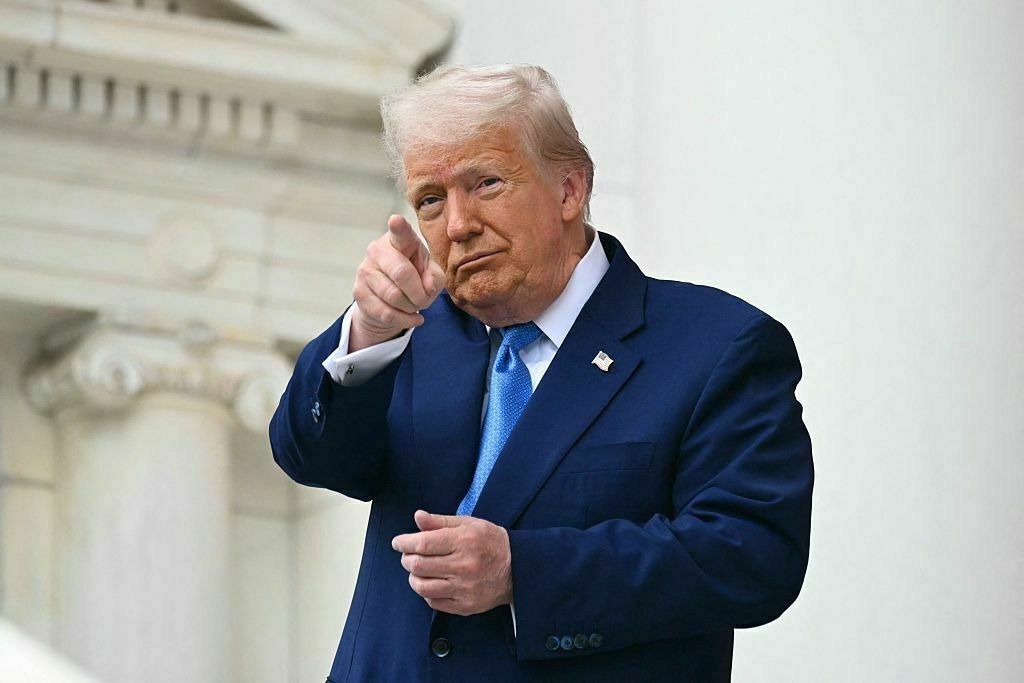
Backing RussiaAnother problem is Trump's delusional approach: calling himself an intermediary while backing one of the warring sides.
"I do see similarities in Trump's approach to peace talks in both regions," Mathers said. "In both cases, Trump has clearly picked a side: Russia in the case of the war in Ukraine and Israel in the war in Gaza and now the conflict with Iran."
She argued that, "although Trump might sometimes criticize Russia and Israel, he does not seem willing to go beyond verbal chastisement to taking concrete steps that might push those countries' leaders into changing their course of action, or at least suffering some consequences for continuing to pursue war."
In the Russia-Ukraine War, Trump has consistently favored Moscow and spurned Kyiv.
In February, Trump lashed out at President Volodymyr Zelensky during a meeting at the White House and ordered him to leave the building.
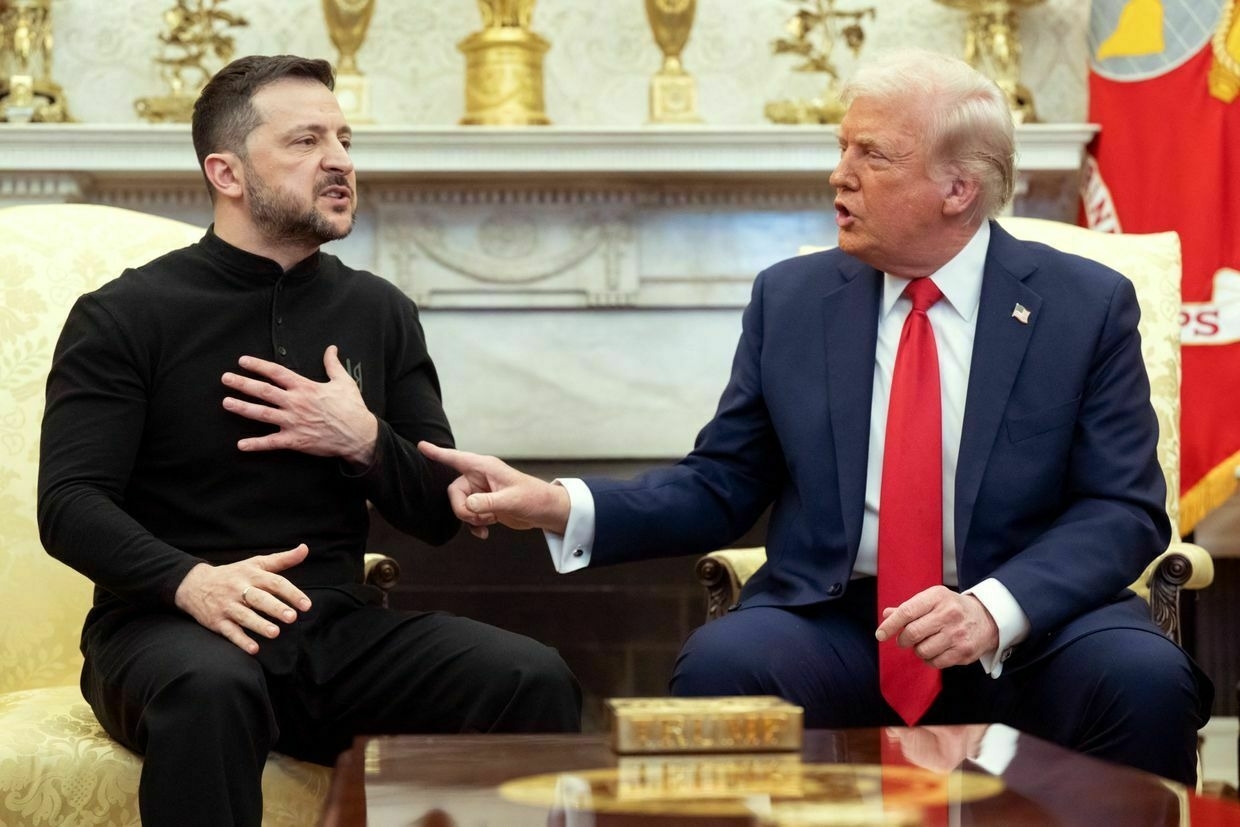
U.S. President Donald Trump and President Volodymyr Zelensky in the Oval Office of the White House on Feb. 28, 2025. (Saul Loeb / AFP via Getty Images) In the aftermath of the clash, Trump suspended military aid to Ukraine in March before resuming it a week later. Although Ukraine keeps getting U.S. aid approved under ex-President Joe Biden, no new military assistance packages have been approved since Trump took office in January.
Trump has also parroted Kremlin propaganda, including the narrative that Zelensky is an illegitimate "dictator."
Despite Russia's refusal to accept a Trump-backed ceasefire, he has so far failed to impose any new sanctions on Russia.
The Trump administration has also expressed readiness to make significant concessions to Moscow, including U.S. recognition of Russia's illegal annexation of Crimea, a ban on Ukraine's NATO membership, and lifting sanctions.
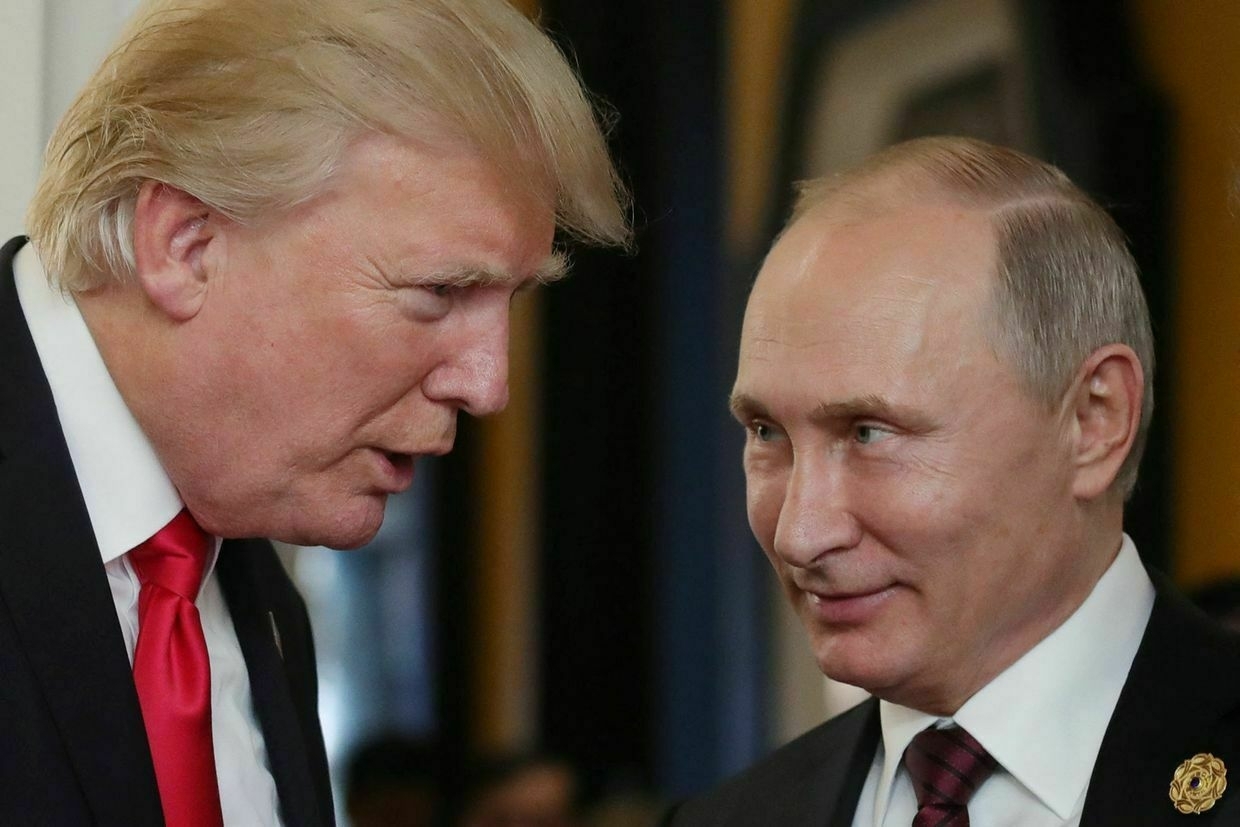
US President Donald Trump (L) chats with Russia's President Vladimir Putin (R) as they attend the APEC Economic Leaders' Meeting in Danang, Vietnam, on Nov. 11, 2017. (Mikhail Klimentyev / SPUTNIK / AFP via Getty Images) Supporting Israel in the Middle EastMeanwhile, Trump's Middle East policy has favored Israel.
The ongoing escalation in the region started in October 2023, when the Gaza-based Islamist group Hamas, an Iranian proxy, invaded Israeli territory, massacred 1,195 people, and took 251 people hostage. Hezbollah, Iran's Lebanese proxy, also joined the war.
Israel responded by invading Gaza and Lebanon. According to the Hamas-run Gaza Health Ministry, over 57,000 people have been killed in Gaza, although the Kyiv Independent could not independently verify the figure.
In November 2024, Biden's team negotiated a ceasefire between Israel and Hezbollah in Lebanon, and it is still in force.
Before he took office on Jan. 20, Trump's team also brokered the Jan. 15 ceasefire deal between Israel and Hamas in Gaza.
The deal was expected to be implemented in three stages. It envisaged exchanging all Israeli hostages held by Hamas for Palestinians held by Israel and Israel's gradual withdrawal from Gaza.
However, the agreement quickly unraveled as Israel and Hamas accused each other of violating it.
In March, Israel and the U.S. proposed extending the first stage of the ceasefire deal instead of proceeding to the second stage. Hamas refused, and Israel resumed military action as a result.
According to analysts, Israeli Prime Minister Benjamin Netanyahu was reluctant to move to the second phase because it could leave Hamas in control of the Gaza Strip. Israel's key military objective has been to eliminate Hamas to prevent attacks similar to the one carried out in October 2023.
"Israel was not ready for an end to the conflict that involved Hamas retaining a presence in Gaza," David Butter, a Middle East expert at Chatham House, told the Kyiv Independent.
Netanyahu was also afraid that his far-right allies would "blow up" the governing coalition if he fully implemented the ceasefire deal, Butter added.
Trump has not done anything to prevent the deal from collapsing or to resurrect it.
Lund said that Trump's "lack of consistency and follow-up is a huge problem."
"Trump inherited or negotiated agreements in Lebanon and Gaza, and then he just allowed them to fall apart," he said. "Israel has been pushing the envelope on these agreements, or just breaking them outright as we saw in Gaza, and there was no reaction from the White House. U.S. diplomacy related to Gaza is now completely screwed up."
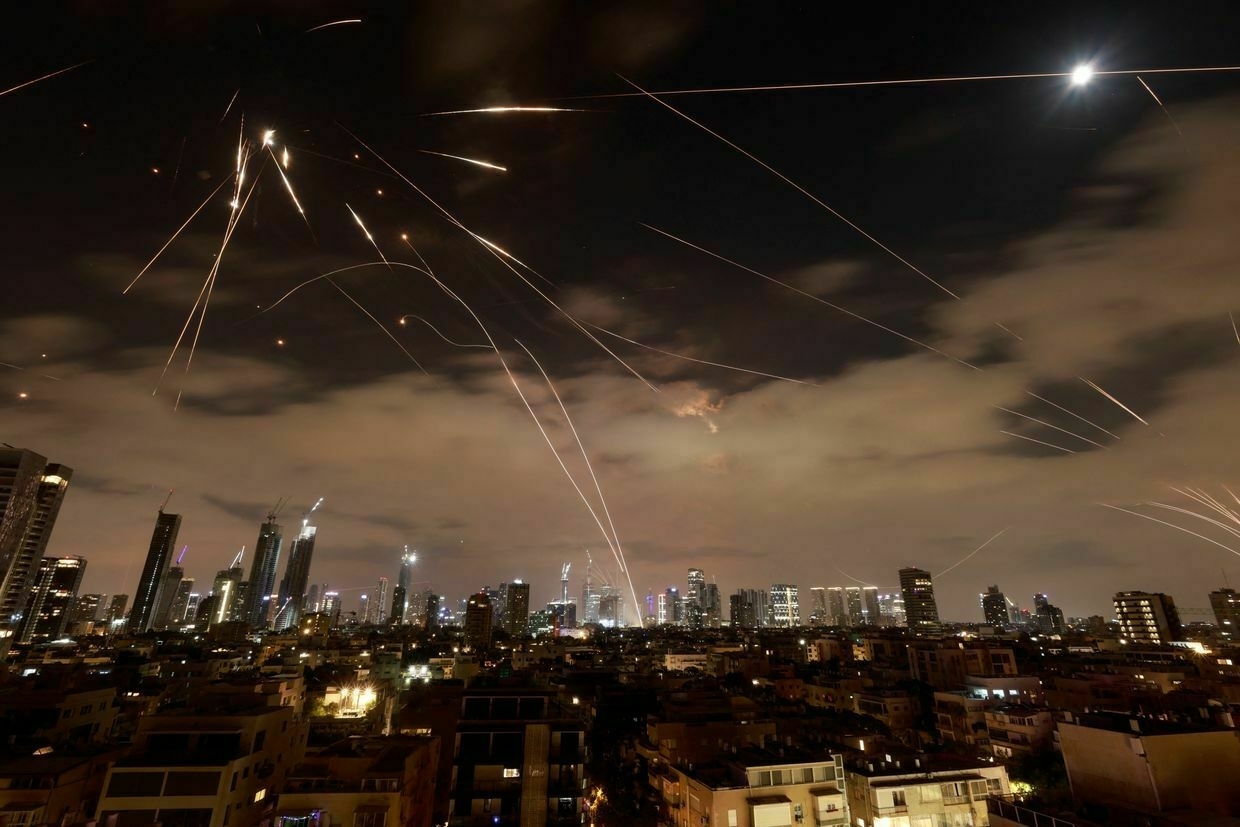
Israeli air defense systems intercept Iranian missiles over Tel Aviv during a fresh barrage on June 16, 2025. (Menahem Kahana/AFP via Getty Images) 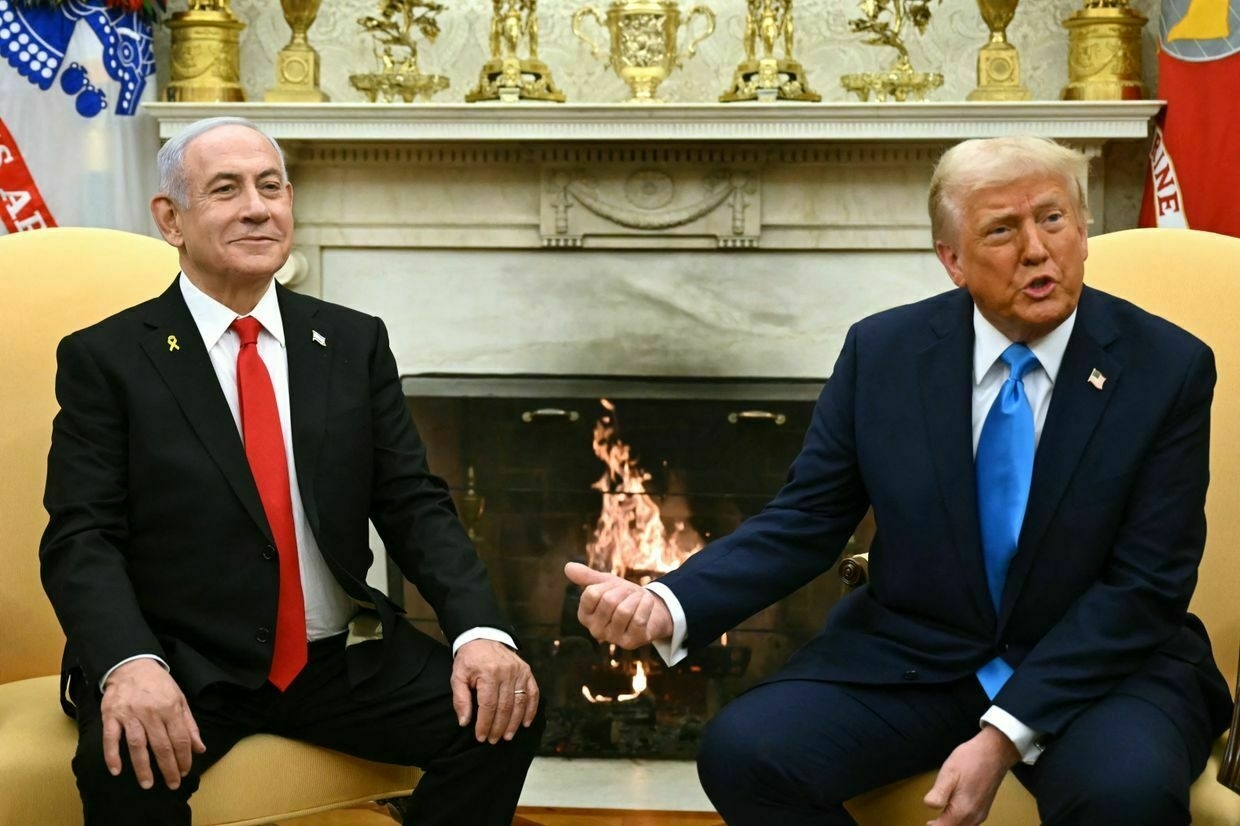
U.S. President Donald Trump meets with Israeli Prime Minister Benjamin Netanyahu in the Oval Office of the White House in Washington, D.C., on Feb. 4, 2025. (Andrew Caballero-Reynolds/AFP via Getty Images) Quilliam argued that "Trump and Witkoff have failed to bridge the gap between the Israeli government and Hamas mostly because their positions are antithetical but also because the U.S. has been unwilling to push Netanyahu to make any meaningful compromise, and the Israeli prime minister knows that he has license to act with impunity."
On the Iran issue, Trump initially tried to act as an intermediary between Iran and Israel and negotiate a deal to end Tehran's nuclear weapons program.
But then Trump appeared to have forgotten his mediation efforts when Israel attacked Iranian nuclear facilities on June 13.
Israel justified the attacks by saying that Iran was on the verge of creating a nuclear bomb. The Israeli government has sought to prevent Tehran from obtaining nuclear weapons as Iranian leaders have repeatedly called for eliminating Israel.
The International Atomic Energy Agency (IAEA) said on June 12 that Iran was in breach of its nuclear non-proliferation obligations, although IAEA Director General Rafael Grossi said in a June interview he had no proof that Tehran was currently developing a nuclear weapon.
Trump fully backed Israel's war effort.
Axios reported on June 17, citing unnamed sources, that Trump was weighing direct military action against Iran, including potential strikes on its nuclear facilities.
The same day, Trump demanded Iran's "unconditional surrender" on Truth Social and threatened Supreme Leader Ayatollah Ali Khamenei.
Lund said that "U.S. partisanship is something Israel's enemies have always complained about."
He said that, before Trump, this partisanship had had some positive effects: "It kept Washington invested in their conflicts, and it gave the United States some leverage over Israel."
"(Under Trump's predecessors) Washington constantly nudged agreements in Israel's direction, but was also able to bring Israel to the table and, sometimes, deliver an Israeli signature," Lund said.
"That's what we're not seeing under Trump, so far. It's just all partisanship and pro-Israel posturing before his domestic audience, with very little actual delivery. There's no sense that Trump will, in the end, slam his fist on the table and say this is the deal, and we're sticking to it."
Trump cuts to US weapons aid likely to hit Ukrainian civilians before front lineEditor’s note: This article was updated on March 5 to include a statement from the U.S. European Command. President Donald Trump’s freeze on weapons is alarming Ukrainians, who look to U.S. air defense to stave off the worst of Russia’s missile attacks. A White House representative onThe Kyiv IndependentKollen Post
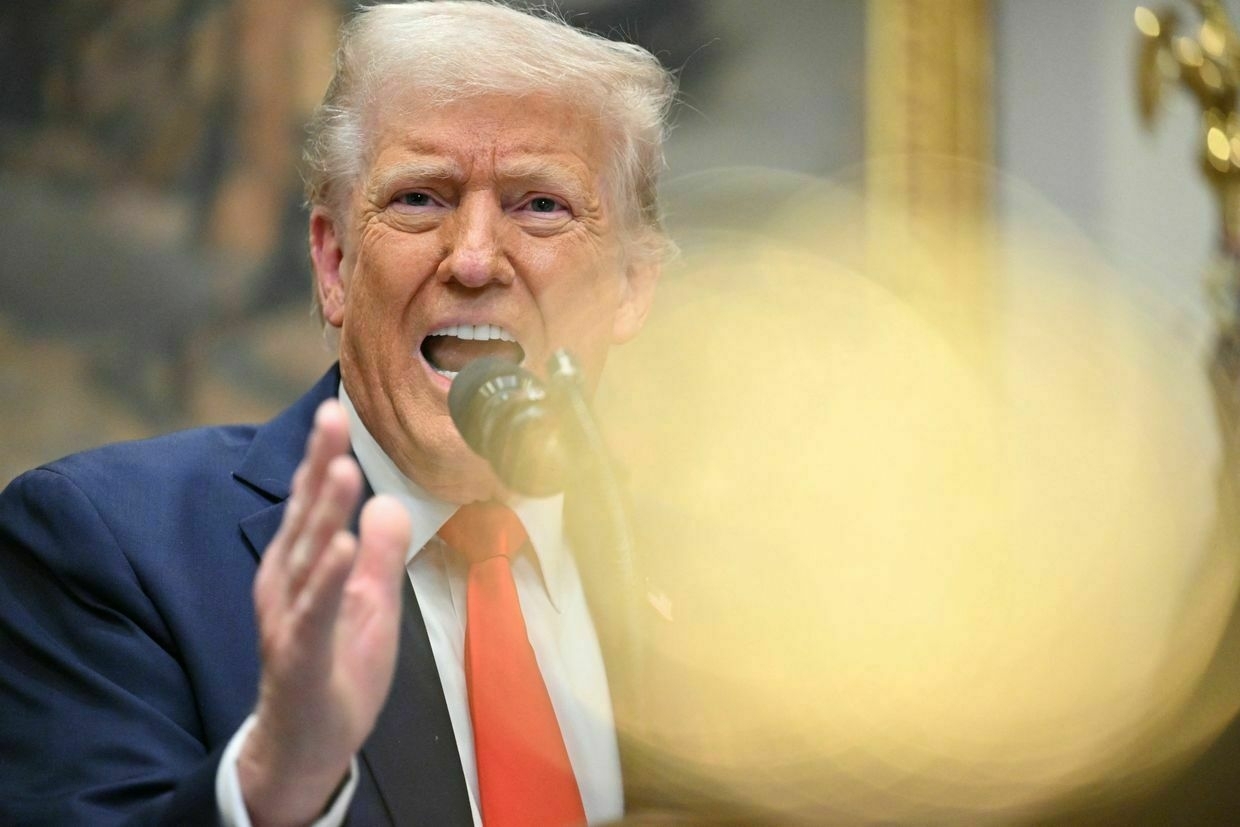
-
Russia says South Africa invited Putin to G20 summit despite ICC arrest warrant
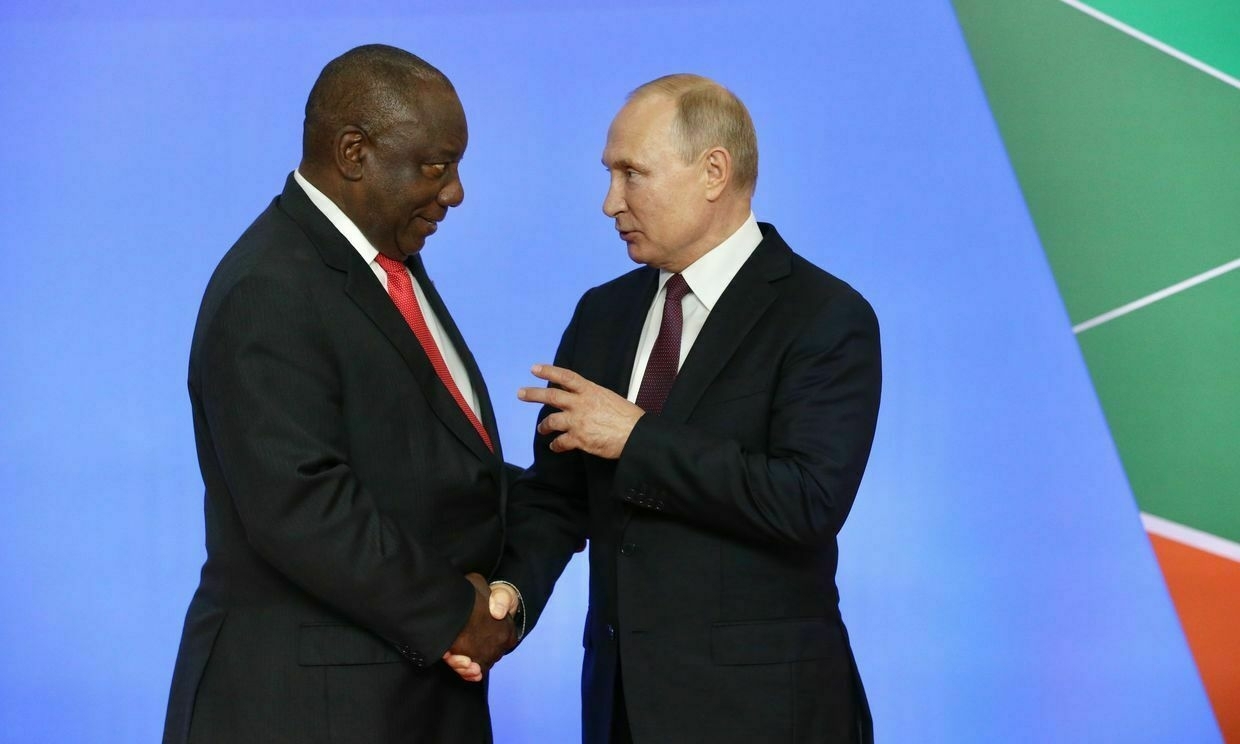
Russian President Vladimir Putin has received an official invitation to attend the G20 summit in South Africa, Russian Ambassador-at-Large Marat Berdyev said in an interview with state-owned media outlet RIA Novosti on June 19.
South Africa is a member of the International Criminal Court (ICC) and a signatory to the Rome Statute, meaning it is obliged to arrest Putin if he enters the country.
The ICC issued a warrant for the Russian leader’s arrest in March 2023 over the illegal deportation of Ukrainian children during Russia’s full-scale invasion of Ukraine.
“Last week, we received an official invitation. This is an appeal from the head of state, the president of South Africa (Cyril Ramaphosa), to his colleagues,” Berdyev said.
The summit is scheduled to take place in Johannesburg from Nov. 22 to 23. Berdyev noted that Russia’s final decision on Putin’s participation will be made closer to the date. In recent years, Russia has been represented at G20 summits by Foreign Minister Sergey Lavrov.
Despite the warrant, South Africa continues to deepen political and military ties with Moscow. In 2023, the country conducted joint naval drills with Russia and China, and maintains its membership in the BRICS bloc alongside both nations.
In November 2024, Putin skipped the G20 summit in Brazil, another ICC member state, and sent Lavrov instead. Russia’s G20 participation has continued uninterrupted despite its war against Ukraine.
In September 2024, Putin made a rare visit to Mongolia, which is also a signatory of the ICC, prompting criticism over the non-enforcement of the warrant.
Putin-Trump meeting currently not on the table, Kremlin says“Until the necessary ‘homework’ is done to remove the irritants in our relations with the United States, it makes no sense to organize a meeting,” Kremlin spokesperson Dmitry Peskov said.The Kyiv IndependentAnna Fratsyvir
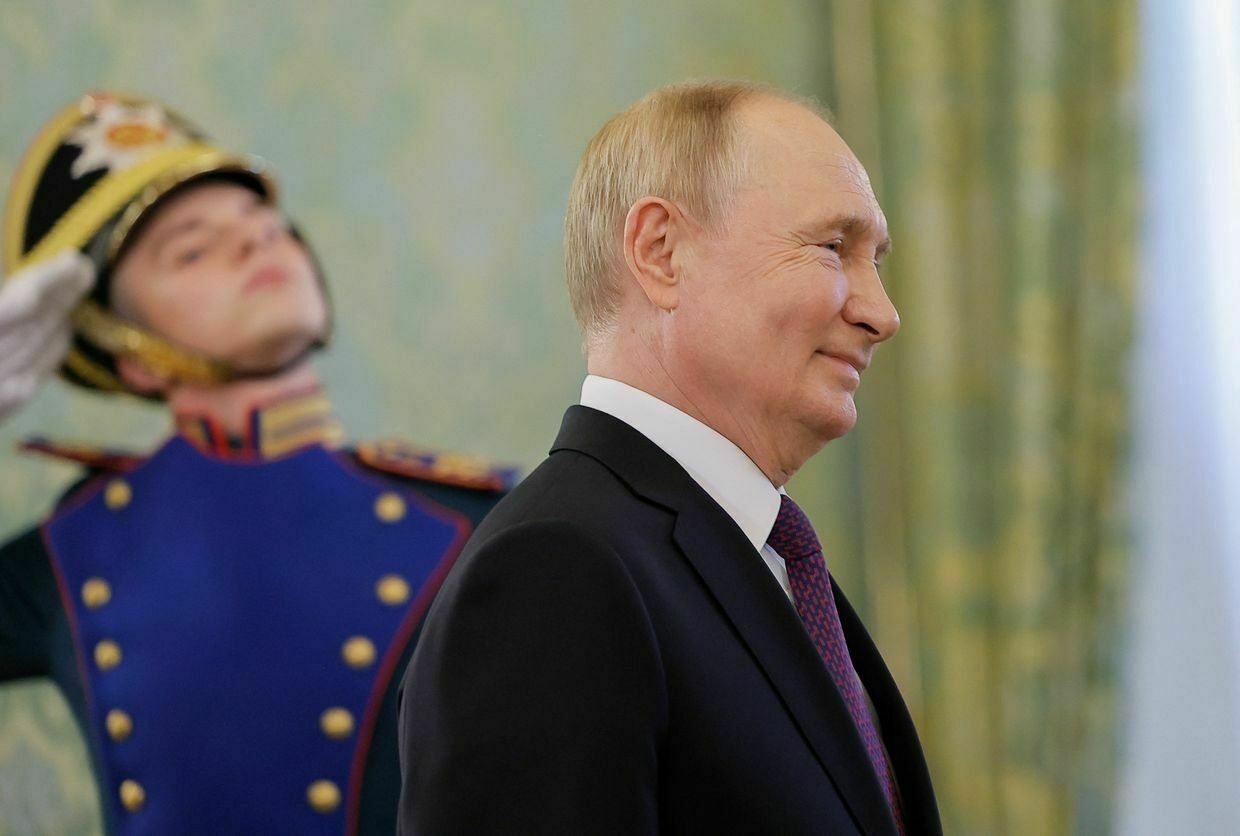
-
Ukraine returns captured fighters — hugs and tears of joy #shorts
-
Putin-Trump meeting currently not on the table, Kremlin says
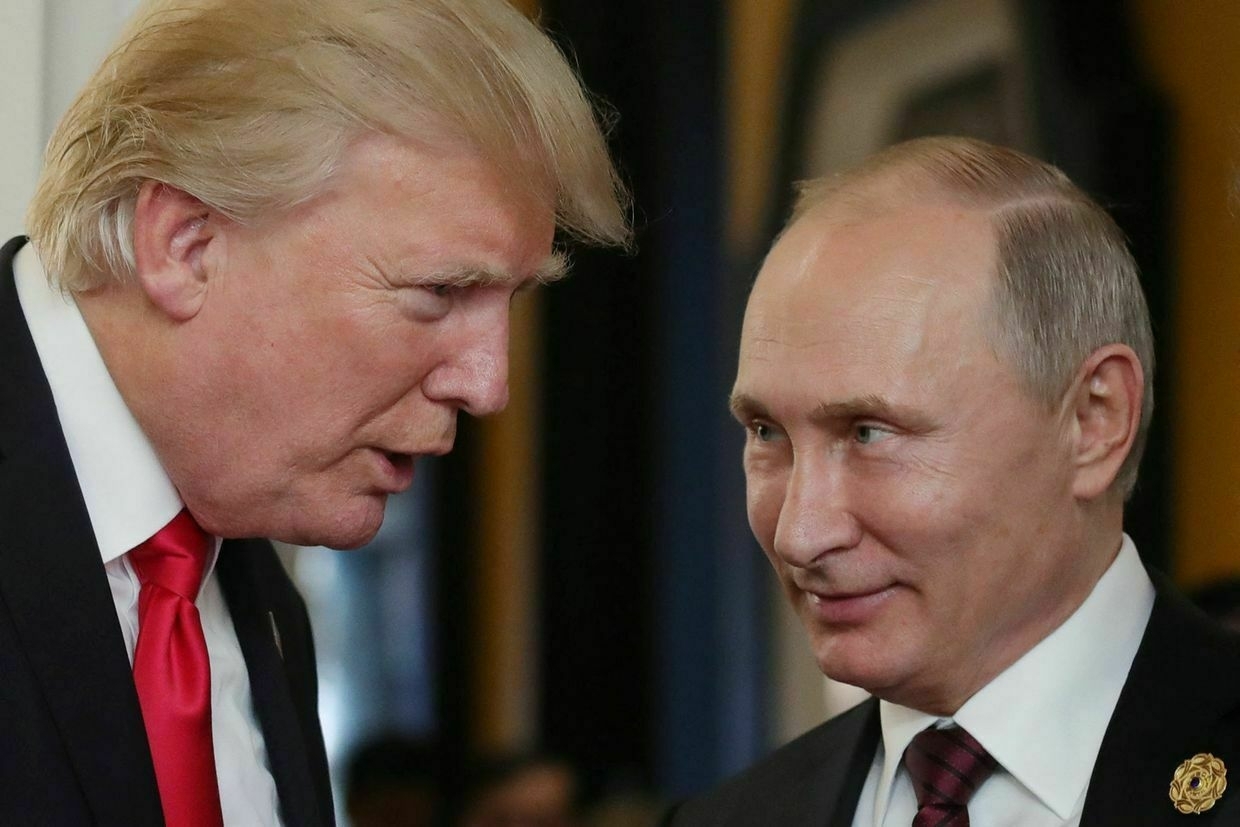
A meeting between Russian President Vladimir Putin and U.S. President Donald Trump is not currently on the table due to unresolved tensions in bilateral relations, Kremlin spokesperson Dmitry Peskov said in an interview with Russian state-controlled newspaper Izvestia on June 19.
The U.S. president has repeatedly floated the idea of meeting Putin, saying the Russia-Ukraine war cannot be resolved without them talking face-to-face. Nevertheless, the two have not met since Trump returned to the White House this January.
While Trump has adopted a more amicable policy toward Russia than his predecessor, U.S. ex-President Joe Biden, he has taken a more critical tone toward Moscow recently as Putin continues to reject a truce in Ukraine.
“Until the necessary ‘homework’ is done to remove the irritants in our relations with the United States, it makes no sense to organize a meeting,” Peskov said. He added that while talks aimed at resolving these issues had begun, progress remained minimal and the key obstacles were still in place.
His remarks come just days after the Russian Foreign Ministry claimed that Washington had canceled the next round of talks to restore diplomatic relations between the two countries.
The meetings, which were expected to take place in Moscow, were part of a broader dialogue to address ongoing disputes, including Russia’s war against Ukraine, and improve the functioning of each side’s diplomatic missions.
Russian Foreign Ministry spokesperson Maria Zakharova said the planned round was intended to “eliminate irritants,” such as staffing restrictions and banking issues for embassies. She expressed hope that the U.S. pause in talks “will not become too long."
The last two rounds of discussions, in Riyadh in February and Istanbul in April, marked the first formal diplomatic contact between the U.S. and Russia since Moscow began its full-scale invasion of Ukraine in 2022. Both sides described the Istanbul round as “constructive,” though it focused largely on technical matters.
The Trump administration has so far refrained from introducing new sanctions against Russia, despite pressure from Kyiv and growing alarm in Europe over Moscow’s continued refusal to agree to a ceasefire.
President Volodymyr Zelensky has repeatedly urged Washington to take a firmer stance, warning that “America’s silence… only encourages Putin."
After a deadly Russian attack on Kyiv that killed 28 and injured over 130 people, Trump remained silent, with the U.S. Embassy only issuing a late statement denouncing the attack.
’100 days of Russian manipulations’ — Ukraine blasts Moscow over disregarding US ceasefire effortA hundred days since the U.S. and Ukraine agreed on a ceasefire, “Russia continues to choose war,” Foreign Minister Andrii Sybiha said on June 19, urging international pressure to push Moscow toward peace.The Kyiv IndependentMartin Fornusek
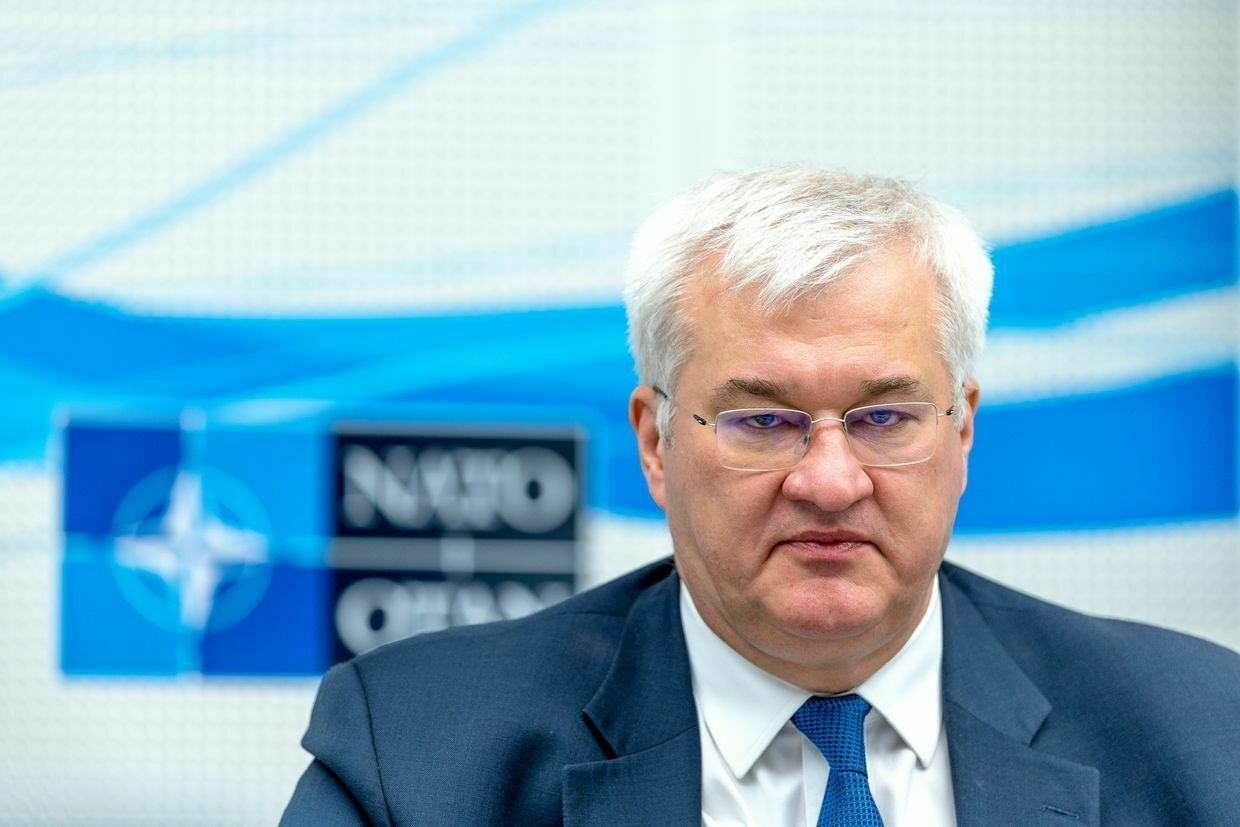
c -
Ukraine, Russia carry out another POW exchange under Istanbul deal
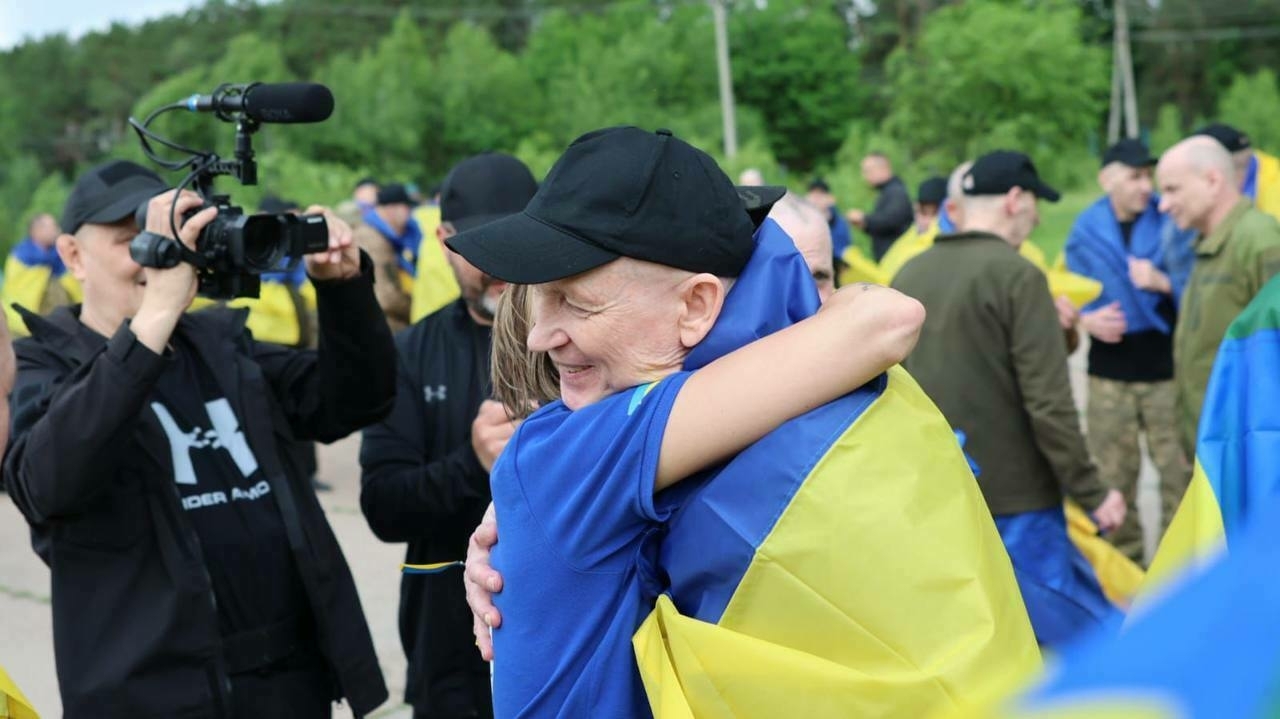
Editor’s note: The story is being updated.
Ukraine has brought home a group of soldiers released from Russian captivity, President Volodymyr Zelensky announced on June 19, marking yet another in a recent series of exchanges with Moscow.
“These are soldiers of the Armed Forces, the National Guard, and the State Border Guard Service. Most of them have been in captivity since 2022,” Zelensky said, without revealing their numbers.
The exchange follows four similar swaps carried out last week in accordance with Ukraine-Russia agreements reached at peace talks in Istanbul on June 2. As in the other recent cases, the latest swap focused on severely ill and wounded prisoners of war (POWs), Ukraine’s Coordination Headquarters for the Treatment of POWs said.
Russia’s Defense Ministry also announced a prisoner exchange with the Ukrainian side, without specifying the number of soldiers involved.
“Every defender released today has serious medical diagnoses and illnesses resulting from their injuries and captivity,” the Coordination Headquarters said.
A significant part of the released captives defended Mariupol during the Russian siege in 2022, while others fought elsewhere in the Donetsk, Luhansk, Kherson, Kharkiv, Sumy, Chernihiv, Zaporizhzhia, and Kyiv oblasts. All of them are privates or non-commissioned officers.
The oldest of the released captives was 63 years old, Ombudsman Dmytro Lubinets said, adding that another, a 45-year-old service member, was released on his birthday.
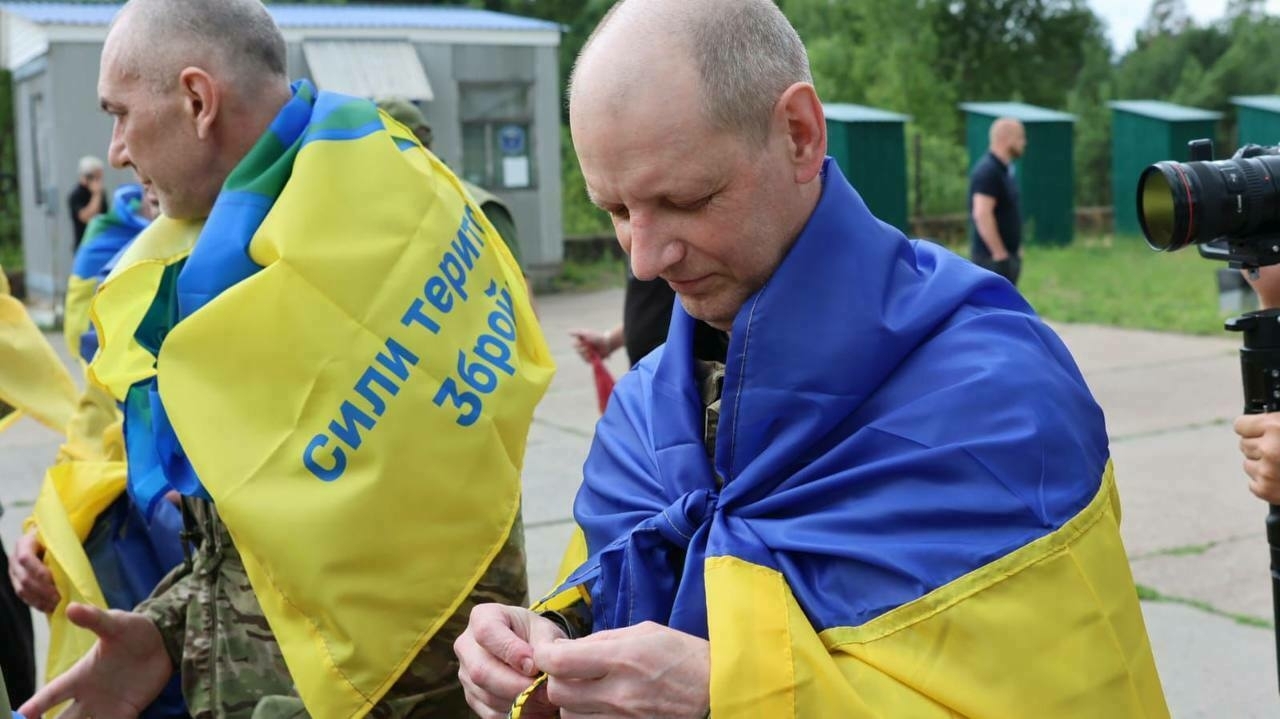
Ukrainian soldiers after being released from Russian captivity on June 19, 2025. (President Volodymyr Zelensky/Telegram) 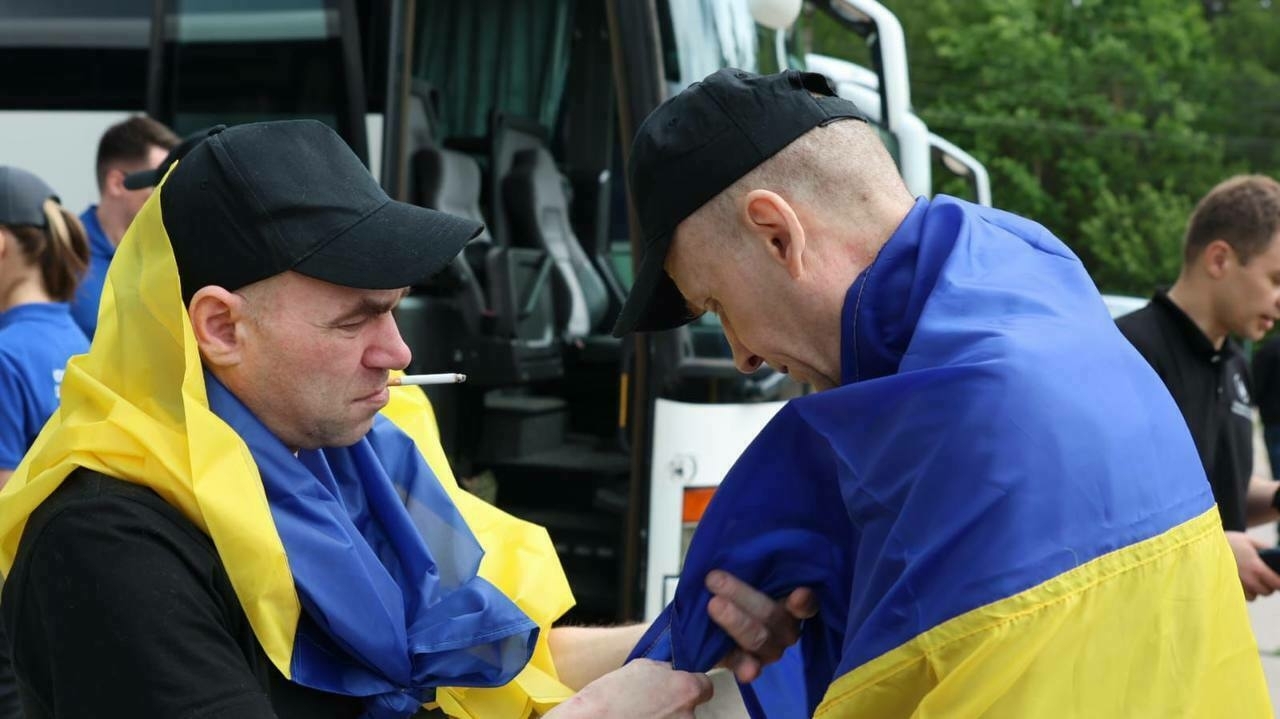
Ukrainian soldiers after being released from Russian captivity on June 19, 2025. (President Volodymyr Zelensky/Telegram) 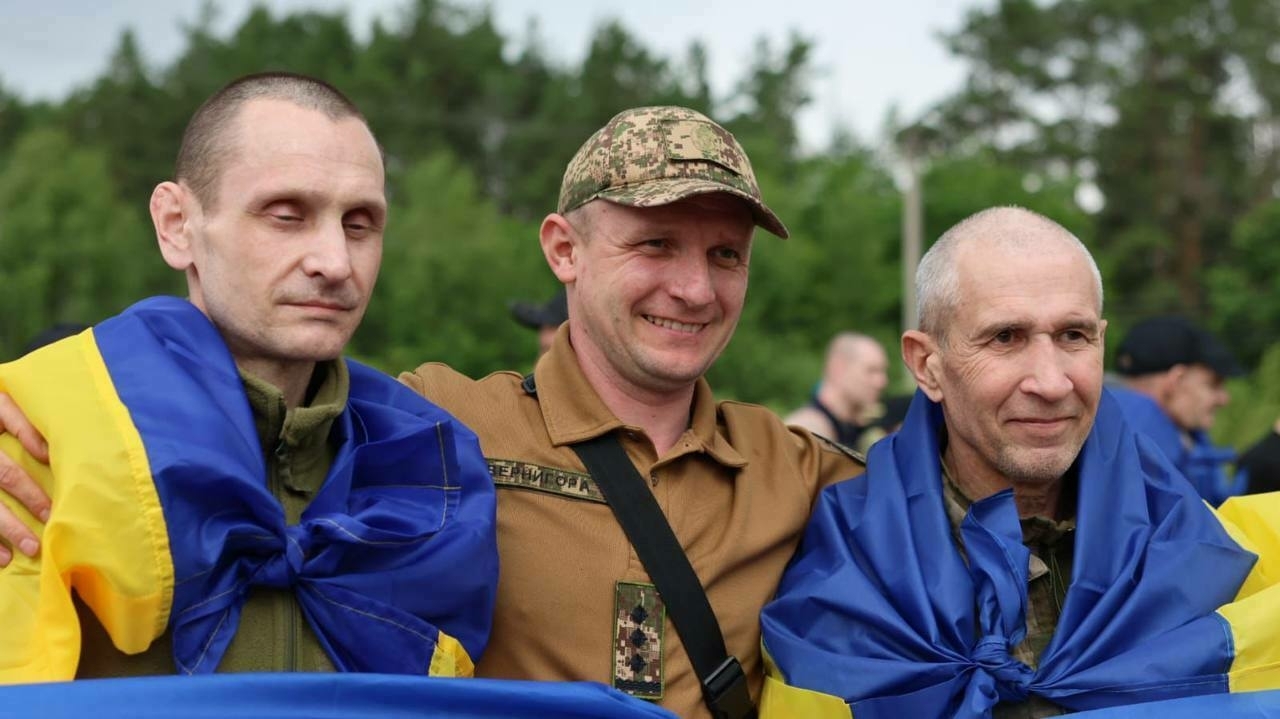
Ukrainian soldiers after being released from Russian captivity on June 19, 2025. (President Volodymyr Zelensky/Telegram) The Istanbul deal was reached during the second round of direct talks between the Ukrainian and Russian delegations in Istanbul at the beginning of the month.
While no political breakthrough was achieved, both sides agreed to a phased exchange of prisoners and the repatriation of fallen soldiers' bodies. As part of that agreement, Russia pledged to return the bodies of up to 6,000 Ukrainian service members and citizens.
Moscow has handed over 6,057 bodies to Ukraine in several stages over the past few days. Kyiv later said these also included fallen Russian soldiers, though it is unclear whether this was done on purpose or by accident.
-
EU reportedly eyes riskier investments for frozen Russian assets to boost Ukraine aid
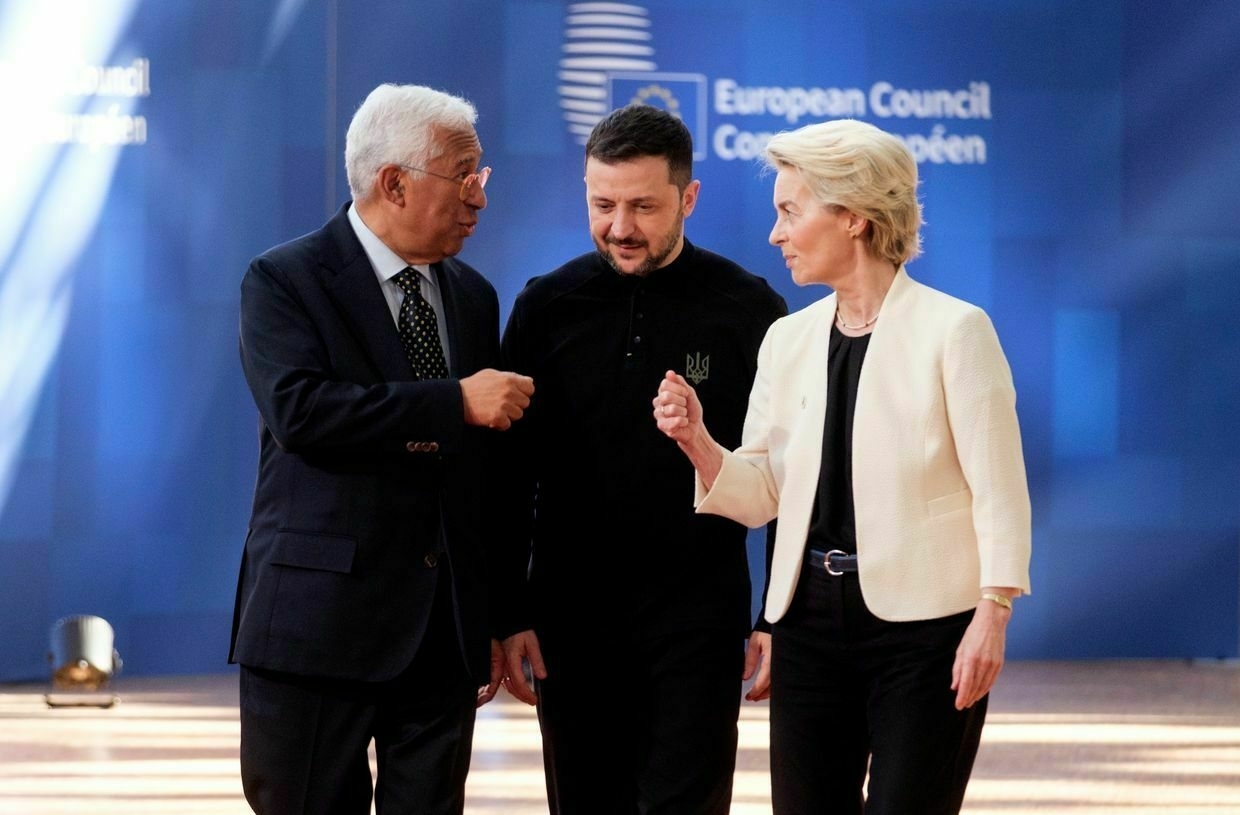
The European Union is developing a plan to generate more revenue for Ukraine by shifting nearly 200 billion euros ($215 billion) in frozen Russian assets into higher-yield, riskier investments, Politico reported on June 19, citing unnamed sources.
The assets, largely held by Belgium-based clearinghouse Euroclear, have been immobilized since 2022 under EU sanctions imposed following Russia’s full-scale invasion of Ukraine.
Under the current framework, the funds are invested conservatively with the Belgian central bank, generating low but steady returns. In 2024, this approach yielded around 4 billion euros ($4.3 billion) in windfall profits, which the EU allocated to help service a G7-backed 45-billion-euro loan for Ukraine (around $50 billion).
Now, with that loan largely disbursed and concerns mounting over future financing, especially amid signals from U.S. President Donald Trump that American support could be scaled back, EU officials are under pressure to find new funding streams.
According to Politico, the proposed plan would redirect the frozen Russian assets into a special investment fund under EU control, allowing for higher returns without confiscating the assets — a move designed to sidestep legal and political opposition.
As part of the current G7-led funding framework, Ukraine has already received 7 billion euros ($8 billion) from the EU under the Extraordinary Revenue Acceleration (ERA) initiative, which uses profits from frozen Russian sovereign assets to fund loans.
Prime Minister Denys Shmyhal confirmed on June 13 that a fifth tranche of 1 billion euros ($1.1 billion) had been disbursed to support Ukraine’s state budget. The ERA mechanism, part of the broader $50 billion G7 program, aims to ensure stable financing for Kyiv while making Russia shoulder the cost of its aggression.
According to Politico, finance ministers from all 27 EU countries are expected to debate the idea during an informal dinner in Luxembourg on June 19.
Poland, which currently holds the Council of the EU’s rotating presidency, emphasized the urgency of the discussions, writing in an invitation letter seen by Politico that “further steps regarding the sanctions regime” and the potential use of frozen Russian assets “must be addressed."
The European Commission has also been holding informal consultations with a group of member states, including France, Germany, Italy, and Estonia, to explore legal options for keeping the Russian assets frozen in case Hungary exercises its veto power during the semiannual sanctions renewal process. So far, no workaround has been finalized.
Hungarian Prime Minister Viktor Orban has repeatedly threatened to block sanctions extensions as a gesture of goodwill toward Moscow, raising concerns the assets could be unfrozen and returned to Russia by default.
By now, much of the EU’s 50-billion-euro ($57 billion) Ukraine Facility, agreed in 2023 and intended to last through 2027, has already been spent. The bloc’s broader 1.2-trillion-euro ($1.37 billion) budget is stretched thin, and any additional top-ups would also require unanimous support.
Russia just accidentally admitted to its staggering troop losses in UkraineA senior Russian official on June 19 inadvertently confirmed the staggering troop losses incurred by Moscow’s forces during its full-scale invasion of Ukraine. In an interview with CNN, Russian Ambassador to the U.K. Andrey Kelin was asked about Moscow’s maximalist intentions in Ukraine and its ability to recruit enoughThe Kyiv IndependentChris York
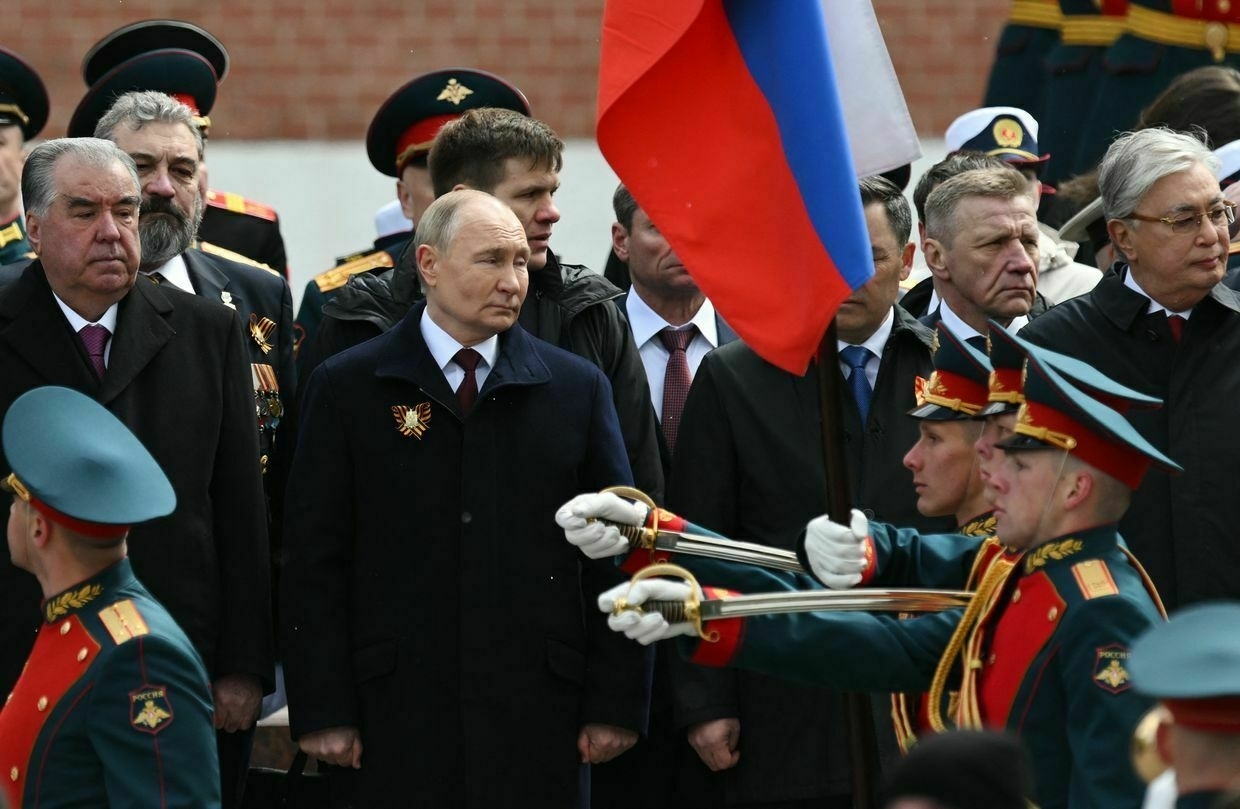
-
Putin, Xi to agree to meet in China as they sneer at G7 summit fractures
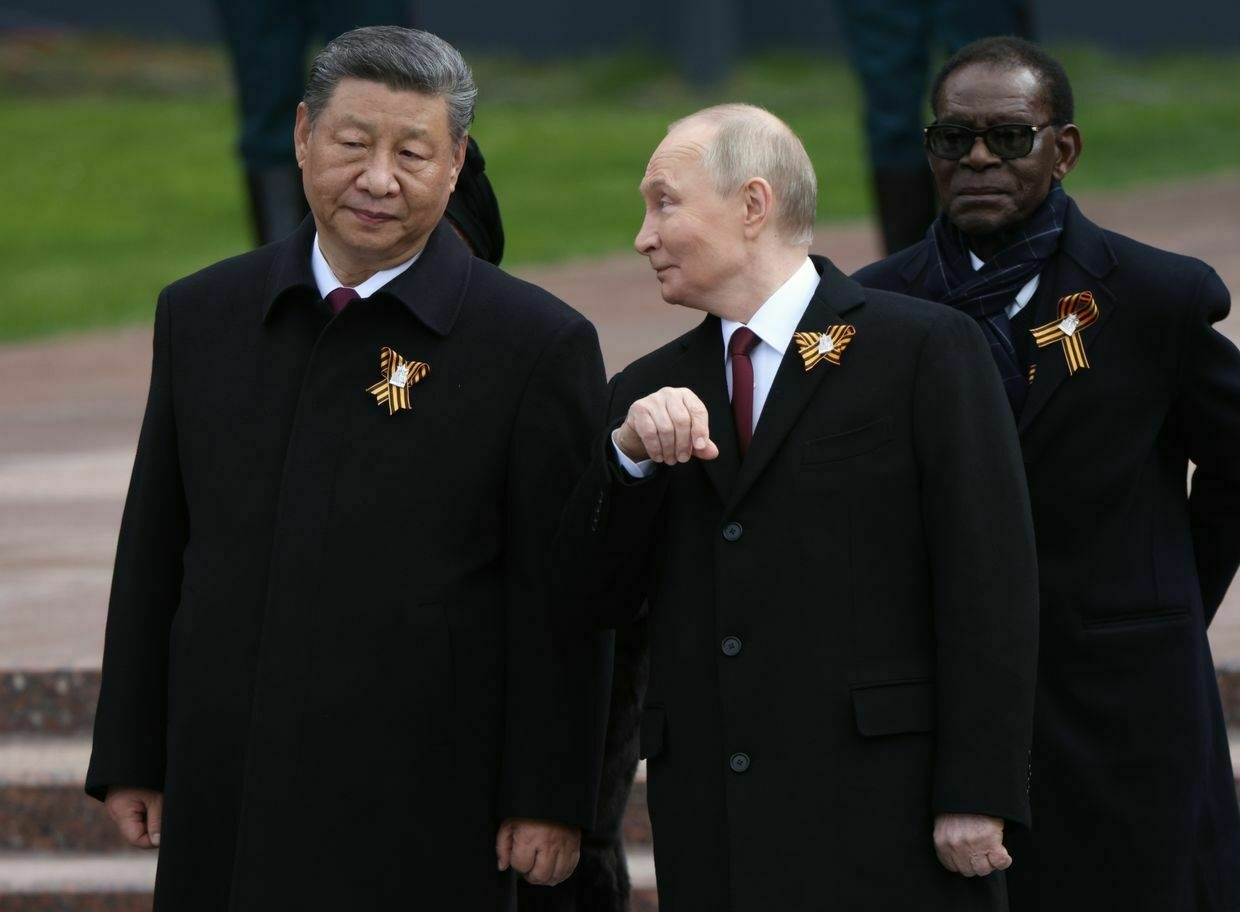
Russian President Vladimir Putin and Chinese President Xi Jinping agreed to meet in August and September and noted the supposed “rough edges” that emerged among G7 leaders during their summit, said Putin’s aide, Yuri Ushakov, on June 19.
In a phone call, the two leaders agreed to meet at the Shanghai Cooperation Organization summit in Tianjin, China, between Aug. 31 and Sept. 1, and hold bilateral talks on Sept. 2, Ushakov said, according to the state news agency TASS.
China has been a key ally to Russia during its full-scale war, helping Moscow evade Western sanctions and becoming the leading source of dual-use goods fueling the Russian defense industry. Xi and Putin previously met during the Victory Day celebrations in Moscow in May.
While their phone call focused on the escalating security situation in the Middle East, the leaders also touched upon the G7 summit, noting “the well-known rough edges that emerged among the participants of this meeting,” Ushakov said.
Putin and Xi also reportedly made mocking comments toward President Volodymyr Zelensky, saying it was not his “most successful trip abroad."
Zelensky was expected to meet U.S. President Donald Trump at the G7 summit in Canada, held from June 15 to 17, to discuss ways to increase pressure on Russia to end the war. Before Zelensky even arrived, Trump left the summit to address the escalating crisis in the Middle East, snubbing the meeting with the Ukrainian leader.
The G7 leaders were also unable to agree on a joint statement as the U.S. pushed for watered-down language on Russia. Instead, Canadian Prime Minister Mark Carney issued a summary saying that “G7 leaders expressed support for President Trump’s efforts to achieve a just and lasting peace in Ukraine."
“They recognized that Ukraine has committed to an unconditional ceasefire, and they agreed that Russia must do the same. G7 leaders are resolute in exploring all options to maximize pressure on Russia, including financial sanctions,” the statement read.
While initially pledging to broker a swift peace deal between Kyiv and Moscow, Trump has become increasingly disengaged with the effort and resisted calls to increase pressure on Russia via additional sanctions.
Despite Trump’s departure and disagreements with the U.S., Zelensky left the G7 summit with additional pledges of military support from Canada and new sanctions imposed against Russia’s energy sector.
“Today, we have concrete decisions on increased military support, new tranches of aid funded by frozen Russian assets, and additional sanctions targeting what fuels Russia’s war,” Zelensky said after the summit.
Zelensky also told the G7 leaders that “diplomacy is now in a state of crisis” and urged allies to press Trump “to use his real influence” to force an end to the war.
Diplomacy in crisis: G7 letdowns reveal limits to Western solidarity on UkraineKANANASKIS, Canada — The Group of Seven (G7) Leaders’ Summit ended on June 17 with no joint statement in support of Ukraine, no commitments to provide desperately needed U.S. weapons, and no meeting between President Volodymyr Zelensky and U.S. President Donald Trump. The Ukrainian delegation headed into the summit,The Kyiv IndependentDmytro Basmat
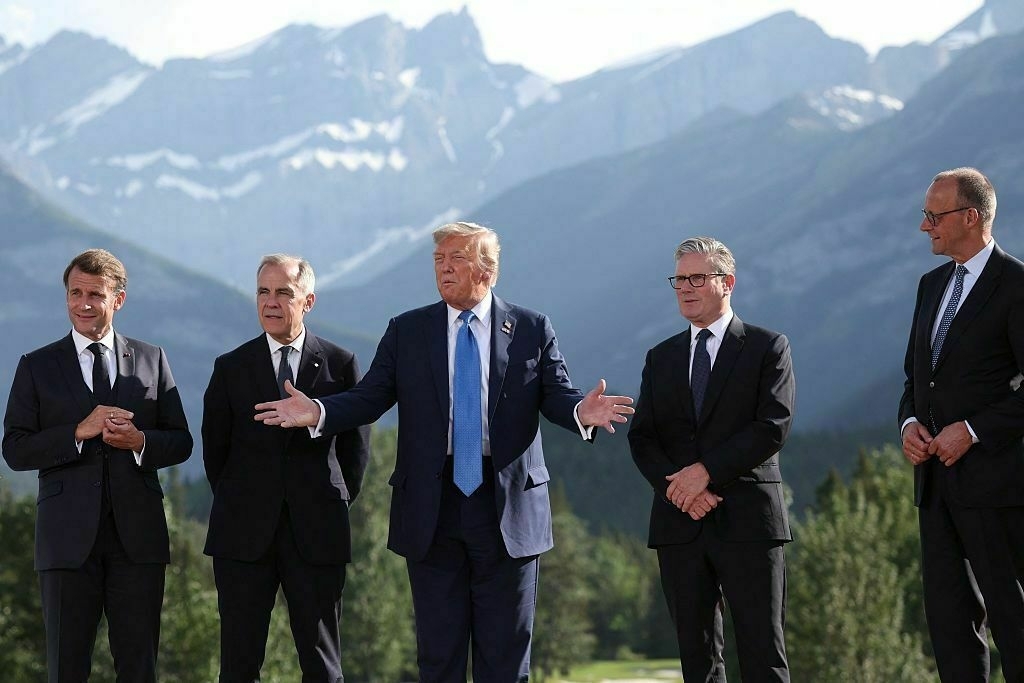
-
Russia just accidentally admitted to its staggering troop losses in Ukraine
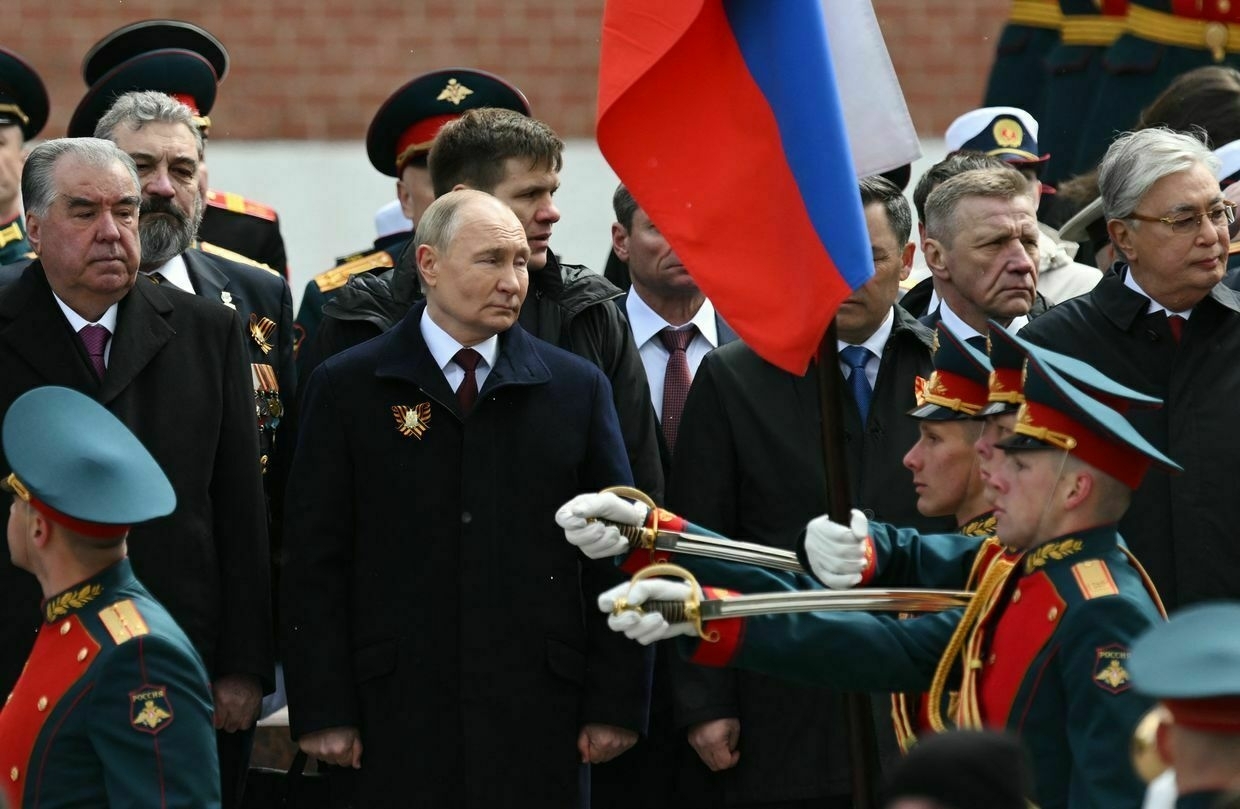
A senior Russian official on June 19 inadvertently confirmed the staggering troop losses incurred by Moscow’s forces during its full-scale invasion of Ukraine.
In an interview with CNN, Russian Ambassador to the U.K. Andrey Kelin was asked about Moscow’s maximalist intentions in Ukraine and its ability to recruit enough soldiers to fulfill them.
Despite ongoing U.S.-led peace efforts, Russia continues to demand Ukraine withdraws from the four partially occupied regions — Donetsk, Luhansk, Kherson, and Zaporizhzhia — as a precondition for negotiations.
Meanwhile, according to figures from Kyiv, Russia has suffered more than 1 million dead, wounded, and missing soldiers since the start of its full-scale invasion.
Kelin dismissed the 1 million casualties figure but did confirm that “about 600,000” Russian soldiers were fighting in Ukraine, a number which tallies with Ukrainian estimates from January.
The number is actually lower than the 700,000 (Russian President Vladimir) Putin claimed in June 2024, and the 617,000 he claimed in December 2023.
Kelin was then asked about Russian army recruitment.
“I’m not a specialist in this area, but as I understand it we have 50-60,000 a month, those volunteers who are coming, recruiting, posting, and they would like to get engaged in this thing (in Ukraine),” he replied.
He did not explain why the size of the Russian army fighting in Ukraine has gone down despite what would amount to around 250,000 extra troops being recruited and sent to the front since the beginning of the year.
According to figures from Ukraine’s General Staff, Russia has lost 217,440 troops since Jan. 1, 2025.
The discrepancy tallies with Western analysis of Russia’s staggering losses.
“They lose somewhere in the ballpark of 35,000 to 45,000 people per month, and perhaps they recruit a little bit north of that number,” George Barros, Russia team lead at the Institute for the Study of War (ISW), told the Kyiv Independent earlier this month.
Given that Russia is having to pay people to sign up, the losses have potentially huge ramifications for the country’s economy.
According to an analysis by economist Janis Kluge, Russia’s daily bill just for sign-up bonuses is $24 million.
The ballooning bills come at a time when Russia’s economy is already under huge strain from Western sanctions and falling oil and gas revenues.
“The implications for Russia are grave,” energy security analyst Wojciech Jakobik wrote in an op-ed for the Kyiv Independent this week.
According to Barros, making any predictions about whether or not the Russian economy is going to collapse is “supremely difficult to do,” but the signs for the Kremlin “don’t bode well."
“If you look at the current Russian economic indicators, for example their inflation rate, their overnight lending interest rates, Russian monetary constraints… government spending is out of control — it’s a very loose fiscal policy and so the economy is at risk of overheating,” he said.
“I don’t know to what extent the economy can continue to last."
As Russian losses in Ukraine hit 1 million, Putin’s war economy heads toward breaking pointRussian losses in Ukraine hit a massive, and grim milestone on June 12 — 1 million Russian soldiers killed or wounded during the 39-month-long full-scale war, according to figures from Kyiv. Although hugely symbolic, the number is unlikely to prompt a change in tactics from Moscow as it gears up forThe Kyiv IndependentChris York
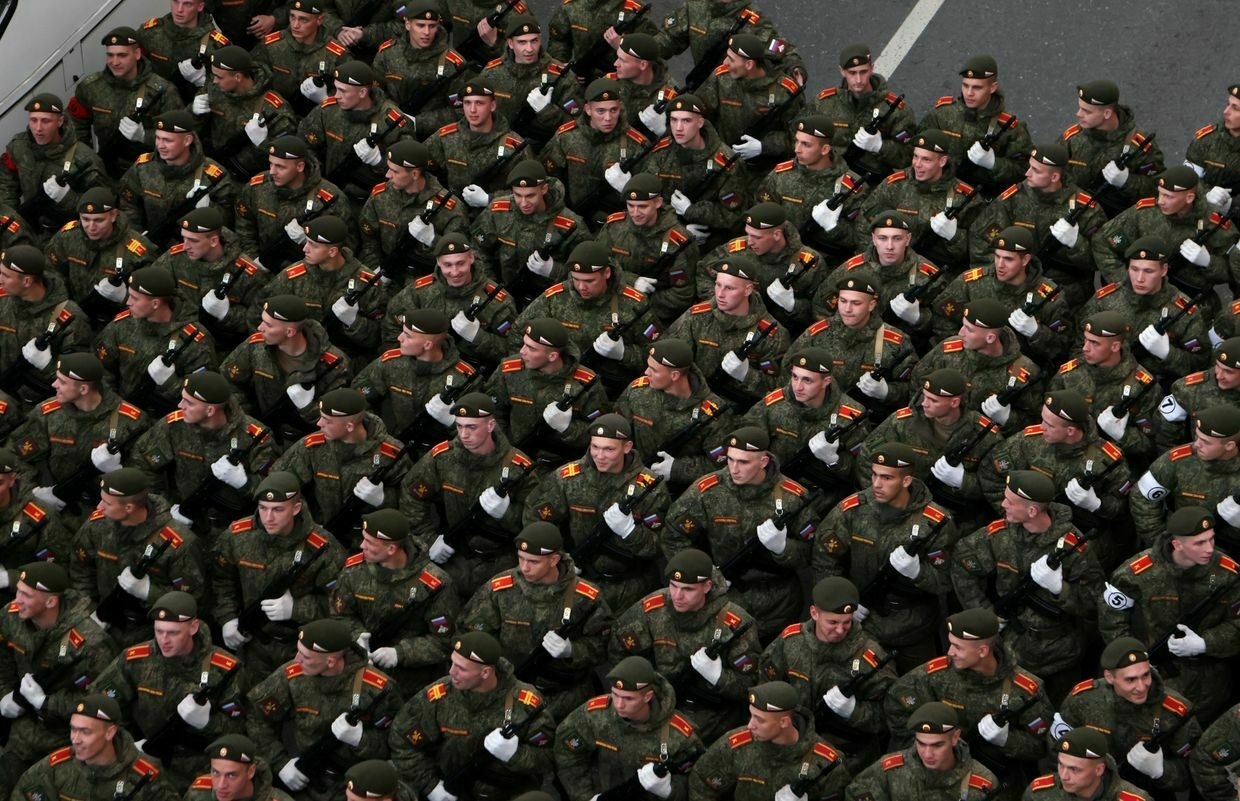
-
Finland votes to withdraw from landmine treaty, citing Russian threat
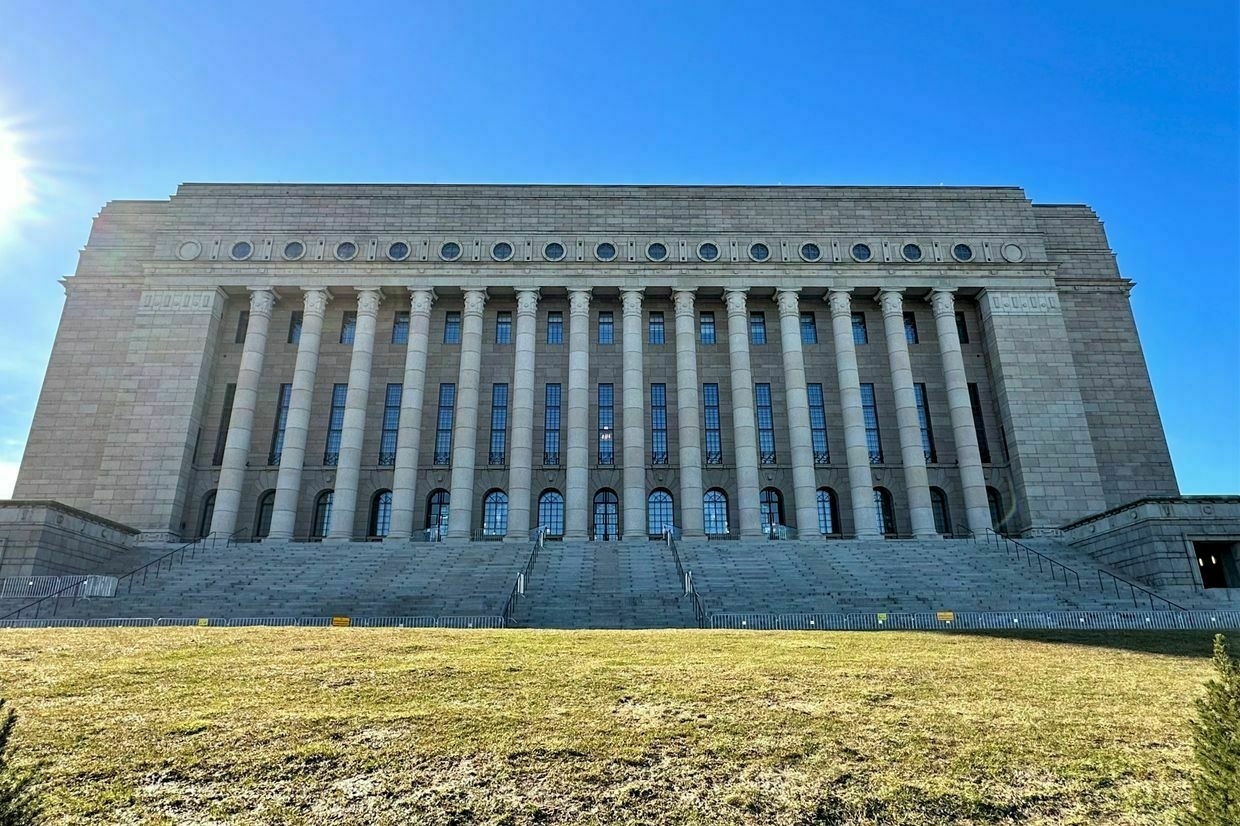
Finland’s parliament voted on June 19 to withdraw from the Ottawa Convention banning anti-personnel landmines, citing growing security concerns from Russia’s aggressive posture and the threat it poses to the region, Reuters reported.
The vote aligns Finland with its Baltic allies, Estonia, Latvia, and Lithuania, whose parliaments have already approved similar exits from the treaty.
Defending the decision earlier this week, Finnish President Alexander Stubb said the security reality along Finland’s 1,300-kilometer (800-mile) border with Russia had changed dramatically since the full-scale invasion of Ukraine, according to TVP.
“The reality in the endgame is that we have as our neighboring country an aggressive, imperialist state called Russia, which itself is not a member of the Ottawa Treaty and which itself uses landmines ruthlessly,” Stubb said.
Russia has widely deployed landmines across Ukrainian territory since launching its invasion in 2022, a tactic condemned by human rights organizations and Western governments.
Finland, which joined NATO in 2023, has significantly ramped up its defense posture amid growing concern over potential Russian provocations. The country closed its border with Russia over a year ago, accusing Moscow of orchestrating a “hybrid operation” by directing asylum seekers toward Finnish territory. Helsinki claims such hybrid tactics have intensified since it joined the alliance.
The Finnish Border Guard completed the first 35 kilometers (22 miles) of a planned 200-kilometer (124-mile) fence along its eastern frontier on May 21. The move came amid growing evidence of Russian military infrastructure expansion near the Finnish border.
Finland is “closely monitoring and assessing Russia’s activities and intentions,” Finland’s Defense Minister Antti Hakkanen told AFP on May 22.
“We have excellent capabilities to observe Russian operations. As a member of the alliance, Finland holds a strong security position."
Russia’s Defense Minister Andrei Belousov said in December 2024 that Moscow must be ready for a potential conflict with NATO within the next decade. Western officials have repeatedly warned of the possibility that Moscow could target NATO members in the coming years.
Diplomacy in crisis: G7 letdowns reveal limits to Western solidarity on UkraineKANANASKIS, Canada — The Group of Seven (G7) Leaders’ Summit ended on June 17 with no joint statement in support of Ukraine, no commitments to provide desperately needed U.S. weapons, and no meeting between President Volodymyr Zelensky and U.S. President Donald Trump. The Ukrainian delegation headed into the summit,The Kyiv IndependentDmytro Basmat
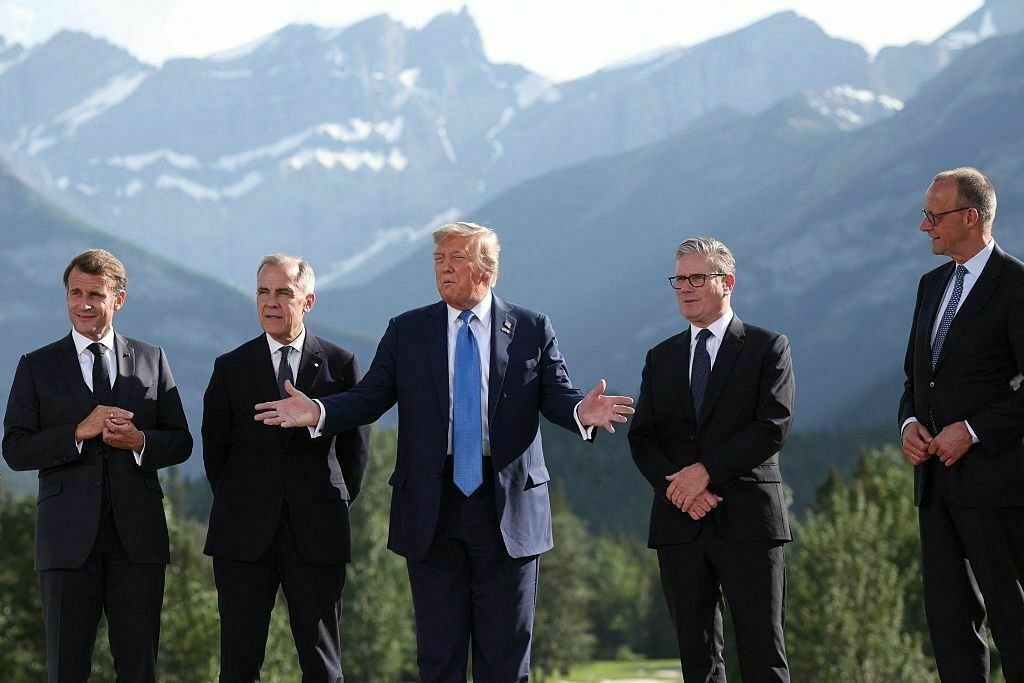
-
Diplomacy in crisis: G7 letdowns reveal limits to Western solidarity on Ukraine
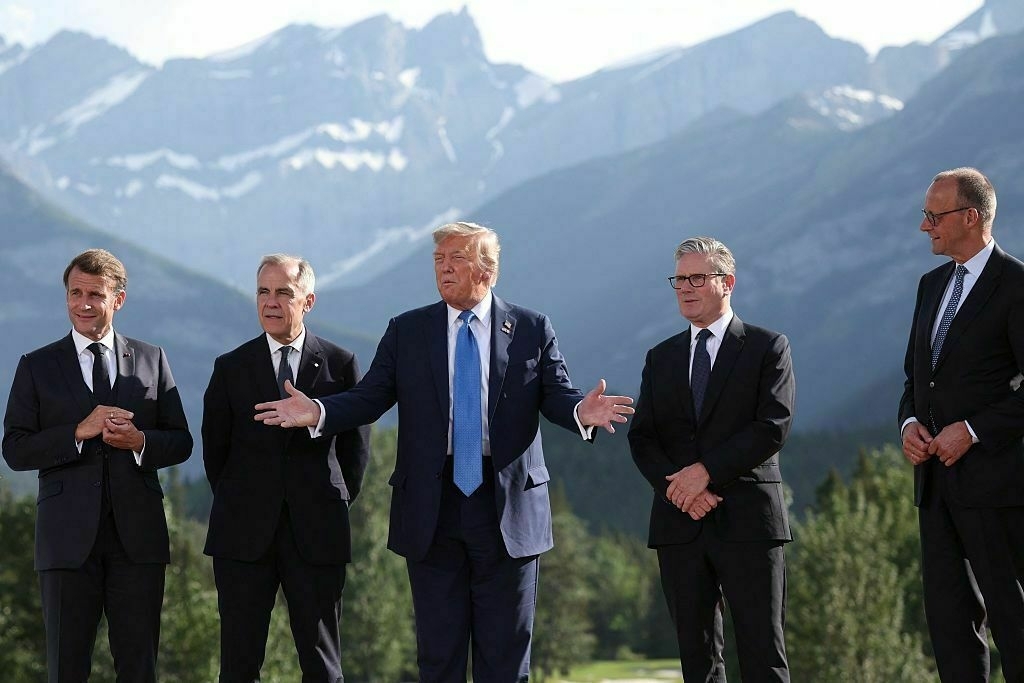
KANANASKIS, Canada — The Group of Seven (G7) Leaders' Summit ended on June 17 with no joint statement in support of Ukraine, no commitments to provide desperately needed U.S. weapons, and no meeting between President Volodymyr Zelensky and U.S. President Donald Trump.
The Ukrainian delegation headed into the summit, held in the remote community of Kananaskis, Canada, with an air of cautious optimism and hopes of winning renewed international support.
Instead, Trump left, Russia slammed Kyiv with ballistic missiles, and optimism quickly turned to anxiety.
As Zelensky arrived in Kananaskis on June 17, Moscow hit Kyiv with one of the largest Russian attacks on the capital since the start of the war — a brutal strike that killed 28 people and injured 134.
Zelensky, who learned of the attack en route to Canada, hoped to once again rally world leaders around Ukraine’s defense and convince them to mount pressure on Russia in light of the relentless attacks on civilians. But Trump — the man with the most power to impact the course of the war and prospects for peace — met the moment with indifference.
Trump departed the summit just hours ahead of Zelensky’s arrival, saying he was leaving to tend to a different conflict: “I have to be back (to the White House) as soon as I can … because of what’s going on in the Middle East,” Trump told reporters, referring the escalating conflict between Israel and Iran. “I have to be back early for obvious reasons,” Trump said, without further elaborating.
Trump was expected to meet with Zelensky on the sidelines of the G7 summit on June 17, marking their third in-person meeting since the American president took office in January. After his sudden exit, the Ukrainian delegation was left with the impression that Trump had brushed off their concerns.
While Kyiv managed to make progress and maintain unity among remaining world leaders at the summit, the bleak state of U.S.-Ukrainian relations casts a shadow over these gains. Zelensky left the summit early, with even more uncertainty about how Ukraine can win the war in the face of dwindling U.S. support.
Relations with Trump continue to sour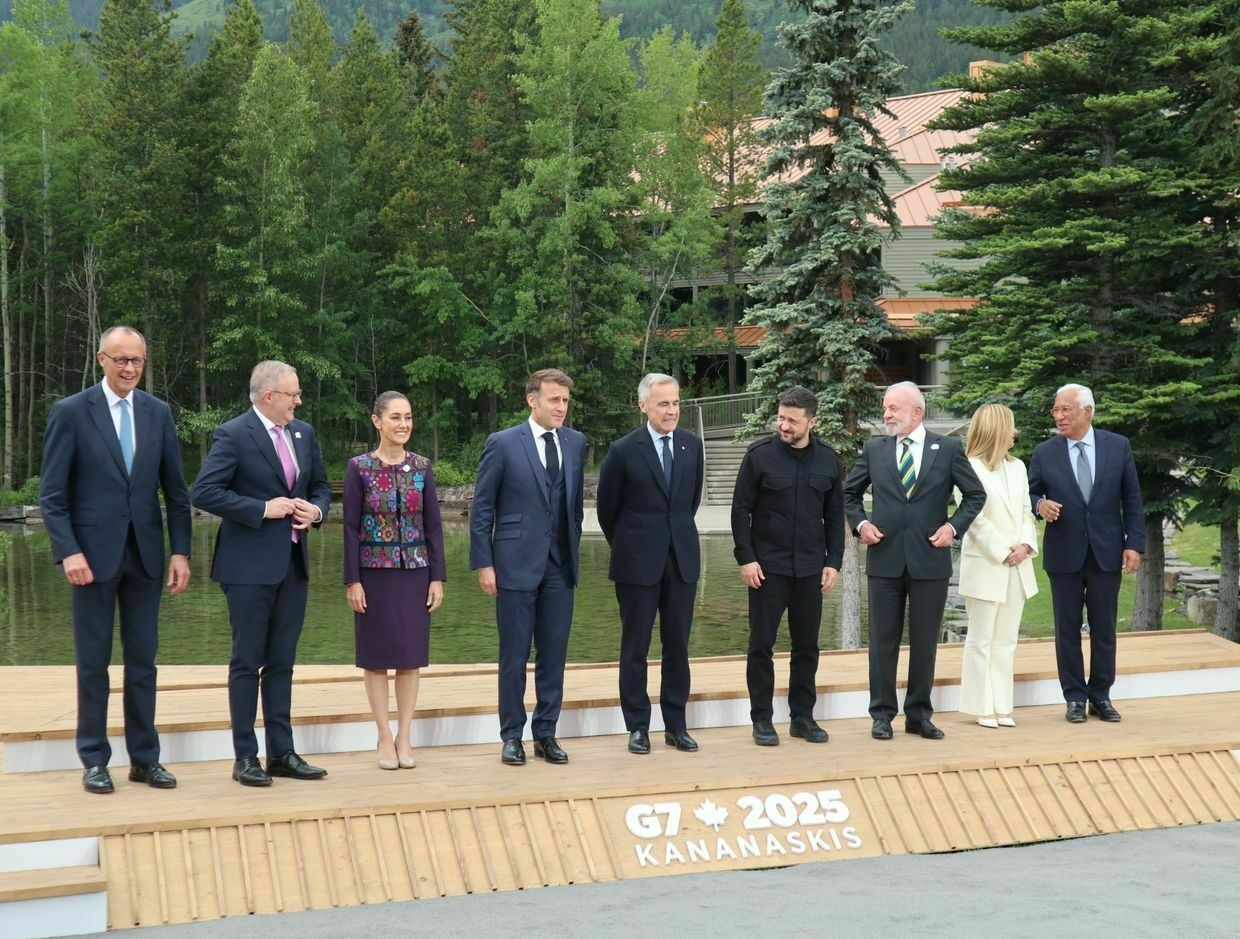
World leaders prepare to pose for their ‘family photo’ on June 17, 2025. Noticeably missing is U.S. President Donald Trump who left the summit early on June 16 ahead of President Volodymyr Zelensky’s arrival. (Dmytro Basmat/The Kyiv Independent) After a disastrous first in-person meeting between Trump and Zelensky in the Oval Office in February — during which Trump and Vice President JD Vance lambasted the Ukrainian president over what they described as “a lack of gratitude for U.S. support” — a second meeting in the Vatican helped smooth over tensions between the two leaders.
Zelensky praised his brief but “most substantive” conversation with Trump following the funeral of Pope Francis in early May.
“With all due respect to our teams, the one-on-one format, in my opinion, worked. We had the right atmosphere for the conversation,” Zelensky said after the talk.
At the G7 summit, the Ukrainian delegation hoped to convince Trump to exert additional economic pressure on Moscow through sanctions — which the U.S. president has not followed through on implementing — during a third in-person meeting with Zelensky.
Trump’s exit put those hopes on hold and cost Ukraine an opportunity to improve relations with the White House. Sources familiar with the situation told the Kyiv Independent that there was resounding disappointment within the president’s circle.
Zelensky ended up leaving the summit early too, canceling a planned press conference and additional events in Calgary in the wake of the Russian missile strikes on Kyiv and changes to the G7 agenda.
“What is there (for Zelensky) to say?” a source familiar with the logistics of Zelensky’s canceled press conference said following Trump’s early departure.
Kyiv’s hopes of winning over Washington have run up against Trump’s indifference to a Ukrainian victory and his sympathies with the Kremlin. One expert told the Kyiv Independent that Trump “does not share (the) commitment” that other Western allies do to help put an end to the war.
“Trump seems to be walking away from an attempt to reach a ceasefire in the war, and is focused on the Israel-Iran conflict and U.S. domestic politics,” said Brian Taylor, a professor of political science at Syracuse University.
“Of course, Trump is unpredictable and could change his mind (about providing support for Ukraine), but it seems pretty clear that, for whatever reason, he sympathizes with (Russian President Vladimir) Putin,” Taylor said.
“It looks like President Trump is walking away from his erratic and half-hearted efforts to make a deal to end the Russia-Ukraine War."
Trump’s lack of commitment has Ukraine questioning the value of participating in the upcoming NATO summit in The Hague. Zelensky is reconsidering his attendance at the June 24-25 summit amid questions over Trump’s participation, the Guardian reported on June 17, citing unnamed Ukrainian officials.
One official told the Guardian that Ukraine is in a “permanent hazard” of becoming a victim of “Trump’s short attention span,” adding that Russia has exploited this uncertainty by fresh aerial attacks. The source said there had been “all sorts of promises for this summit,” including U.S. arms.
Minor victories, major uncertainties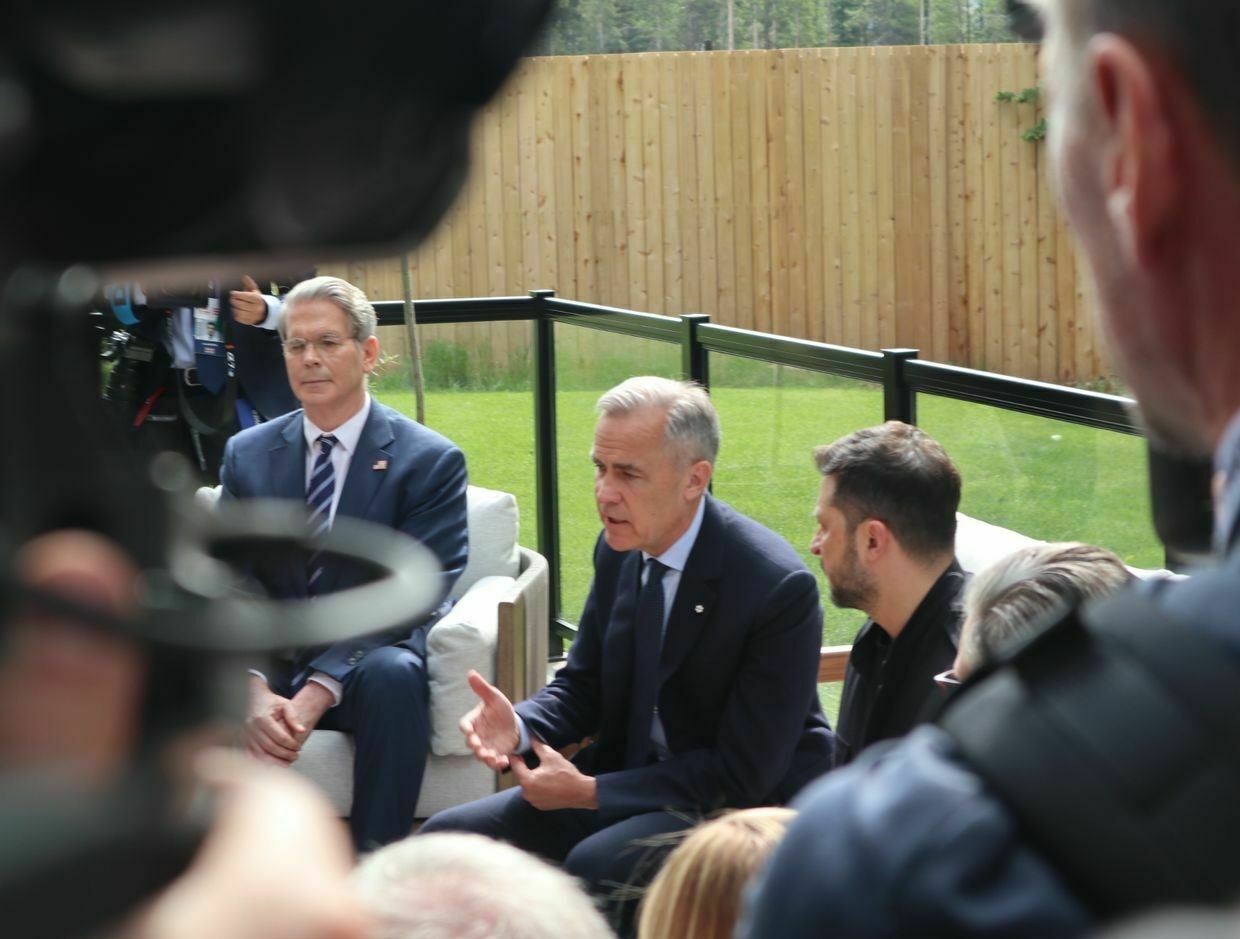
U.S. Treasury Secretary (L) fills in for U.S. President Donald Trump during a “Strong and Sovereign Ukraine” working breakfast on June 17, 2025, following Trump’s early departure from the summit. (Dmytro Basmat/The Kyiv Independent) 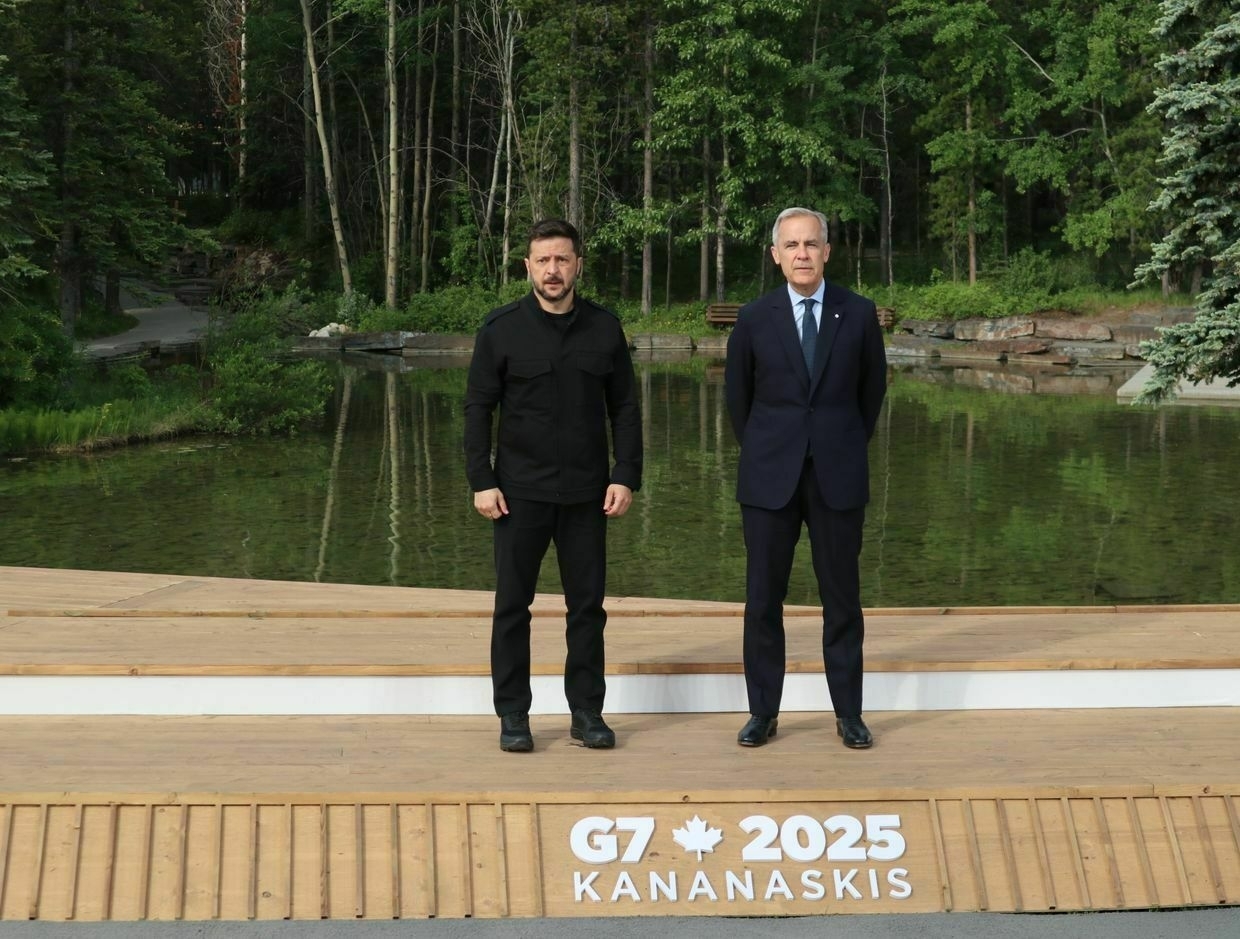
President Volodymyr Zelensky and Canadian Prime Minister Mark Careny, the host of the G7 Leaders' Summit, post for a photo following Zelensky’s arrival at the summit on June 17, 2025. (Dmytro Basmat/The Kyiv Independent) 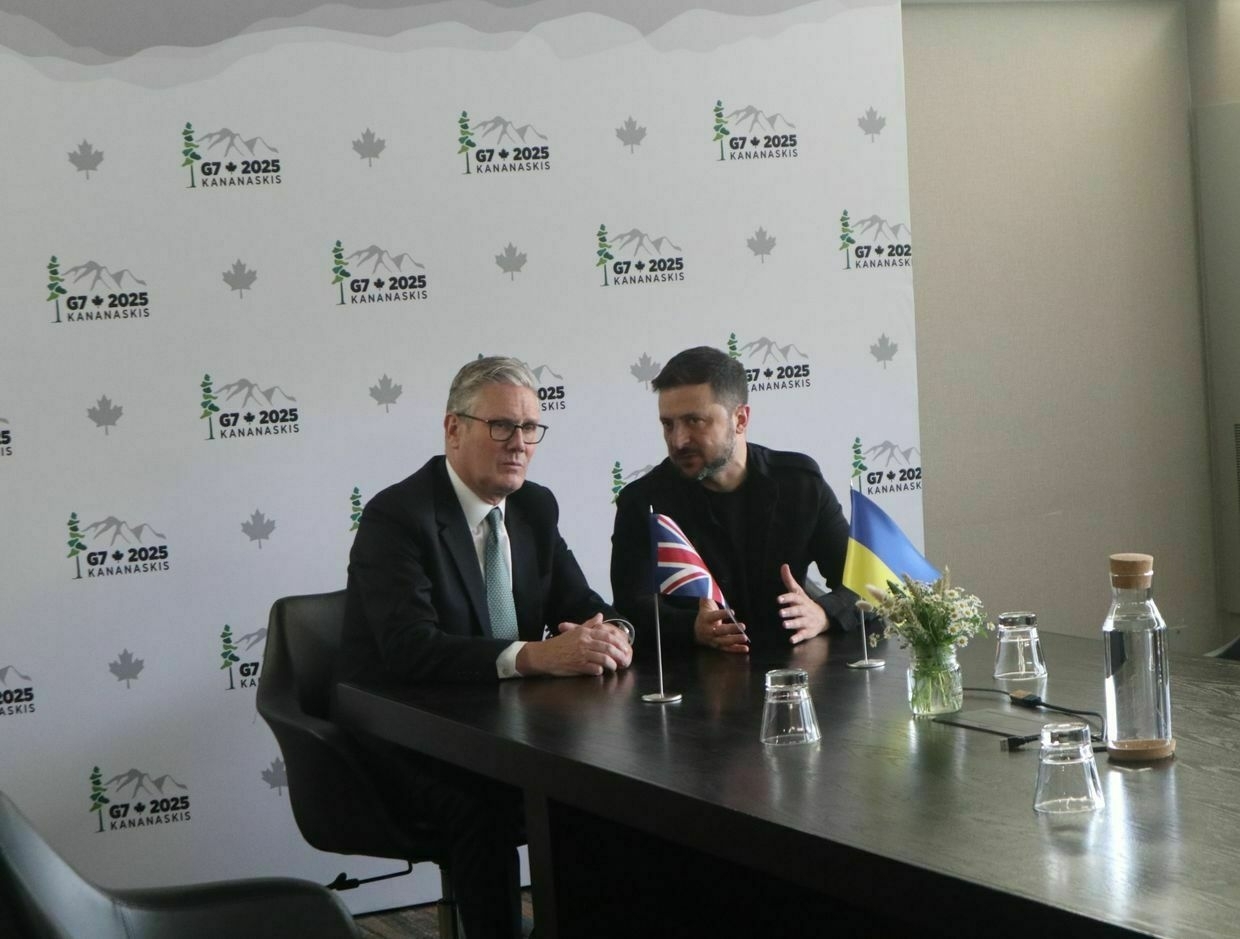
President Volodymyr Zelensky holds a bilateral meeting with British Prime Minister Keir Starmer on the sidelines of the G7 Leaders' Summit in Kananaskis, Alberta, Canada on June 17, 2025. (Dmytro Basmat/The Kyiv Independent) 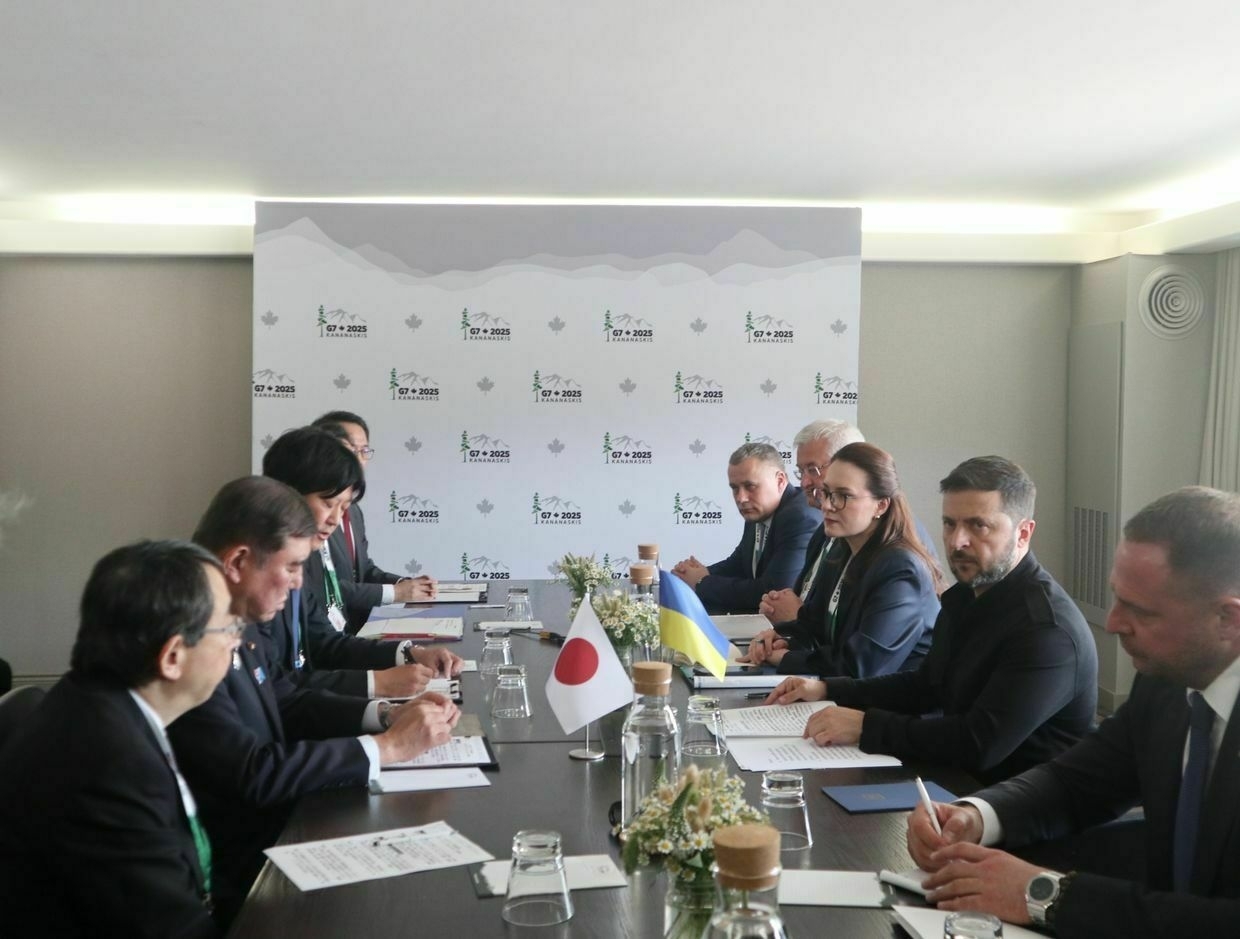
Members of the Ukrainian delegation meet with the Japanese delegation, led by Prime Minister Shigeru Ishiba, on the sidelines of the G7 Leaders' Summit in Kananaskis, Alberta, Canada on June 17, 2025. (Dmytro Basmat/The Kyiv Independent) Despite Trump’s abrupt departure, Zelensky did come out of meetings with other world leaders with some positive results as well as additional support for Ukraine.
Canadian Prime Minister Mark Carney, the host of the summit, announced a sweeping new support package for Ukraine during a bilateral meeting with Zelensky. The measures include two billion Canadian dollars ($1.5 billion) in military funding and new sanctions aimed at restricting Russia’s energy revenues and evasion tactics.
“To be absolutely clear, this support will be unwavering until we get a just peace for Ukraine and the Ukrainian people,” Carney said ahead of the bilateral, attended by the Kyiv Independent.
Additionally, the United Kingdom imposed new restrictions on Russia on June 17, adding 20 vessels from Russia’s so-called “shadow fleet” and 10 individuals and entities to its sanctions list. Australia also joined the U.K. in targeting 60 vessels — its first-ever sanctions against the shadow fleet.
Zelensky said he had told the G7 leaders that “diplomacy is now in a state of crisis” and urged allies to press Trump “to use his real influence” to force an end to the war.
Trump has not been very responsive to such appeals. During a G7 dinner discussion where world leaders reportedly attempted to convince Trump to impose tougher sanctions against Russia, Trump insisted sanctions were too costly for the U.S., according to Bloomberg.
The New York Times reported in May that Trump opposes sanctions because they may jeopardize future business and trade opportunities with Moscow.
While Zelensky pushes for the support and sympathy of Western leaders, the U.S. pushes back — often with disappointing results for Ukraine. Canada reportedly dropped plans for the G7 to issue a joint statement on the war in Ukraine after the U.S. insisted on weakening the language. Instead of a unified call to action, Canada’s Carney released a Chair’s Summary on the event.
“I think the possibility of additional pressure on Russia from the United States, in the form of tougher sanctions and further military assistance for Ukraine, are low,” Taylor said. “The good news for Ukraine from the G7 Summit is that the other six members of the G7 remain firmly behind Ukraine."
Making Moscow payUkraine’s military has warned that Russian forces have intensified operations across the front line amid a renewed summer offensive — meaning Ukraine desperately needs external forces to exert economic pressure on Russia’s war machine.
“The key questions now are, first, will the U.S. Congress try to force Trump into further sanctions and, second, how much can Europe make up for the absence of U.S. support?” Taylor told the Kyiv Independent.
A U.S. sanctions bill, jointly introduced on April 1 by Republican Senator Lindsey Graham and Democratic Senator Richard Blumenthal, seeks to impose a 500% tariff on imports from countries that continue purchasing Russian oil and raw materials. The bill aims to tighten economic pressure and discourage third-party nations from enabling the Kremlin’s energy profits.
Despite broad support for these efforts from his own party, Trump asked Senate Majority Leader John Thune to postpone a vote on the bill, according to Senator Roger Wicker. Semafor reported on June 17 that the bill has been further delayed until at least July as Congress grapples with domestic legislation as well as the conflict in the Middle East.
While the European Union insists that its commitment to Ukraine remains unwavering, the bloc is also vulnerable to U.S. pressure and internal disagreements.
In its 18th package of sanctions against Russia, the EU proposed lowering the oil price cap from $60 to $45 a barrel. While leaders were reportedly prepared to champion the proposal even without support from the U.S., European Commission President Ursula von der Leyen appeared to walk back the price drop during the G7 summit.
“In the last days, we have seen the price has risen so the oil price cap does serve its function,” von der Leyen said. “At the moment, there’s little pressure on lowering the oil price cap."
EU High Representative Kaja Kallas, however, urged the EU to press forward with lowering the cap on Russian oil, even without U.S. support, warning that Middle East tensions could otherwise drive prices up and boost Russia’s revenues.
The EU also requires unanimous support on punitive measures related to Russia, giving Ukraine-skeptic leaders in Slovakia and Hungary an opportunity to obstruct and delay the approval process.
Prospects for peace in Ukraine will likely be determined by the amount of economic strain exerted on Russia. Kyiv now faces tough decisions as to how to publicly court support from Trump without relying too heavily on Washington’s global leadership.
Kyiv may soon be forced to put all its efforts into winning more European support, becoming reliant on allies with more limited capabilities.
Europe must prepare for US scaling down support for Ukraine, Pistorius says“Yes, that’s right. That would be so and we have to deal with that,” German Defense Minister Boris Pistorius told journalists in response to a question about a potential U.S. pullback.The Kyiv IndependentAnna Fratsyvir
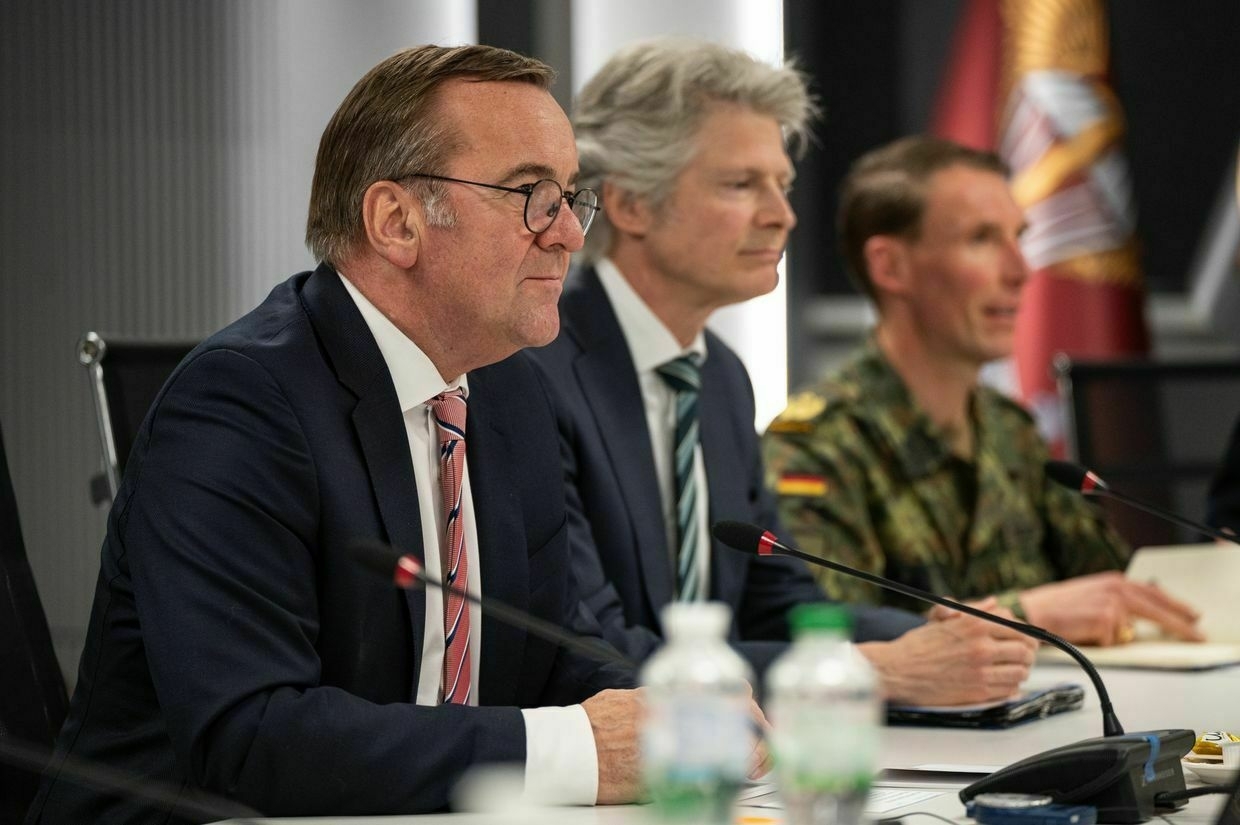
-
Ukraine must accept Moscow's demands or 'surrender,' Russia’s ambassador to UK says
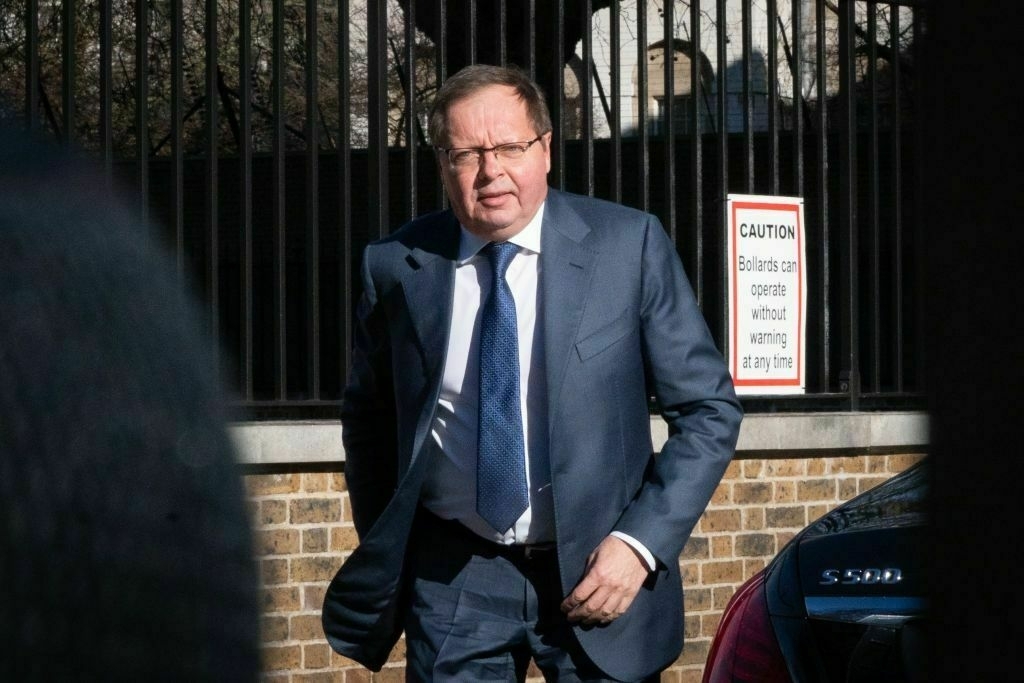
Ukraine must accept Moscow’s terms for ending the war or face further military advances and eventual “surrender,” Russia’s ambassador to the United Kingdom, Andrei Kelin, said in a June 18 interview with CNN.
Talking to CNN host Christiane Amanpour, Kelin said Russia is continuing its offensive and sees no need to stop hostilities, publicly acknowledging Moscow’s disregard for U.S.-backed ceasefire efforts.
The comments come as Russia continues to reject a U.S. truce proposal backed by Kyiv and only intensifies both ground operations and aerial strikes against Ukrainian cities.
“We are now on the offensive and Ukraine is in retreat,” Kelin said. “In May, we have taken about 600 square kilometers (230 square miles) of the territory of Ukraine, and we continue to gain more ground."
According to the open-source intelligence group DeepState, Russian forces occupied approximately 449 square kilometers (173 square miles) in May, the highest monthly figure this year, but still well below Kelin’s claim.
Kelin outlined an ultimatum for Kyiv: either agree to a permanent ceasefire on Russia’s terms or face worse consequences.
“For Ukraine, there is a choice: either they will take our conditions right now… or we will continue this drive and Ukraine will have to surrender under much worse conditions,” he said.
In the most recent peace talks with Ukraine in Istanbul on June 2, Russia again pressed its longstanding maximalist demands, including recognition of Russia’s annexation of Crimea, as well as Kherson, Donetsk, Zaporizhzhia, and Luhansk oblasts — none of which are fully under Moscow’s control.
The Kremlin also insists on Ukraine’s complete military withdrawal from these regions.
The ambassador’s remarks come amid reported preparations for a third round of negotiations with Ukraine after June 22, though no date has been officially confirmed. Kelin described the talks as “stage by stage,” citing prior agreements on prisoner exchanges and humanitarian issues.
Kelin also reiterated long-standing Kremlin demands for Ukraine’s neutrality and the prohibition of NATO membership, calling the alliance “very threatening to us.”
The ambassador insisted on “reestablishment of normal human rights” for ethnic minorities in Ukraine, including Russians, Hungarians, and Poles, a claim Kyiv and Western officials have repeatedly dismissed as a false pretext for invasion.
CNN’s host challenged Kelin on whether such terms amounted to capitulation rather than negotiation. Kelin denied the characterization, maintaining that talks are ongoing and involve “important agreements."
When asked about Russia’s capacity to sustain its military campaign, Kelin claimed Moscow is spending “only 5–7%” of its budget on the war and recruiting up to 60,000 volunteer soldiers monthly, figures Western analysts have not independently verified.
“Only 5–7%” of the budget accounts for around 13.5 trillion rubles ($126 billion). Russia’s spending on war and law enforcement agencies exceeds expenditures on education, healthcare, social policy, and the national economy combined.
As Russian losses in Ukraine hit 1 million, Putin’s war economy heads toward breaking pointRussian losses in Ukraine hit a massive, and grim milestone on June 12 — 1 million Russian soldiers killed or wounded during the 39-month-long full-scale war, according to figures from Kyiv. Although hugely symbolic, the number is unlikely to prompt a change in tactics from Moscow as it gears up forThe Kyiv IndependentChris York
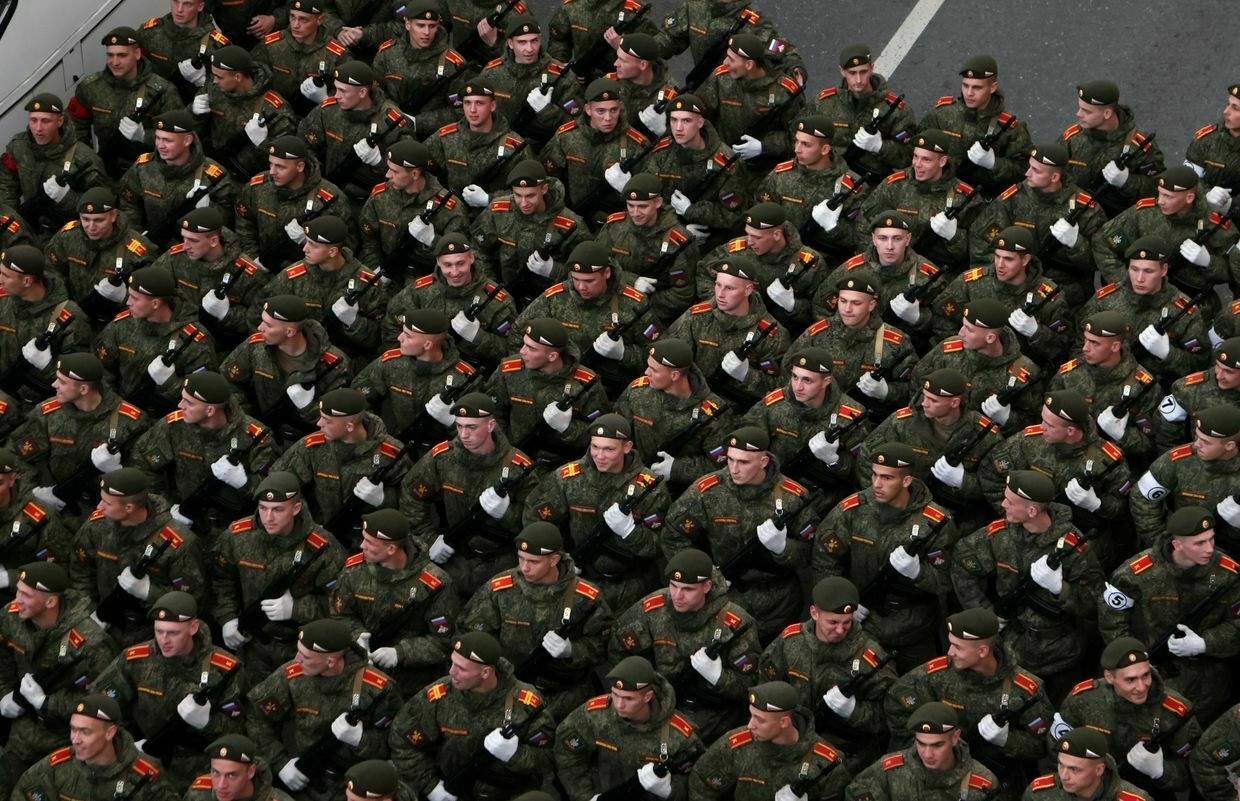
-
Russia 'on the verge' of recession, Russian economy minister warns
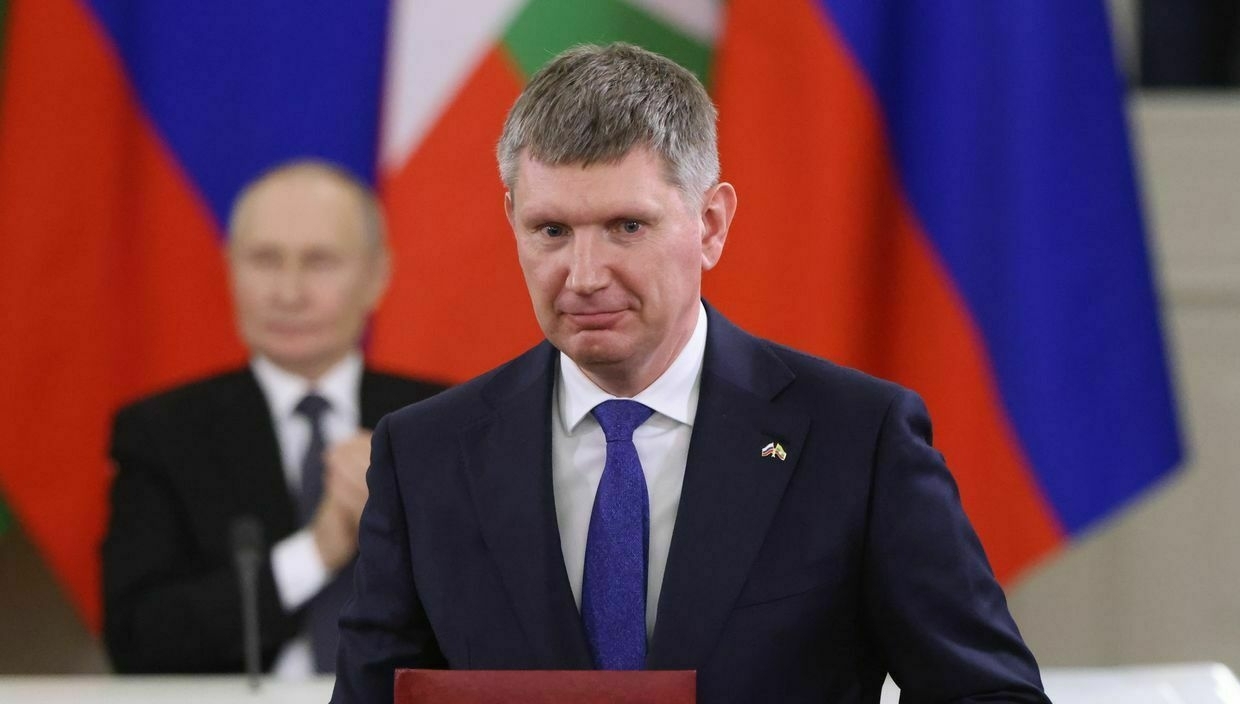
The Russian economy appears to be “on the verge of a transition to recession,” Russian Economy Minister Maxim Reshetnikov said on June 19, adding that the next step will be decisive.
The comments underscore Russia’s mounting economic challenges as it continues its all-out war against Ukraine.
“According to figures, we have a cooling stage (in the economy). But all our numbers are like a rearview mirror,” Reshetnikov said at the St. Petersburg International Economic Forum when asked about Russia’s economic situation.
“According to current business perceptions, we are already, it seems, on the verge of a transition to a recession,” the minister added. Reshetnikov clarified that recession is not inevitable and that “everything depends on our decisions."
Russia has faced soaring inflation during its invasion of Ukraine, driven by record wartime spending. This forced the central bank to set one of the highest key interest rates in decades, hurting private investments in non-defense-related sectors.
Facing government pressure, the central bank slashed the interest rate from 21% to 20% earlier this month.
Reshetnikov himself urged the central bank to cut rates in order to boost growth, aiming to achieve a 3% growth target set by Russian President Vladimir Putin.
Russia has been forced to slash key projects across various sectors in the face of an economic slowdown, brought on in part by plummeting oil prices. Major Russian exporters have also cut down on rail shipments of metals and oil products, even beyond earlier projected reductions.
After some positive signals earlier in 2025 due to U.S. President Donald Trump’s outreach to Moscow and hopes for a ceasefire, more recent reports again indicate a sharp slowdown in Russia’s economic growth.
Analysts have connected this development to the central bank policies, sanctions, low oil prices, supply difficulties, and high inflation.
Putin says he’s ready to meet Zelensky if West ‘stops pushing’ Ukraine to fightRussia wants to end the war in Ukraine “as soon as possible,” preferably through peaceful means, and is ready to continue negotiations — provided that Kyiv and its Western allies are willing to engage, Vladimir Putin said.The Kyiv IndependentOlena Goncharova
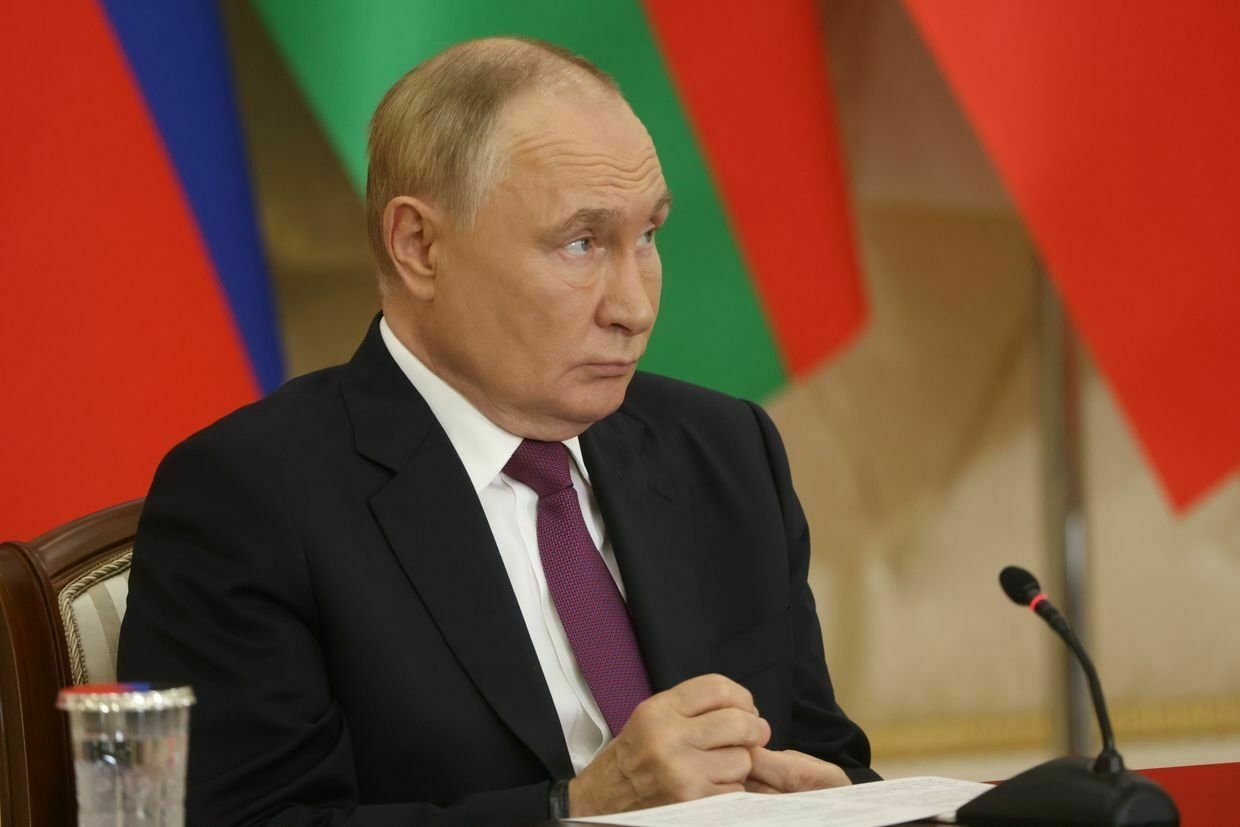
-
“Blending in with nature” — Sniper training in Kharkiv region (photos)
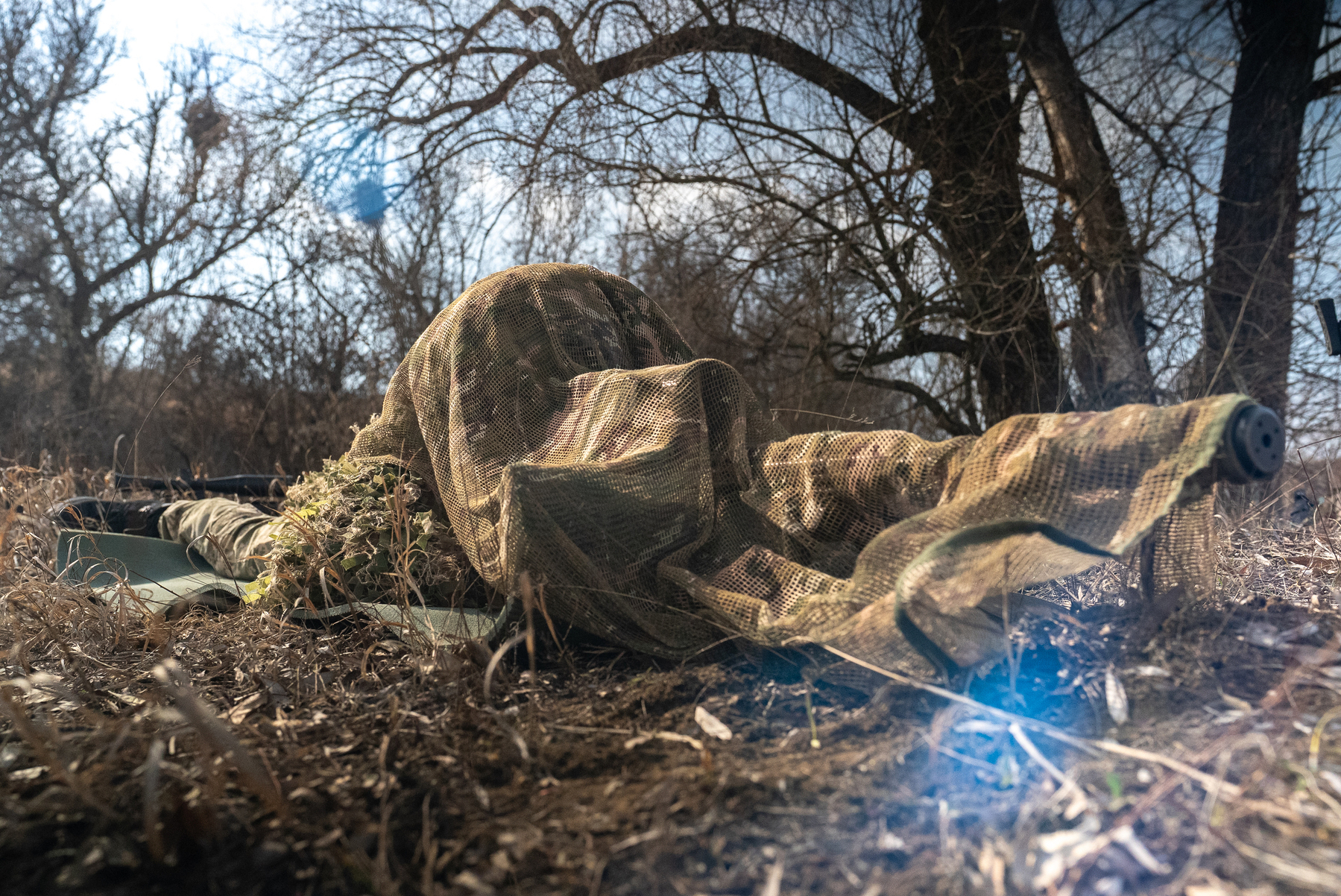
The men are loading many things into the car, including backpacks and bags with ghillie suits. They place massive sniper rifles there, too — with special care.
The car speeds down the dirt road, kicking up dust.
Training ground is large and varied in terrain, which allows soldiers to practice shooting from different positions and distances.
The snipers unload their equipment, sling the rifles over their shoulders, and head to the training area. Gwara Media follows — to learn about the specifics of how snipers work. A soldier with a call sign “Faust” will guide the journalists through the shooting training.
Soldiers come here whenever they have free time, he says.
“We also go to the frontline to carry out combat missions. Of course, we don't just stay in one place. When we are free, we set aside time for ourselves and go shoot from different distances to improve our skills.”
“Faust” was mobilized into the military in 2023 — but because he had people who were interested in sniper work, he and his team got sent to the “Marksman” course, which provided spiner training for infantry. He went through the entire course, really liked the training, and decided to join the profession.
“Everything depends on the tasks set”
The work is hard but interesting, says “Faust.” Snipers are not only shooters but also scouts.
“We do not necessarily arrive at the position and shoot. We can help our team or artillery more by observing and noticing something than by taking a single shot.”
“Faust” says one of the challenging, difficult moments in this process is the entry and exit from a position. It requires careful planning and choosing camouflage materials to blend in with nature.
The selection of weapons and equipment depends on the tasks set, says “Faust” — depends on the distance at which the enemy is located, the weather, terrain, and available foliage. All of it can affect a sniper’s work.
In urban areas snipers mostly work from inside the buildings or from their roofs. That limits their options for picking a position, shortens the shooting range up to 500 meters, and creates all sorts of difficulties.
On the open terrain, the effective range of snipers is much longer — up to one kilometer.
“Situations are always different. There are no templates. Sometimes, we come up to 200 meters (to the frontline — ed.). Sometimes, we come up to a kilometer. To do this, we plan through entry and exit (to the position), the sector in which we work, the presence of the enemy and their resources, and available communications with adjacent units. We analyze the situation and then start working.”
“Sometimes we walk to the position for seven kilometers”
“The most comfortable shooting position is lying down,” says “Faust,” unrolling the mat.
Lying down keeps a sniper’s body stable, “Faust” explains, so it’s easier to take a shot. During combat missions, they can't afford this level of comfort often — snipers work in forests, over hills and ravines, in cities and villages. The weather also varies, and it impacts the work as well.
“Faust” changes his position — he gets down on one knee and raises his rifle.
This position is more difficult, he explains. “You don't have much time to shoot because then the tremor starts. You have to make quick decisions.”
“Tripods (weapon tripods — ed.) are a good thing, quite often very useful. But you have to carry them on yourself. Sometimes, we have to walk for seven kilometers or more to reach the position.”
“Accuracy and precision”
The snipers are equipped with the Ukrainian-made UAR-10 rifle by the company “Zbroiar.”
“It is already in service. It has proven itself quite well. It is compact and easy to use,” says “Faust.”
In 2018, UAR-10 was officially adopted by the Armed Forces of Ukraine. The rifle weighs 5.5 kilograms and can shoot at a distance of up to 1200 meters.
“We also have other weapons: Savage and Ruger are America-made. They are of the 338th caliber, so they have a much longer range — up to 2,000 meters.”
Optical sights are important for longer-range shooting. After being mounted on the rifle, the sights need to be calibrated. The calibration is done at a distance of 100 meters, and the number of shots during calibration depends on how much the optics need to be adjusted. It can be three, five, or even ten shots to bring the sight and the weapon to the required level of precision, says “Faust.”
“Faust” doesn’t know if Russians have their own domestically-made rifles, but he heard they have Western models in the arsenal.
“I haven't encountered Russian snipers yet here (in Kharkiv Oblast). But they performed quite well in Toretsk. As sad as it may sound, there were cases where they were effective. Their training is also professional, and they have very good specialists and, I believe, decent weaponry.”
Author: Polina Kulish
English translation: Elza Diachenko
Hi! Thanks for checking out our report from sniper training — it's important for us to stay in touch with the soldiers of the Armed Forces and tell you about their lives and work. Please, consider buying our journalists a coffee or subscribing to our Patreon to support our Kharkiv-based newsroom reporting long-term.
Read more
- Poll: 97% of people in Ukraine trust soldiers on frontline, 90% have friends in army
The post “Blending in with nature” — Sniper training in Kharkiv region (photos) appeared first on Gwara Media.
-
Argentina says it uncovered Russian spy network linked to late Prigozhin's group
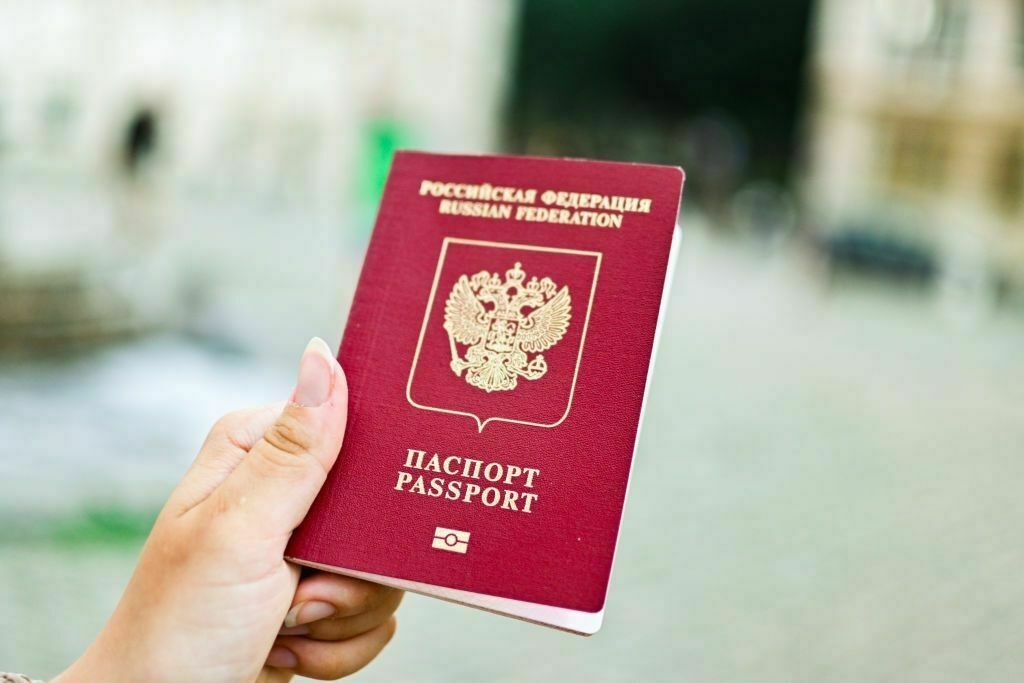
Argentina has uncovered a Russian intelligence operation working to spread pro-Kremlin disinformation and influence public opinion, Argentine presidential spokesperson Manuel Adorni announced on June 18, citing the country’s intelligence, according to AFP and Infobae.
The La Compania network, which is allegedly linked to the Russian government and the Kremlin’s Project Lakhta, was led by Russian nationals Lev Konstantinovich Andriashvili and his wife Irina Yakovenko, who are both residents of Argentina, according to authorities.
The U.S. Treasury Department has previously accused the Project Lakhta, reportedly formerly overseen by late Russian oligarch Yevgeny Prigozhin, of election interference in the United States and Europe.
Prigozhin led the Russian Wagner mercenary group that was deployed in some of the deadliest battles in Ukraine, like the siege of Bakhmut. The oligarch was killed in a plane crash under suspicious circumstances in August 2023, around two months after leading a brief armed rebellion against the Kremlin.
Andriashvili and Yakovenko are accused of receiving financial support to recruit local collaborators and run influence operations aimed at advancing Moscow’s geopolitical interests.
Their objective was to “form a group loyal to Russian interests” to develop disinformation campaigns targeting the Argentine state, Adorni said at a press briefing.
The spokesperson added that the alleged operation included producing social media content, influencing NGOs and civil society groups, organizing focus groups with Argentine citizens, and gathering political intelligence.
“Argentina will not be subjected to the influence of any foreign power,” Adorni said, noting that while some findings have been declassified, much of the investigation remains a state secret.
Since Russia’s full-scale invasion of Ukraine in February 2022, there has been a significant uptick in Russian migration to Argentina, some of which officials fear could be linked to covert intelligence operations.
Authorities reportedly said these espionage activities are often facilitated by a 2009 bilateral agreement between Argentina and Russia allowing visa-free travel, a deal that remains in effect despite growing security concerns.
In response to the threat, Adorni announced the creation of a new Federal Investigations Department (DFI) within Argentina’s Federal Police, modeled in part on the U.S. FBI. The agency will focus on countering organized crime, terrorism, and foreign espionage, with investigators trained in advanced techniques and bolstered by experts in law, psychology, and computer science.
’100 days of Russian manipulations’ — Ukraine blasts Moscow over disregarding US ceasefire effortA hundred days since the U.S. and Ukraine agreed on a ceasefire, “Russia continues to choose war,” Foreign Minister Andrii Sybiha said on June 19, urging international pressure to push Moscow toward peace.The Kyiv IndependentMartin Fornusek
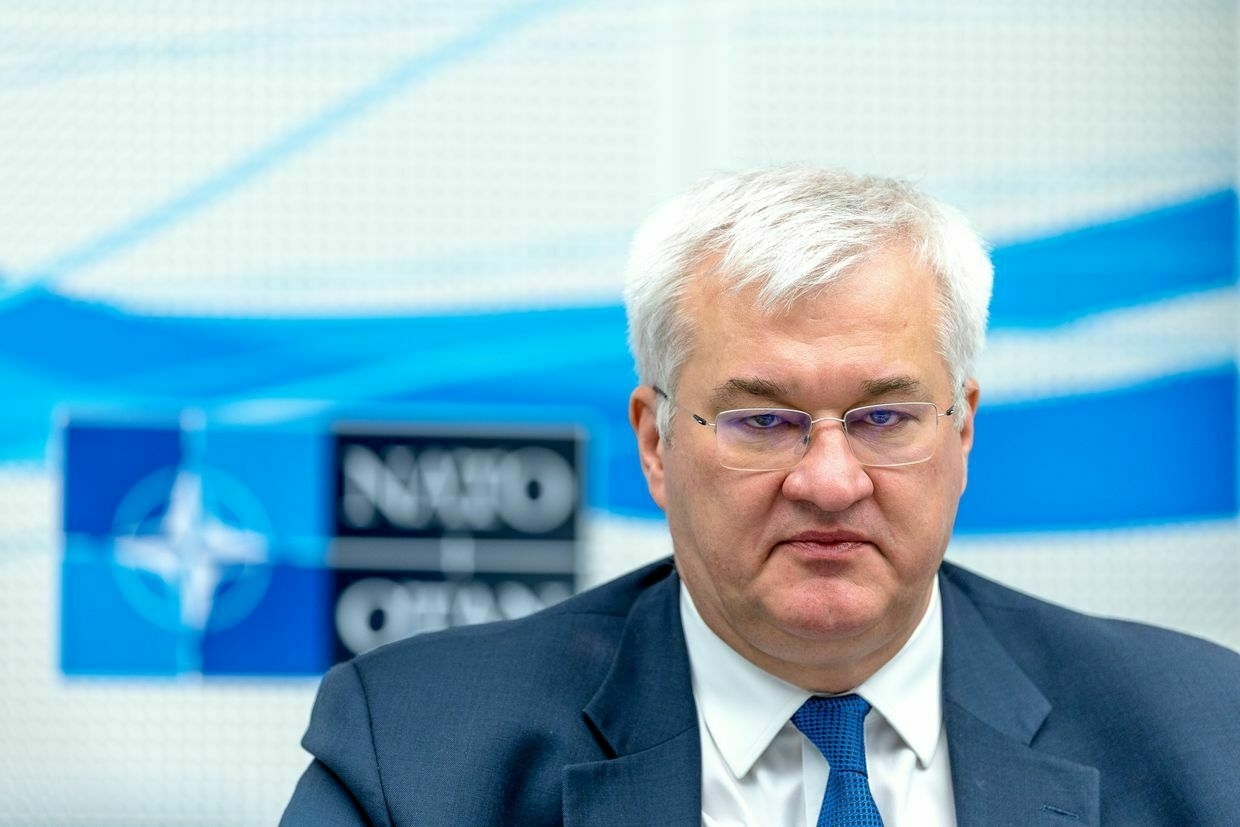
-
'100 days of Russian manipulations' — Ukraine blasts Moscow over disregarding US ceasefire effort
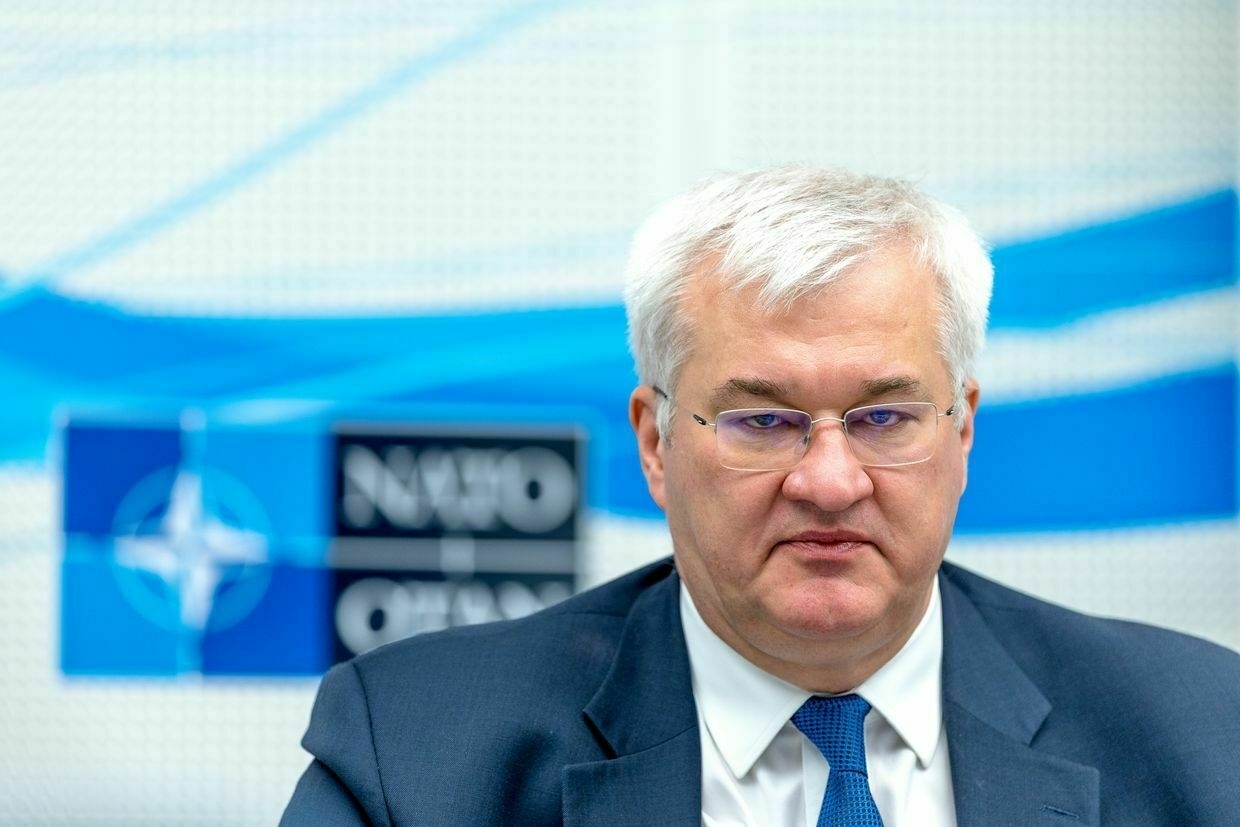
A hundred days since Ukraine agreed to a U.S. proposal for a ceasefire, “Russia continues to choose war,” Foreign Minister Andrii Sybiha said on June 19, urging international pressure to push Moscow toward ending the war.
“It has been exactly 100 days since Ukraine unconditionally accepted the U.S. peace proposal to completely cease fire, put an end to the killing, and move forward with a genuine peace process,” Sybiha said on X.
Ukraine backed the U.S. proposal for an unconditional 30-day ceasefire during talks in Jeddah on March 11. Russia has rejected the offer, instead pushing maximalist demands while intensifying attacks across Ukrainian cities.
“A hundred days of Russian manipulations and missed opportunities to end the war. A hundred days of Russia escalating terror against Ukraine rather than ending it,” Sybiha said.
Ukraine’s top diplomat stressed that Kyiv remains committed to peace, while Russia disregards U.S. efforts to “end the killing."
While U.S. President Donald Trump initially pledged to broker a swift peace deal between Kyiv and Moscow, the U.S. administration has become increasingly less engaged in negotiations as the progress stalls.
Trump has evaded calls for exerting additional pressure on Russia via sanctions, and compared the two warring sides to “two young children” who should be let “fight for a while” before being pulled apart.
The U.S. president has also become increasingly preoccupied with the Middle East amid escalating hostilities between Iran and Israel.
“It is time to act now and force Russia to peace. Peace through strength, increased sanctions, and enhanced capabilities for Ukraine,” Sybiha said.
European leaders have declared they are ready to impose additional sanctions on Russia as the 18th sanctions package is being prepared. In turn, a U.S. bill imposing heavy sanctions on Russian oil has been postponed, as other foreign policy issues dominate the agenda in Washington.
Russia turns sound into weaponWhen I was at school and learned about World War II, my grandmother told me what she remembered of her wartime childhood on the English coast. Growing up near a Royal Navy base, she survived countless nighttime air raids. Most of all, she remembered exactly how the Blitz sounded — theThe Kyiv IndependentElsa Court
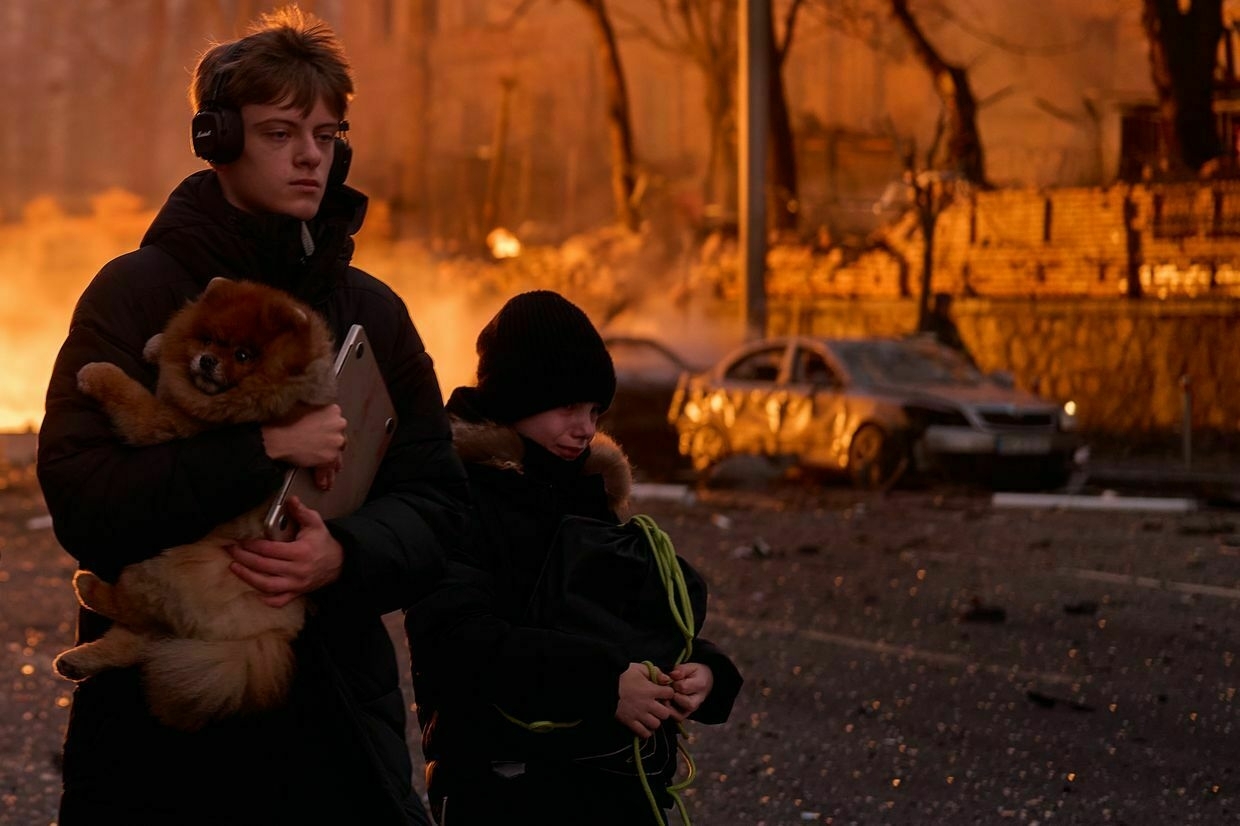
-
'If we don't help Ukraine further, we should start learning Russian,' EU diplomacy chief says
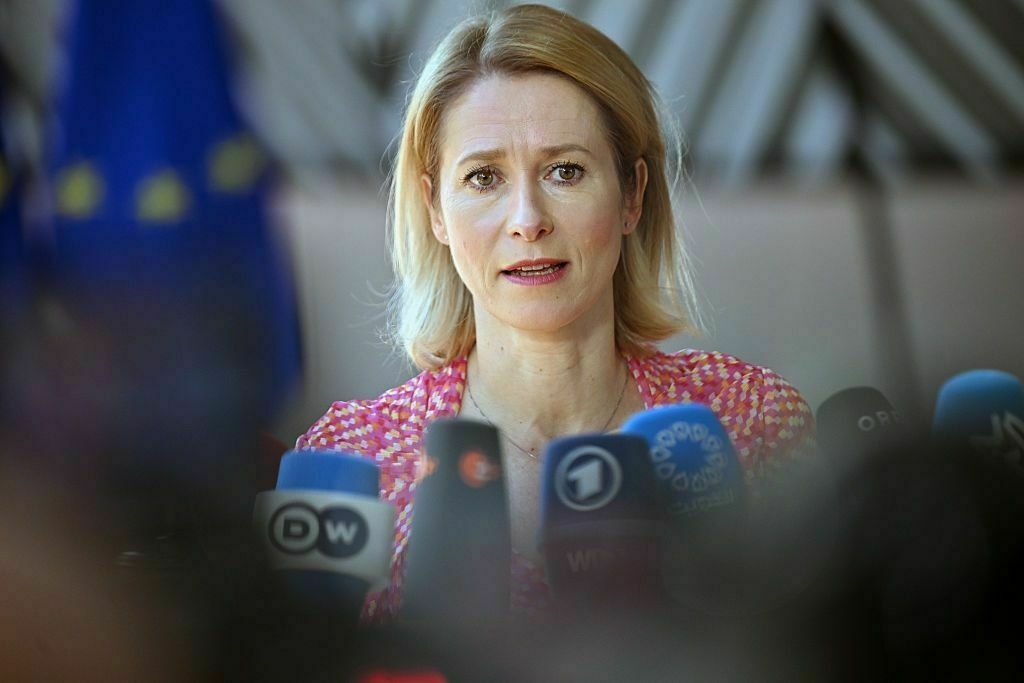
Failure to provide stronger military and financial support for Ukraine could leave Europe vulnerable to growing Russian influence, meaning Europeans might have to “start learning Russian,” the EU’s top diplomat, Kaja Kallas, said, the Guardian reported on June 17.
“We know that Russia responds to strength and nothing else,” Kallas said. She called Ukraine “Europe’s first line of defense” and emphasized the need for continued sanctions against Russia and more aid to Kyiv.
The comments come as Russian forces are intensifying their attacks on Ukrainian cities and the Kremlin continues to reject a push by Kyiv and its Western allies for an unconditional ceasefire.
“To quote my friend, NATO Secretary General Mark Rutte: if we don’t help Ukraine further, we should all start learning Russian,” Kallas said.
Kallas cited a sharp increase in Russia’s military spending, noting that Moscow is now allocating more money to defense than the EU combined, and more than its own health care, education, and social policies put together.
“This is a long-term plan for a long-term aggression,” she said.
In light of this, Kallas urged governments to adopt NATO’s new target of spending 5% of GDP on defense, warning of Russia’s hybrid warfare tactics, including airspace violations, attacks on critical infrastructure, and covert sabotage operations within EU borders.
The 5% defense spending target is expected to be formally adopted during the upcoming NATO summit, which will take place on June 24 and 25 in The Hague. U.S. President Donald Trump has insisted that the European allies increase their defense budgets.
Earlier, Kallas said Russian President Vladimir Putin “cannot be trusted” to mediate peace while continuing to bomb Ukrainian cities and civilians, as Moscow suggested to mediate negotiations between Israel and Iran amid growing escalation.
“Clearly, President Putin is not somebody who can talk about peace while we see actions like this,” she said during a June 17 briefing, after a massive Russian missile and drone strike on Kyiv killed at least 28 people and wounded over 130.
Kallas also reiterated her call for the EU to move forward with tightening the oil price cap on Russian exports, even without U.S. backing. She warned that the ongoing Israel-Iran crisis could cause oil prices to spike, boosting Russia’s war revenues.
The EU is currently preparing its 18th sanctions package against Moscow, targeting energy, defense, and banking sectors. The 17th round of sanctions came into effect in May.
Putin says he’s ready to meet Zelensky if West ‘stops pushing’ Ukraine to fightRussia wants to end the war in Ukraine “as soon as possible,” preferably through peaceful means, and is ready to continue negotiations — provided that Kyiv and its Western allies are willing to engage, Vladimir Putin said.The Kyiv IndependentOlena Goncharova
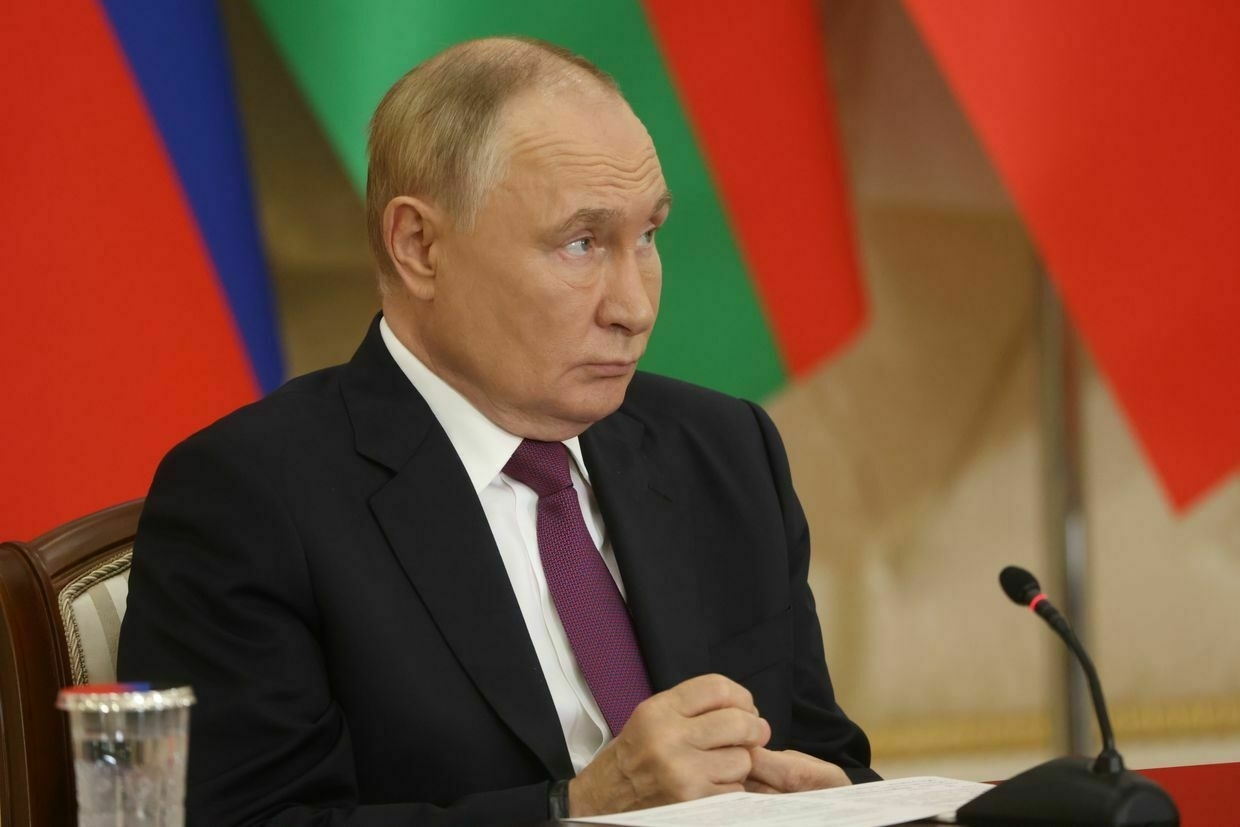
-
Russia injures at least 28 across Ukraine over past day
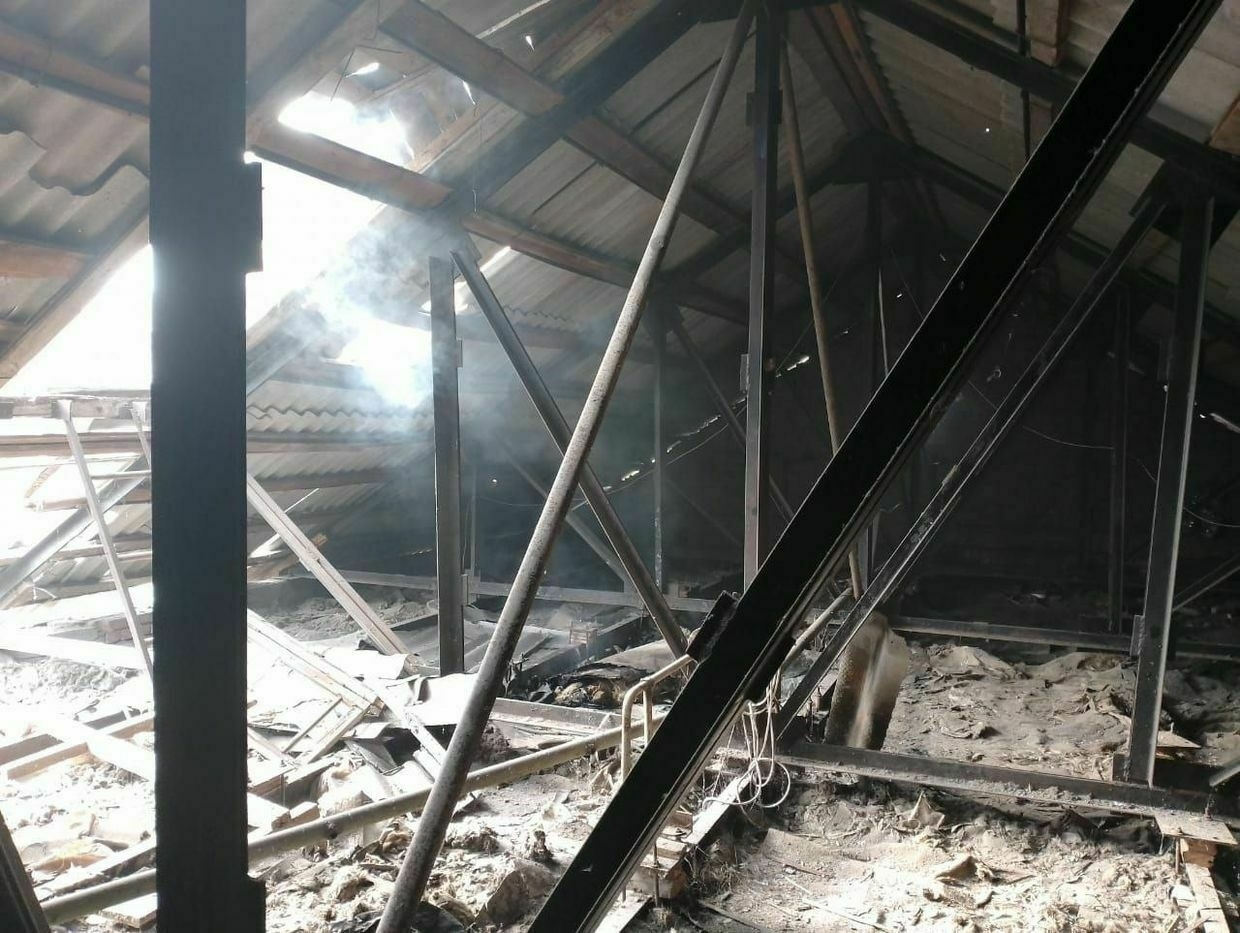
Russian drone and artillery strikes injured at least 28 civilians over the past 24 hours in Ukraine, regional officials reported on June 19.
According to Ukraine’s Air Force, Russian forces launched 104 Shahed-type drones and decoy unmanned aerial vehicles (UAVs) overnight from Russian territory and occupied Crimea.
Ukrainian air defenses shot down 40 drones, while 48 disappeared from radars or were intercepted by electronic warfare.
In Kherson Oblast, nine people were injured amid heavy shelling and drone attacks on dozens of settlements, including Kherson city, Governor Oleksandr Prokudin said. Russian forces struck social infrastructure facilities, three apartment buildings, and 10 houses. A gas pipeline, an ambulance base, a fire station, and several vehicles were also damaged.
In Donetsk Oblast, 13 people were wounded in Russian strikes across the region, Governor Vadym Filashkin said.
In Dnipropetrovsk Oblast, five people were injured in morning attacks on the Nikopol district, including an 11-year-old child who was hospitalized alongside three adults, Governor Serhii Lysak reported. One person is in serious condition, while others are in moderate condition or recovering at home.
In Zaporizhzhia Oblast, one person was injured, Governor Ivan Fedorov said. Over the past day, Russian forces carried out 410 strikes on 12 settlements in the oblast, including 10 air strikes and 264 drone attacks. Additional shelling from artillery and multiple launch rocket systems damaged at least 94 houses, vehicles, and infrastructure sites.
‘Do me a favor Vladimir, mediate Russia first’ — Trump roasts Putin over Israel, Iran offer“I said, Vladimir, let’s mediate Russia first. You can worry about this later,” U.S. President Donald Trump said.The Kyiv IndependentTim Zadorozhnyy
